|
|

|
Day 6, Friday 23 November
Delayed……..With such I light day yesterday there seems plenty of time even for an earlier start on tour this morning. At 7.30am I pop out to catch traffic at the railway station but I’m out for a good hour. Considering what I achieve I start to wonder if I should have put more effort into that earlier start as it’s still not much before 10am before we leave. A couple of sites that could have been covered yesterday are first on the list.
Delayed……..With such I light day yesterday there seems plenty of time even for an earlier start on tour this morning. At 7.30am I pop out to catch traffic at the railway station but I’m out for a good hour. Considering what I achieve I start to wonder if I should have put more effort into that earlier start as it’s still not much before 10am before we leave. A couple of sites that could have been covered yesterday are first on the list.
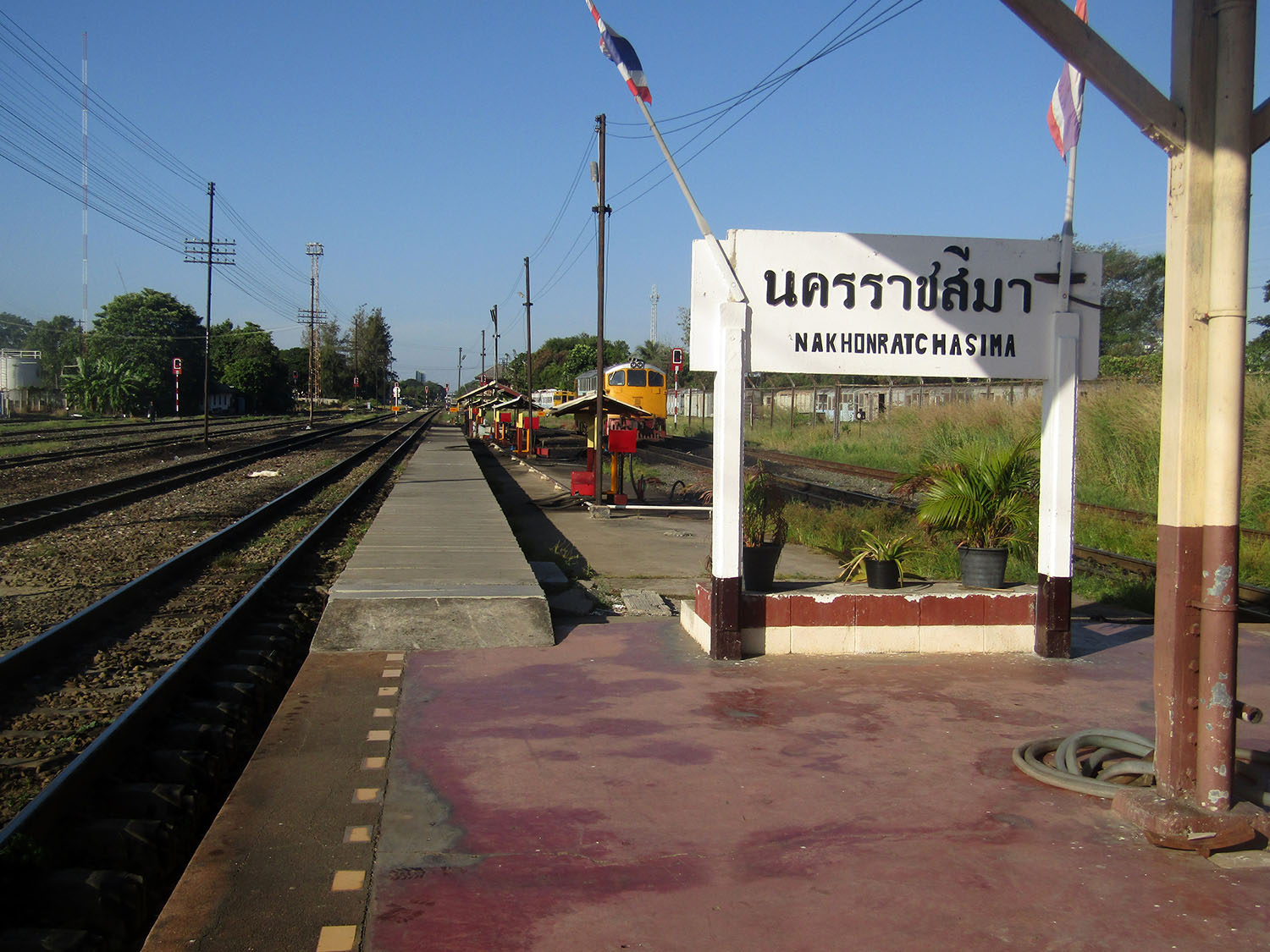
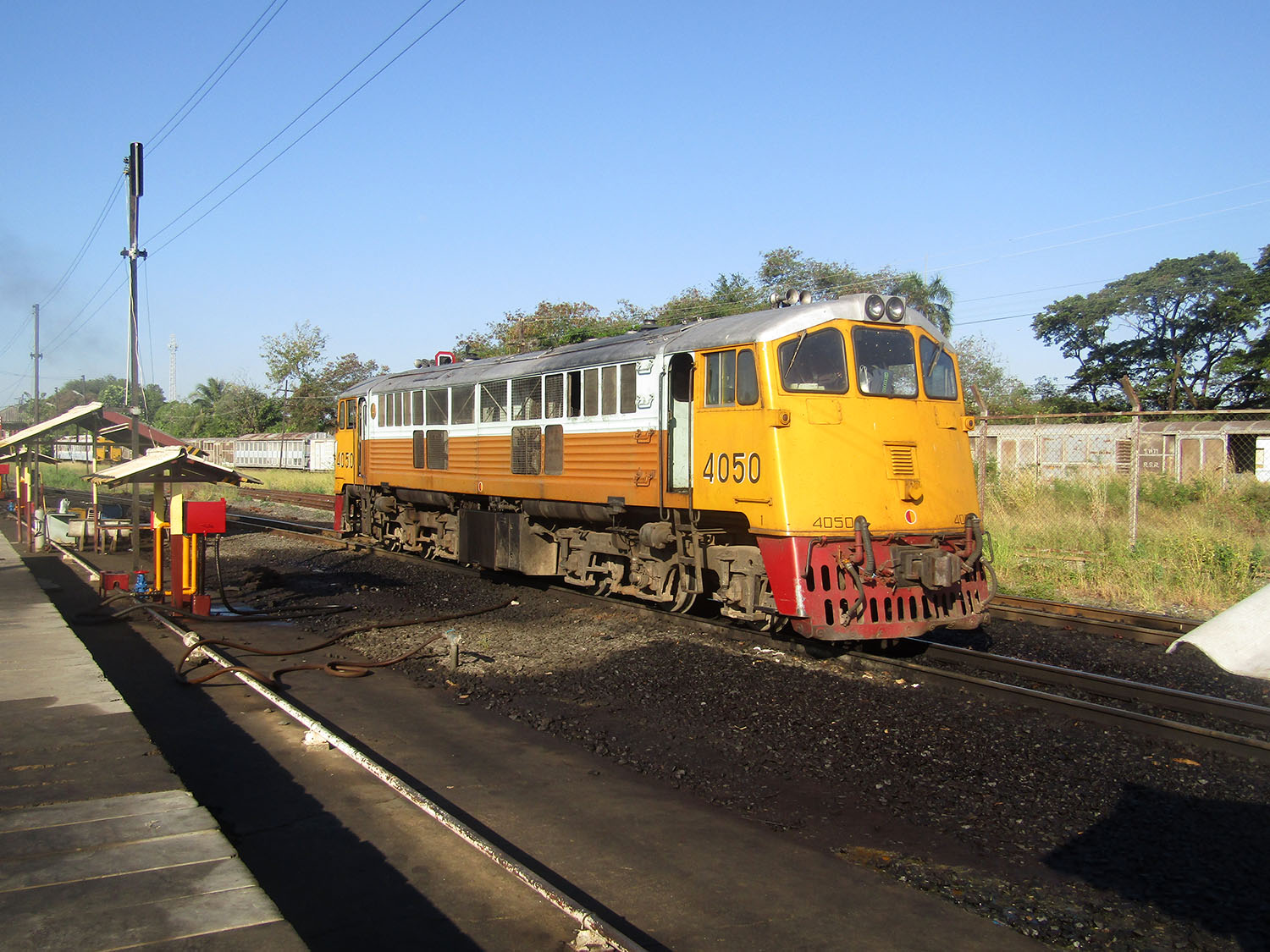
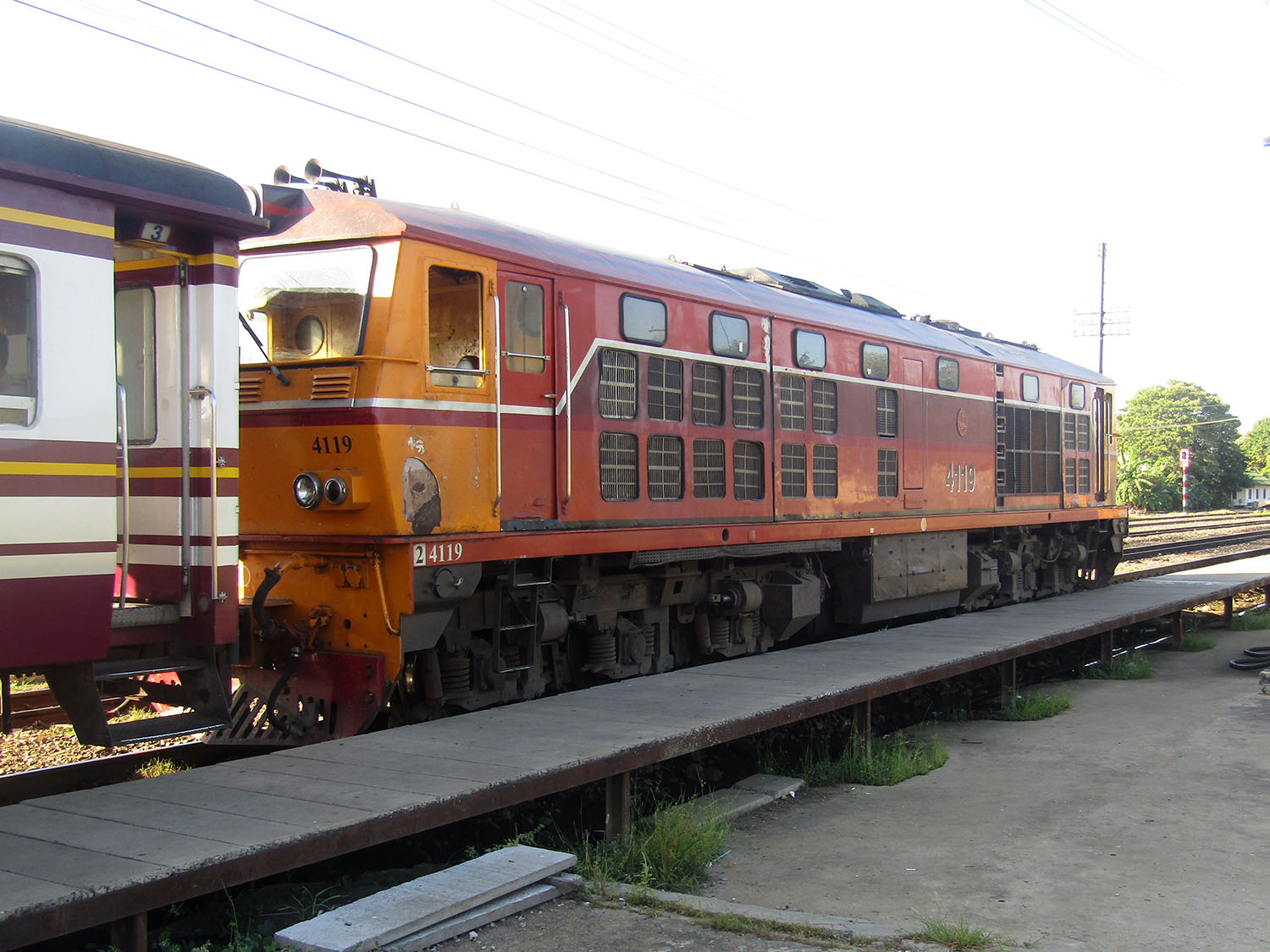 Nakhon Ratchasima Railway Station, Nakhon Ratchasima
Nakhon Ratchasima Railway Station, Nakhon Ratchasima
Wat Phra Narai Maharat……..Wat Phra Narai Maharat is a first-class royal temple situated within the old city walls. Looking around this temple you would not think it had any history. In fact, the viharn is modern; they have only recently started adding mural paintings to the plain interior. Presently adorning the exterior are photographs and biographical detail regarding the current King Rama X who recently paid a visit here. Unfortunately, there is nothing in English on site I can use but with the help of some translation I establish that the original temple here dated from the late Ayutthaya period. Nothing on site suggests that, but apparently the Buddha image in the viharn covers an older one.
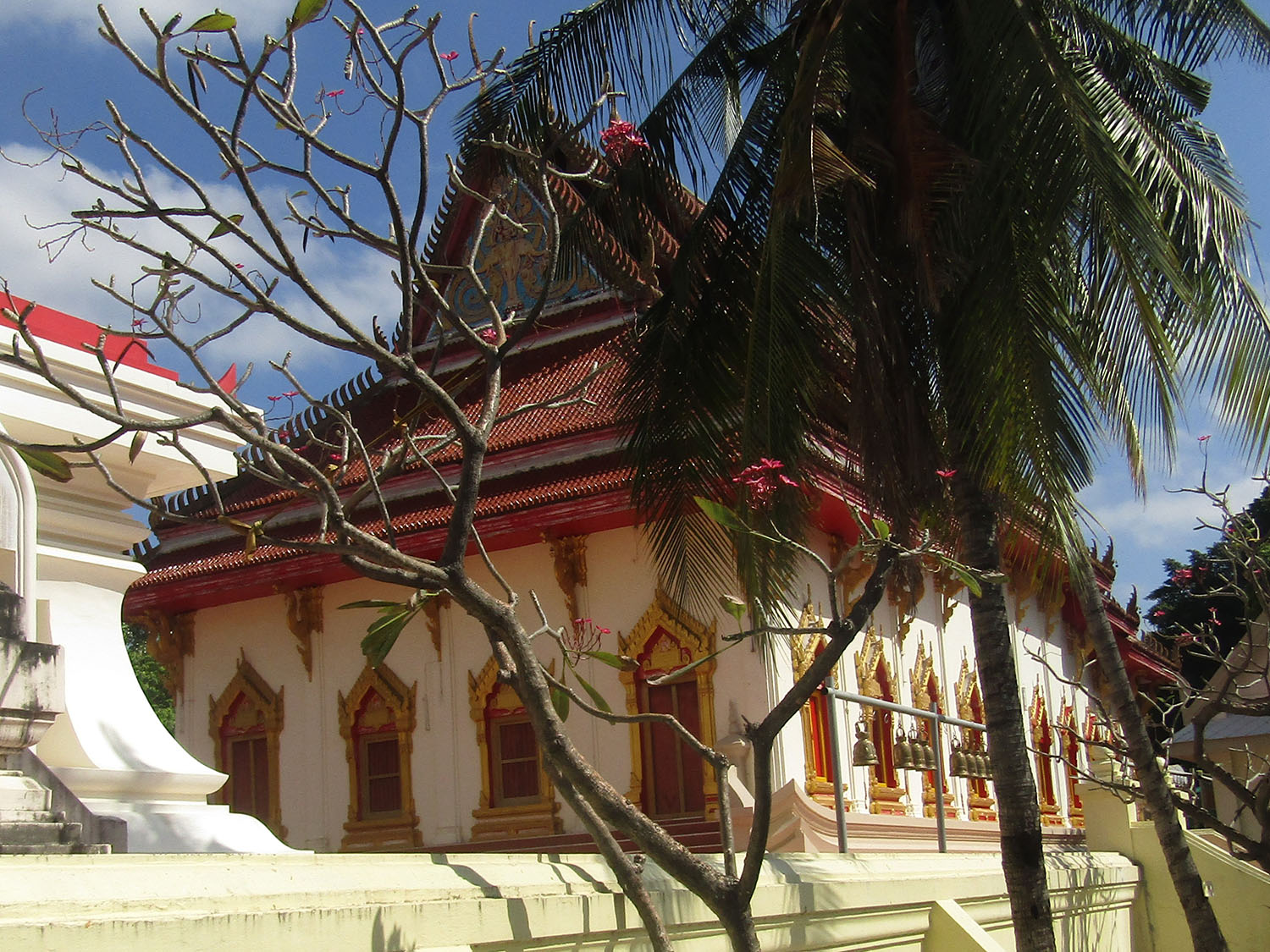
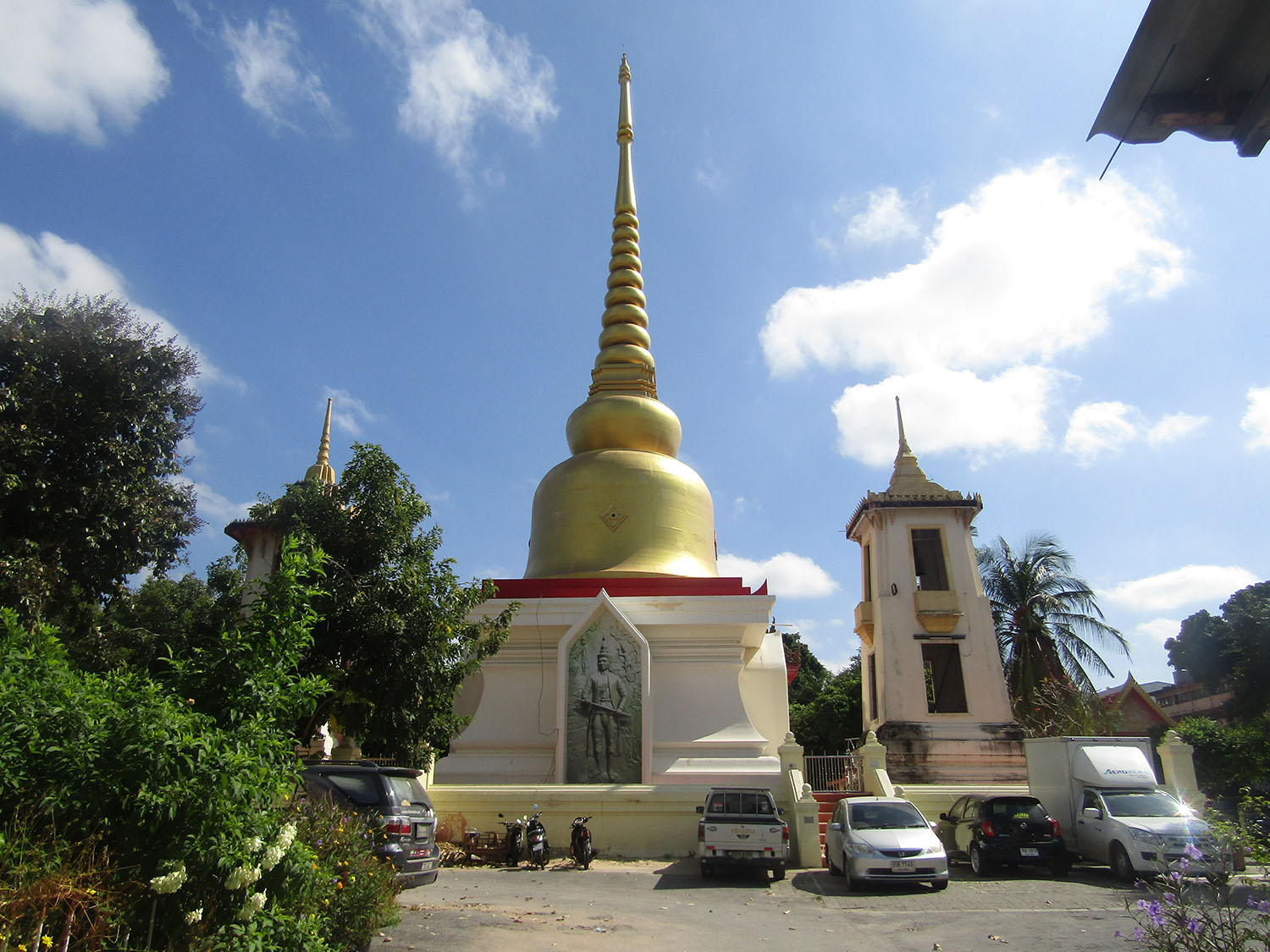
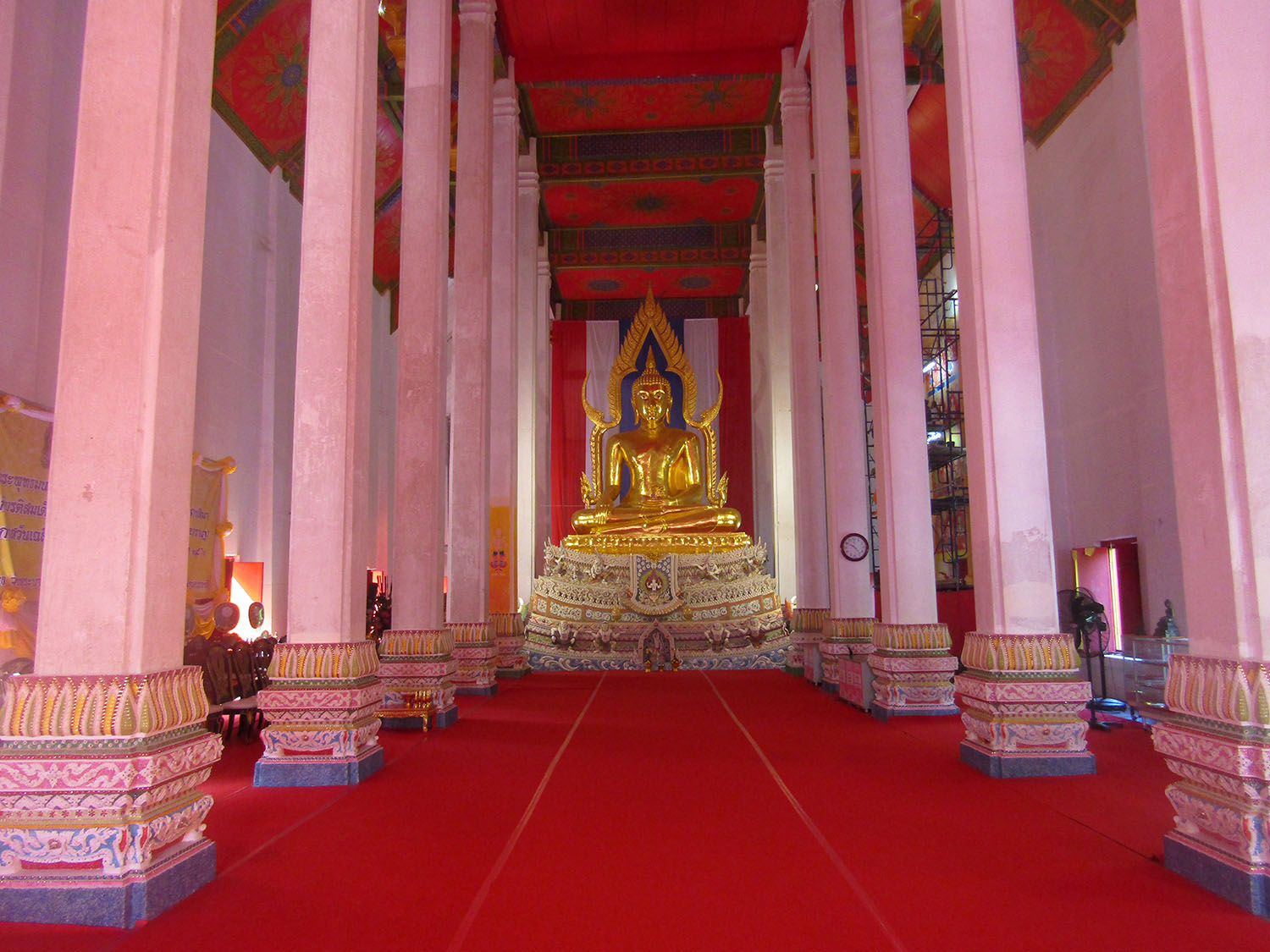
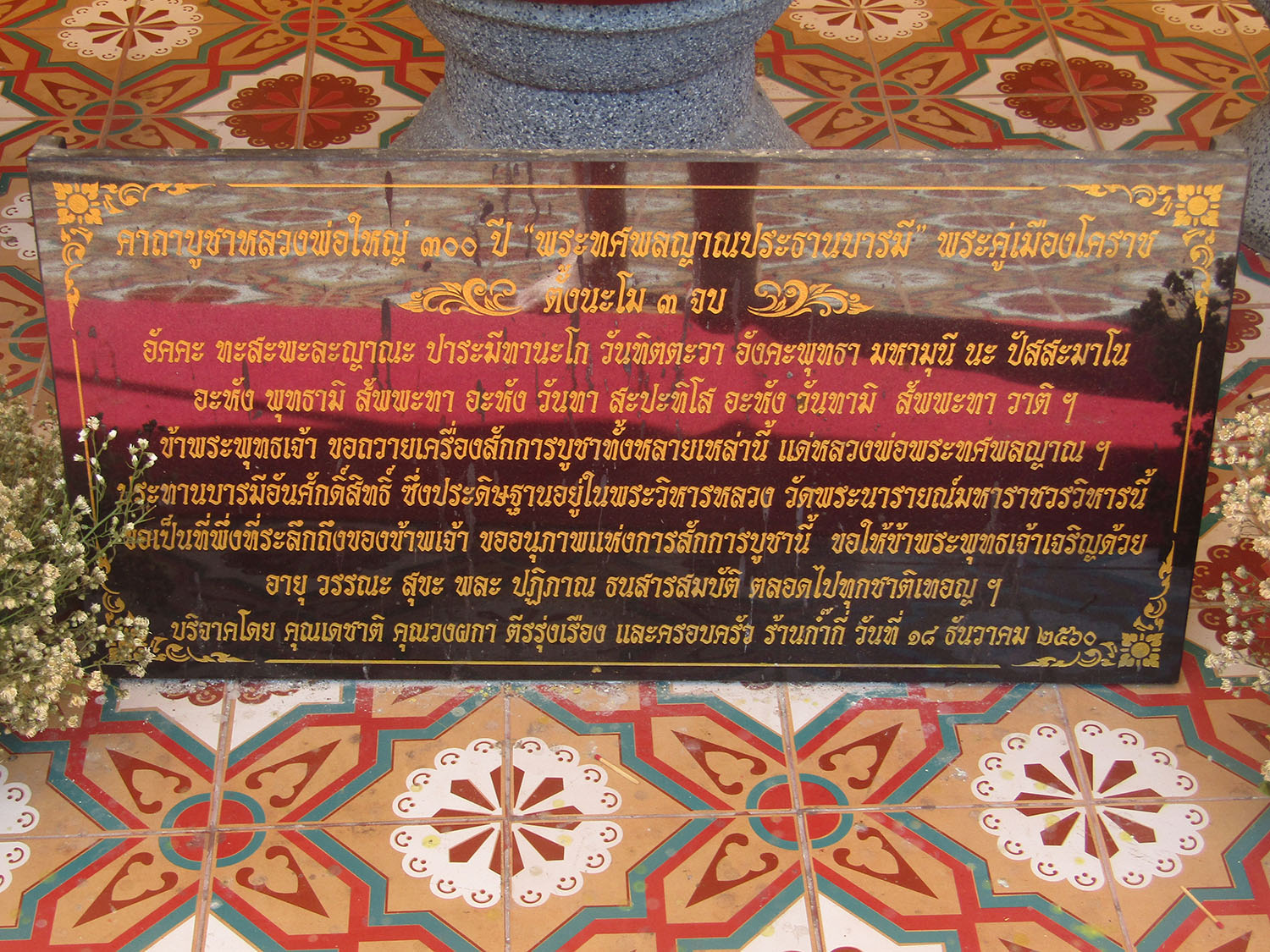
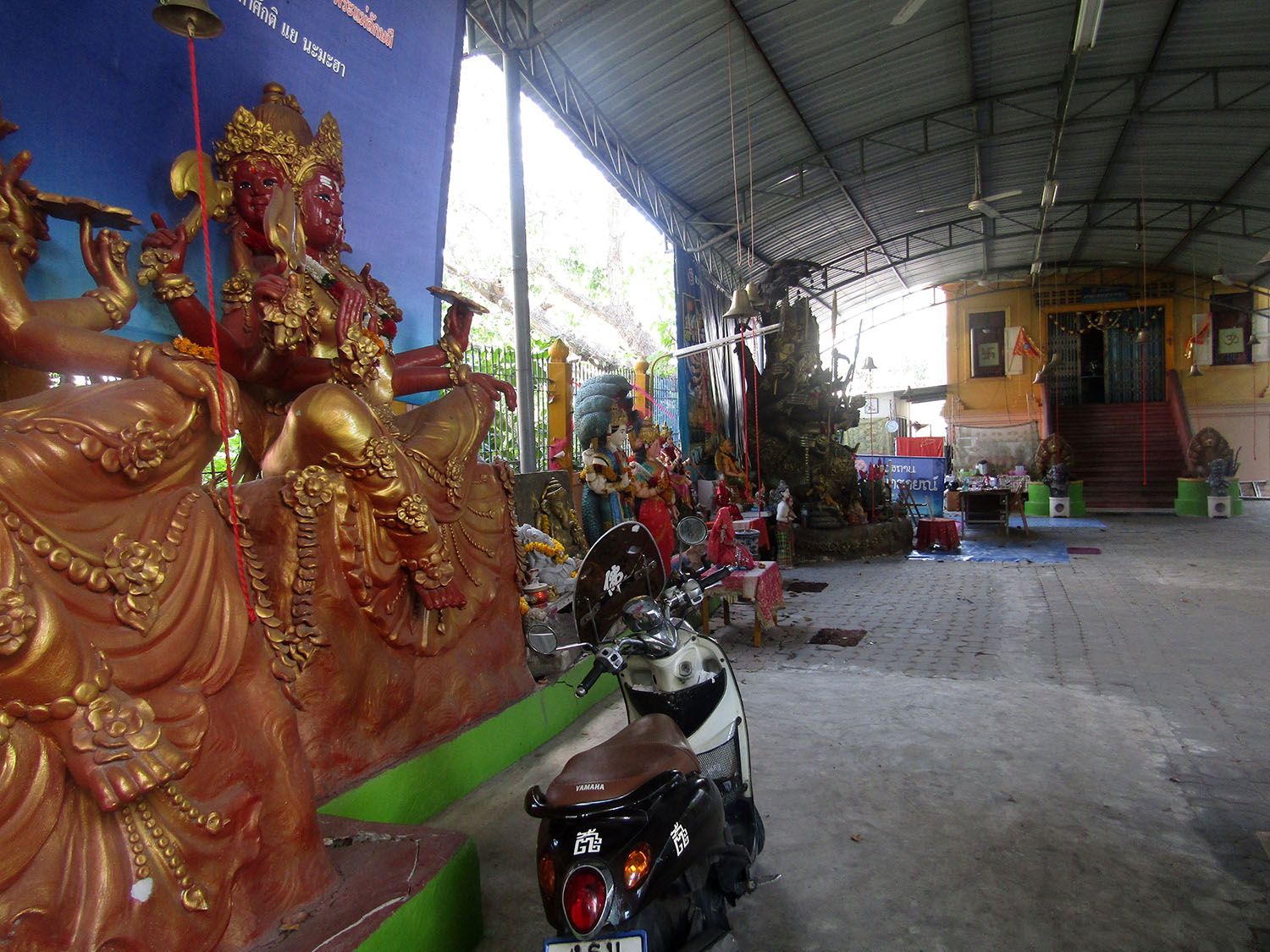
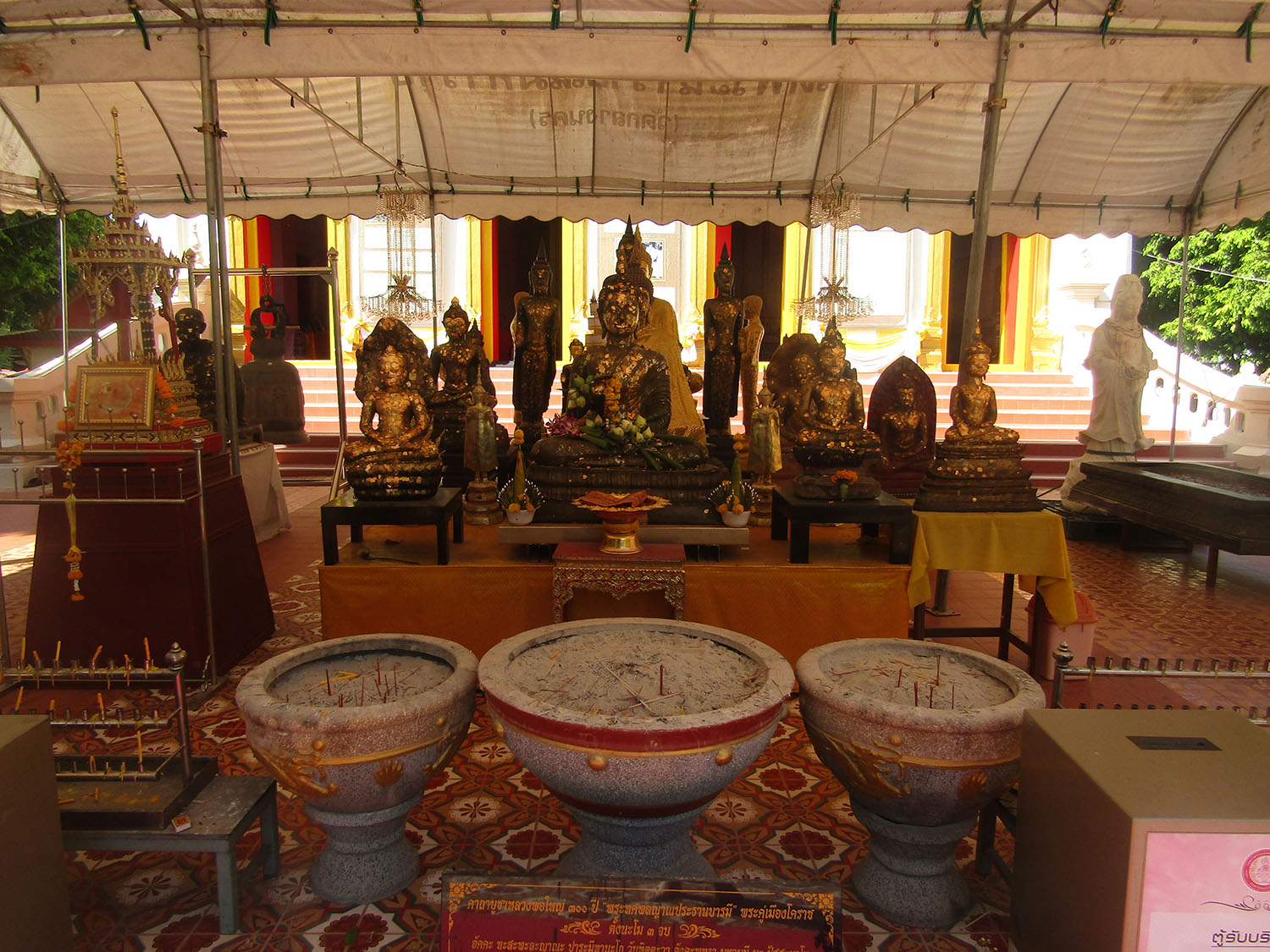 Wat Phra Narai Maharat, Nakhon Ratchasima
Wat Phra Narai Maharat, Nakhon Ratchasima
City Pillar Shrine……..The City Pillar Shrine is located at the corner of Chumphon Road and Chainarong Road. This symbol of the city’s foundation and prosperity is currently receiving a face-lift.
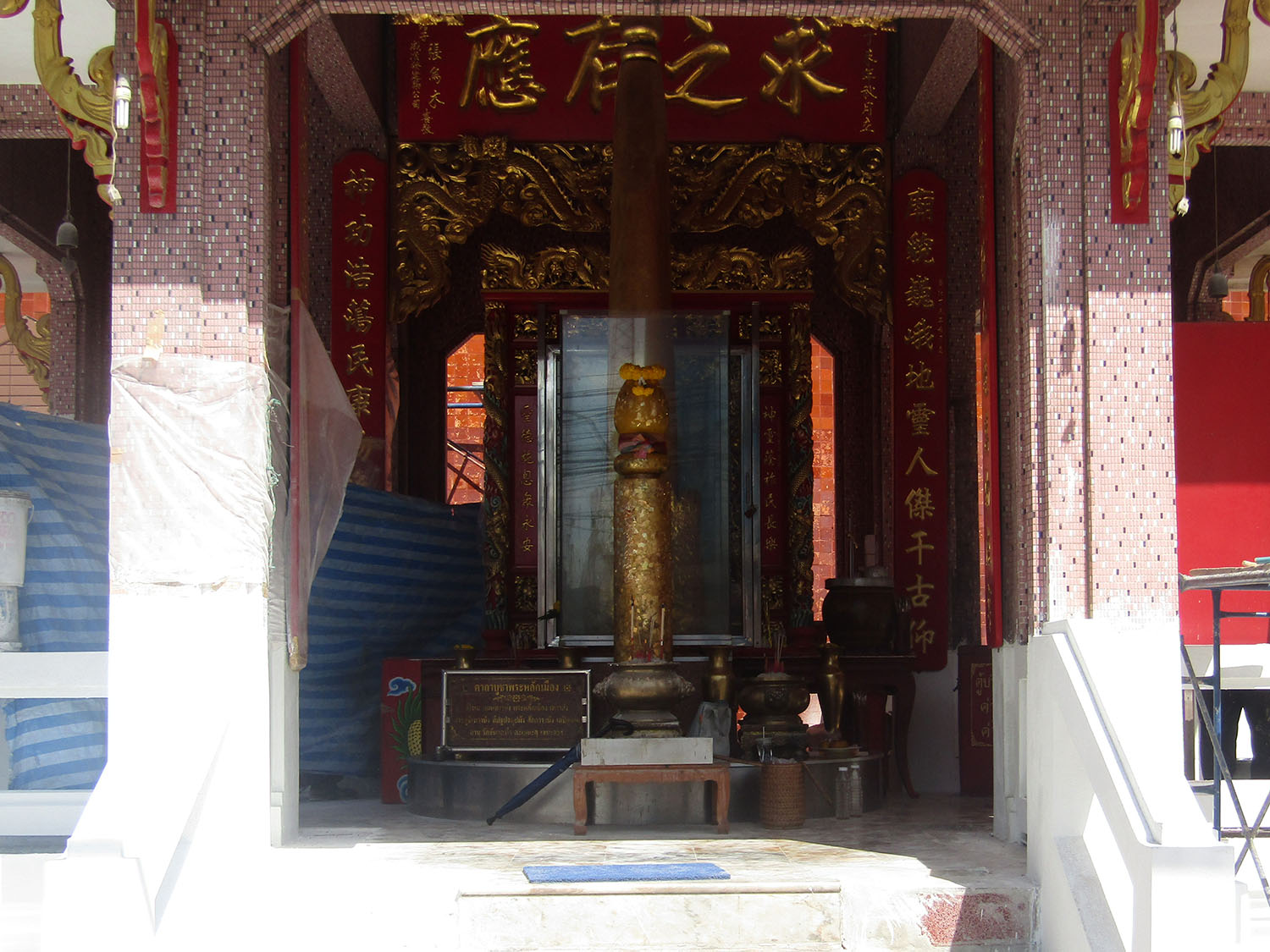
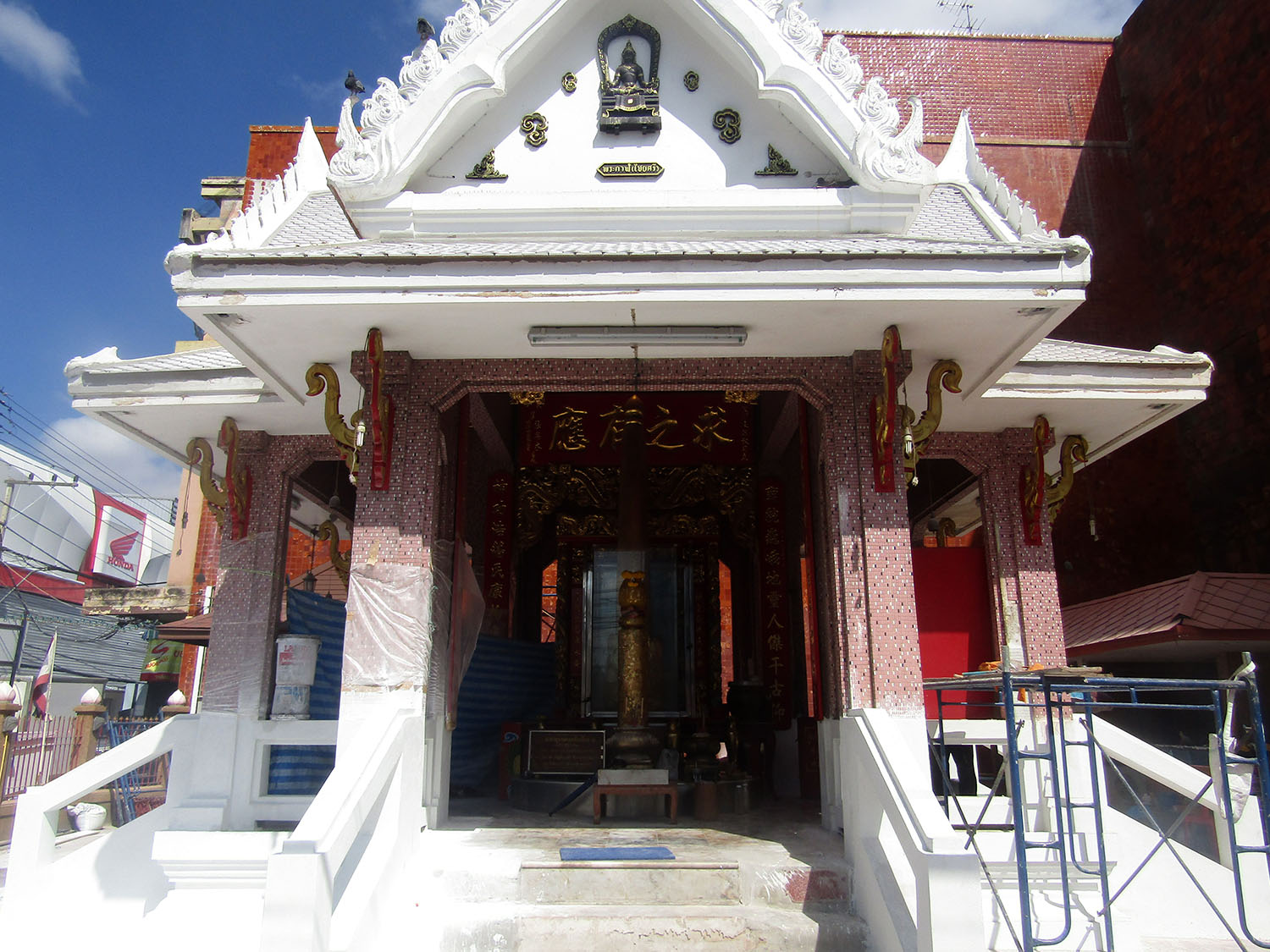
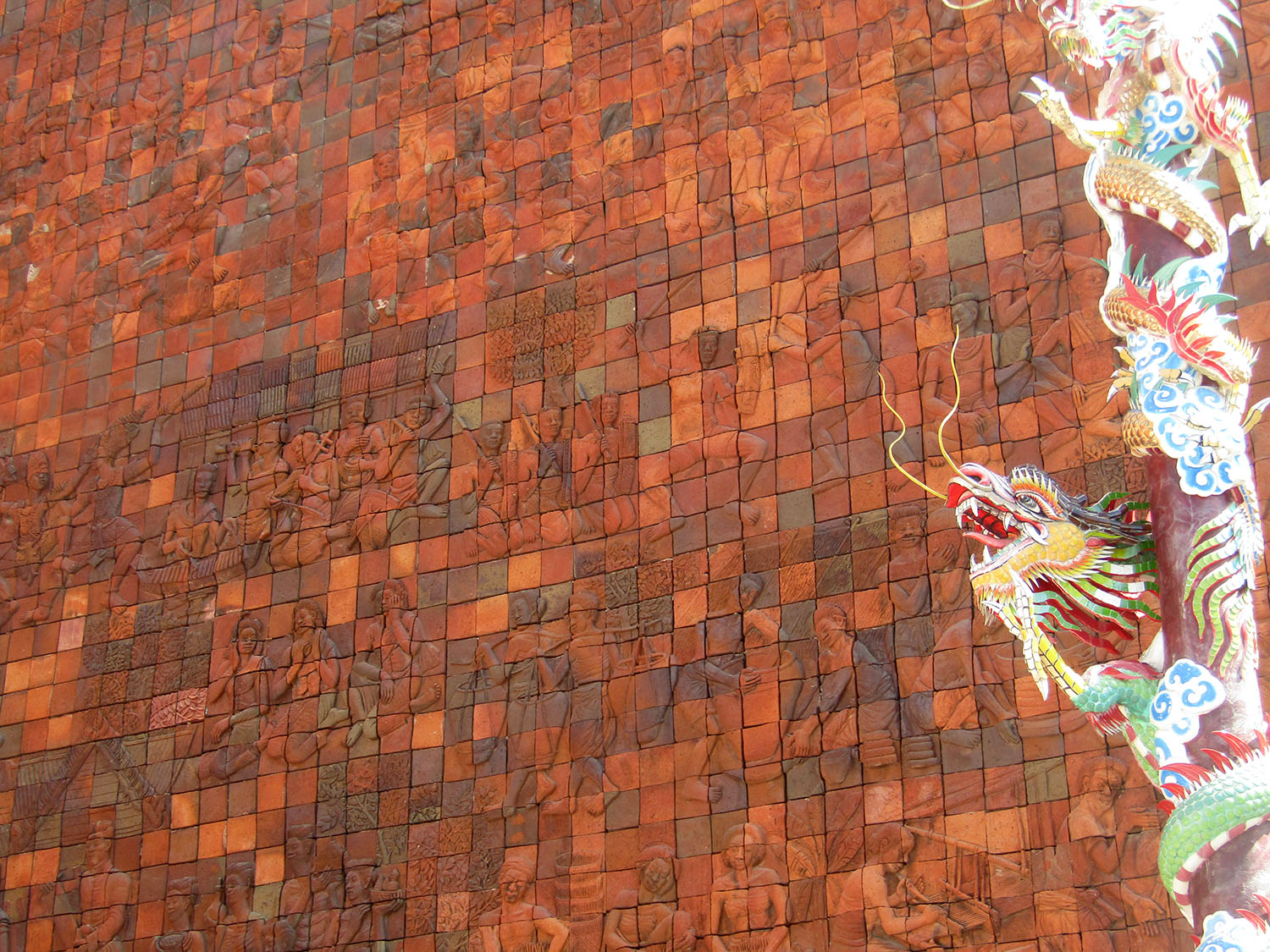 City Pillar Shrine, Nakhon Ratchasima
City Pillar Shrine, Nakhon Ratchasima
Sung Noen……..Sung Noen district lies to the west of Nakhon Ratchasima and is one of the five districts of the new Geopark granted special status by UNESCO. As I retrace my steps from two days ago. I’m about to find out what that special status means and why I find it necessary to give Sung Noen my undivided attention now.
Muang Sema……..around 11.30am I arrive at Muang Sema. Muang in Thai translates as ‘city’. This is an archaeological site of some importance as it has provided object for study and research into not only local history but for the country as a whole.
Located in tambon Sema, Muang Sema comprises a large enclosure measuring 3 km. by 5km. From recent excavations, it is known that occupation of the site began in the 7th to 8th Century. Cultural materials have close similarities with those from Dvaravati sites in central Thailand. The occupation continued into the Khmer period (10th -13th centuries A.D.). An inscription from Bor-E-Ka sanctuary at Muang Sema mentions the overlord named Sri Canasa and the date 868 A.D. Another inscription was also found here which mentions the Khmer King Jayavaraman V who ruled in Angkor from 968 to 1001. The site consists of 7 numbered monuments recorded by the Fine Arts Department. The objects found on this site confirm that this was a Buddhist site with later Hindu influence. The objects are now in local and national museums.
Muang Sema……..around 11.30am I arrive at Muang Sema. Muang in Thai translates as ‘city’. This is an archaeological site of some importance as it has provided object for study and research into not only local history but for the country as a whole.
Located in tambon Sema, Muang Sema comprises a large enclosure measuring 3 km. by 5km. From recent excavations, it is known that occupation of the site began in the 7th to 8th Century. Cultural materials have close similarities with those from Dvaravati sites in central Thailand. The occupation continued into the Khmer period (10th -13th centuries A.D.). An inscription from Bor-E-Ka sanctuary at Muang Sema mentions the overlord named Sri Canasa and the date 868 A.D. Another inscription was also found here which mentions the Khmer King Jayavaraman V who ruled in Angkor from 968 to 1001. The site consists of 7 numbered monuments recorded by the Fine Arts Department. The objects found on this site confirm that this was a Buddhist site with later Hindu influence. The objects are now in local and national museums.
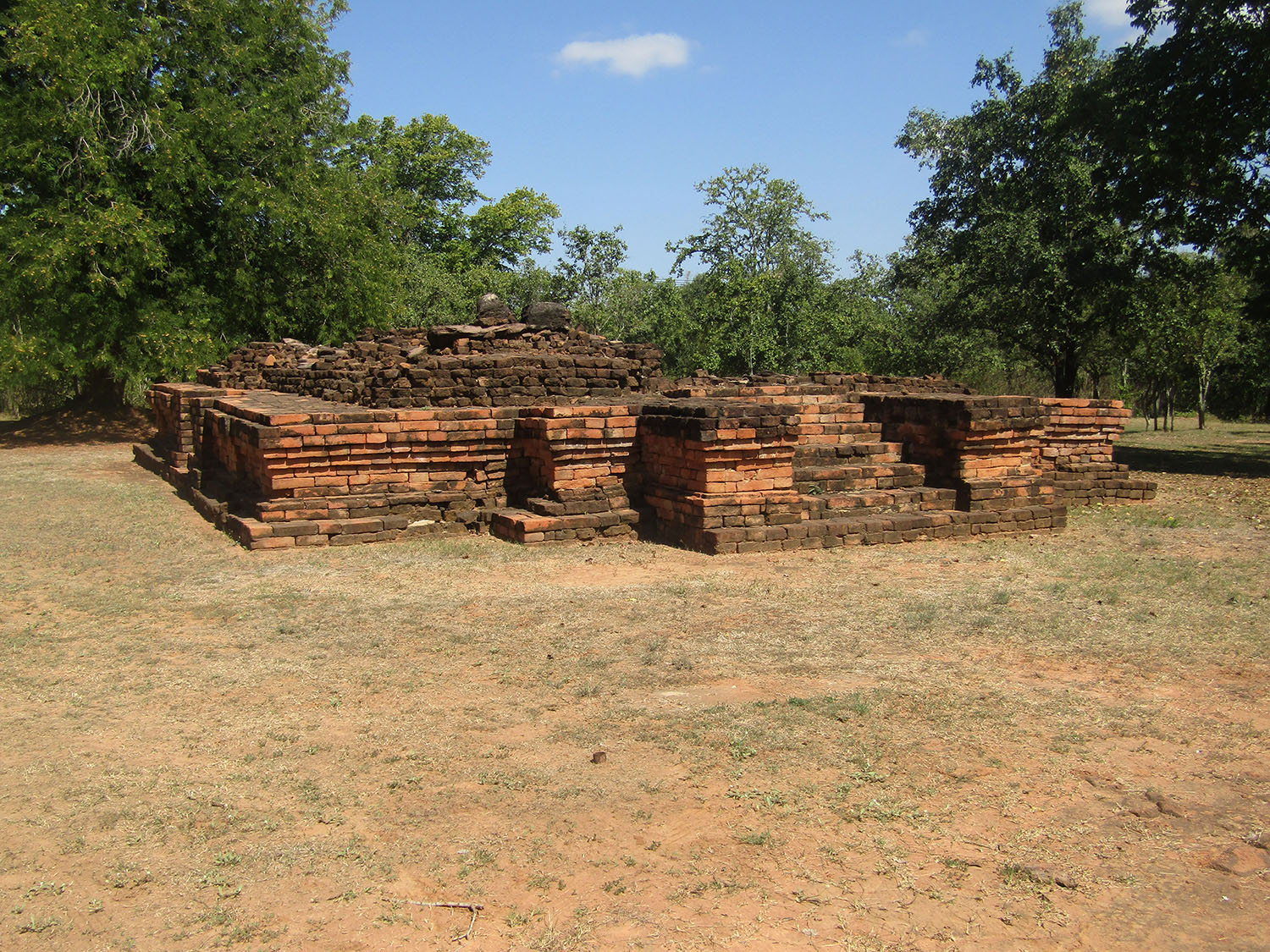
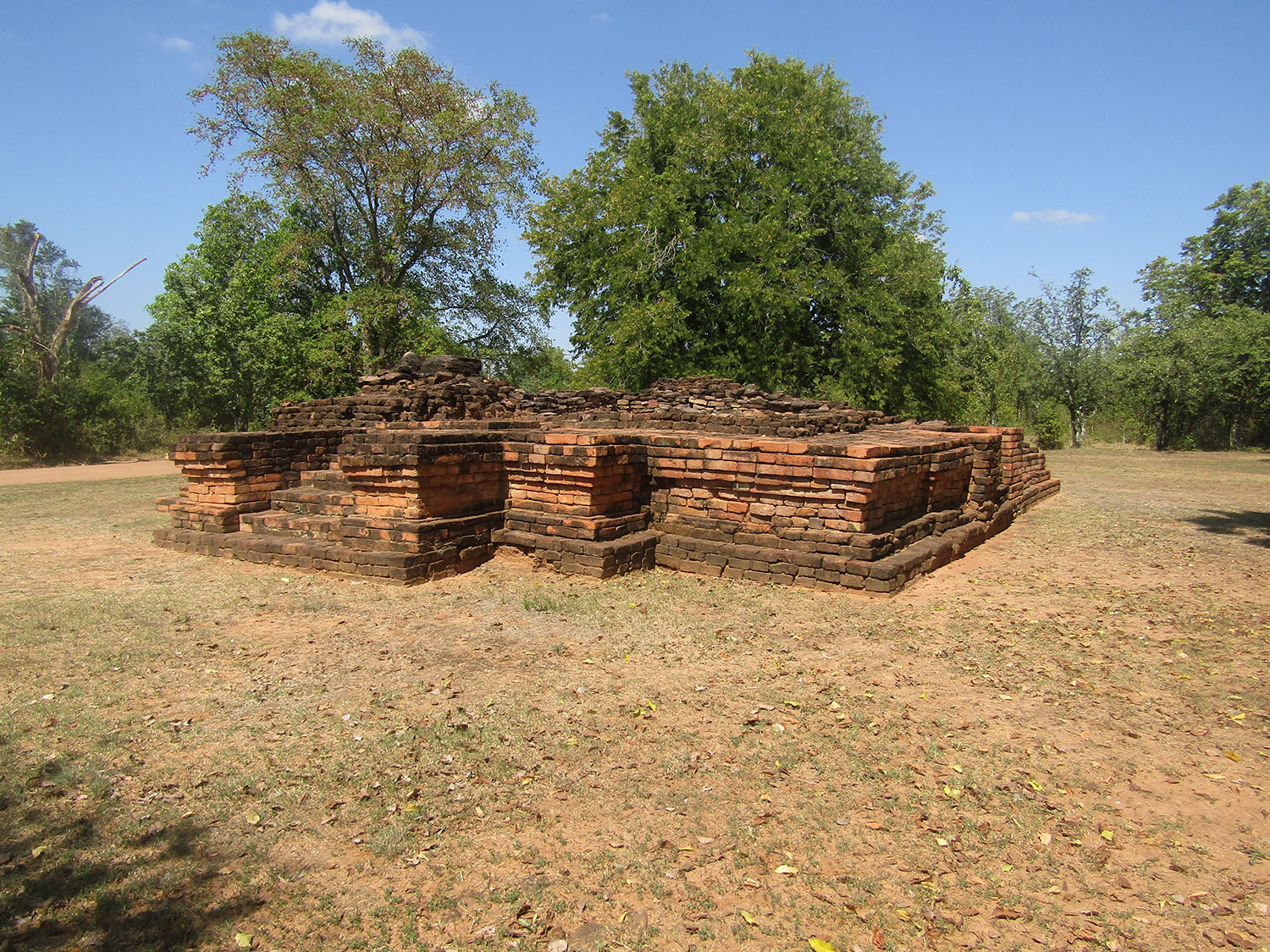
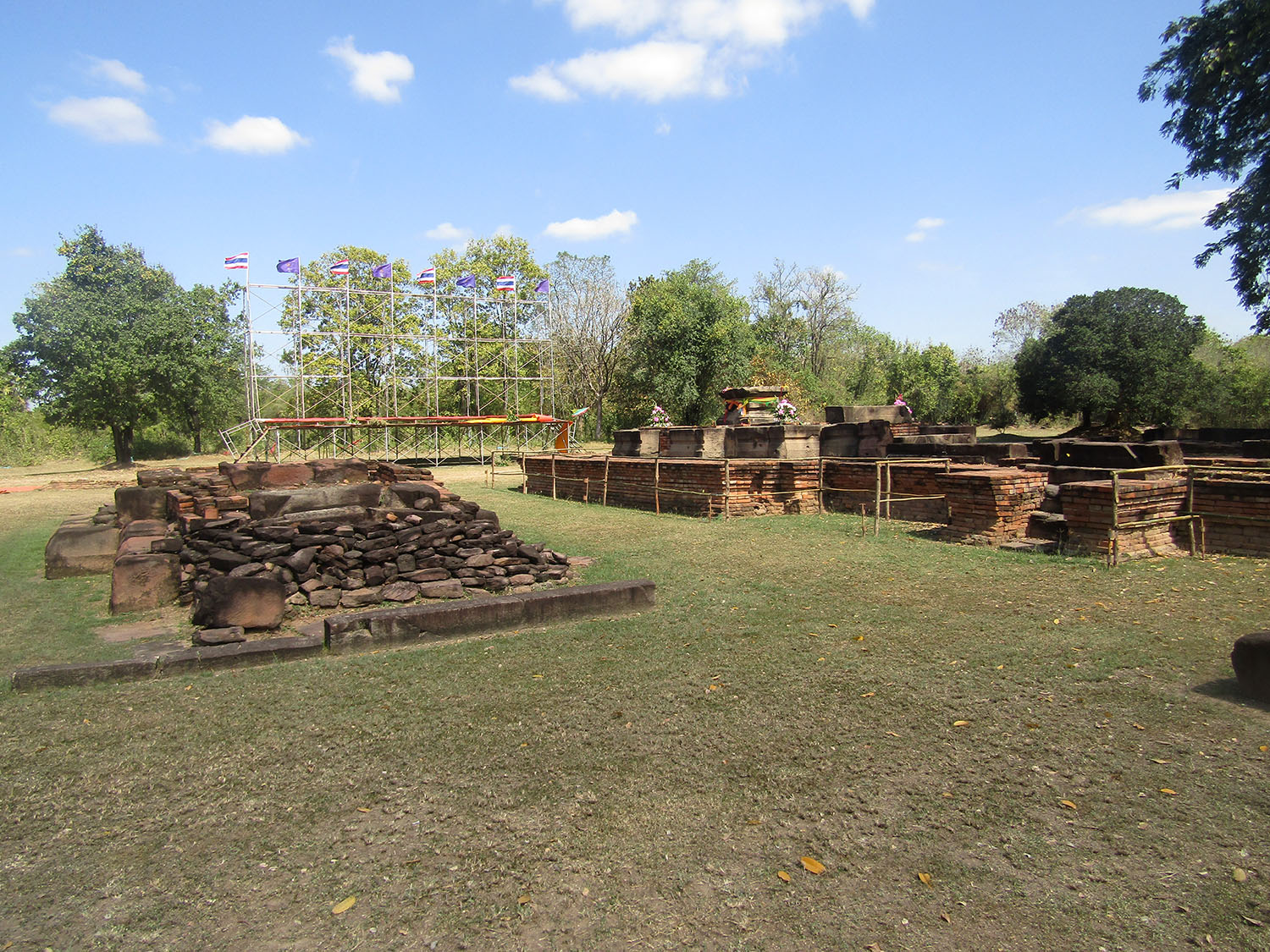
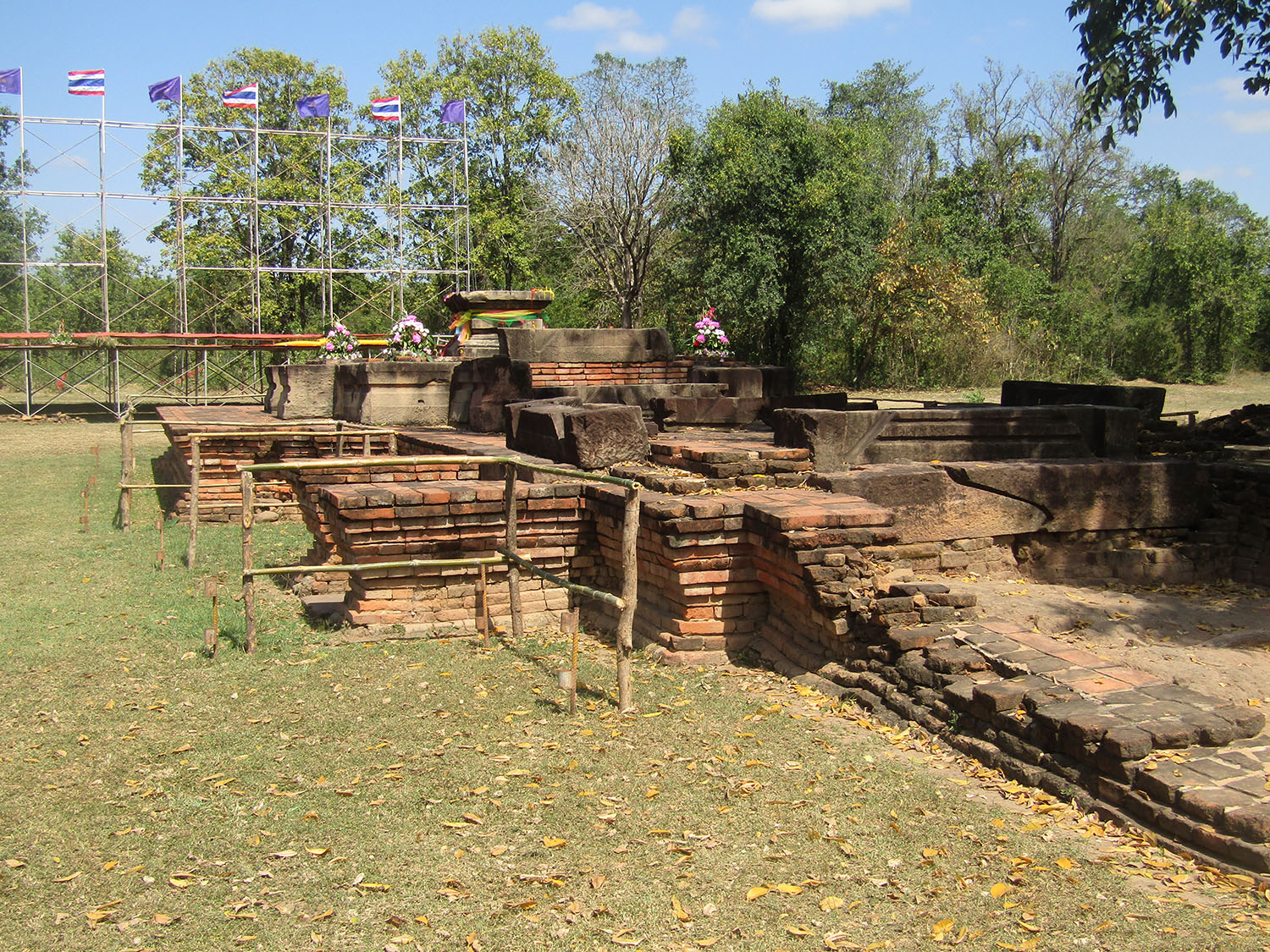
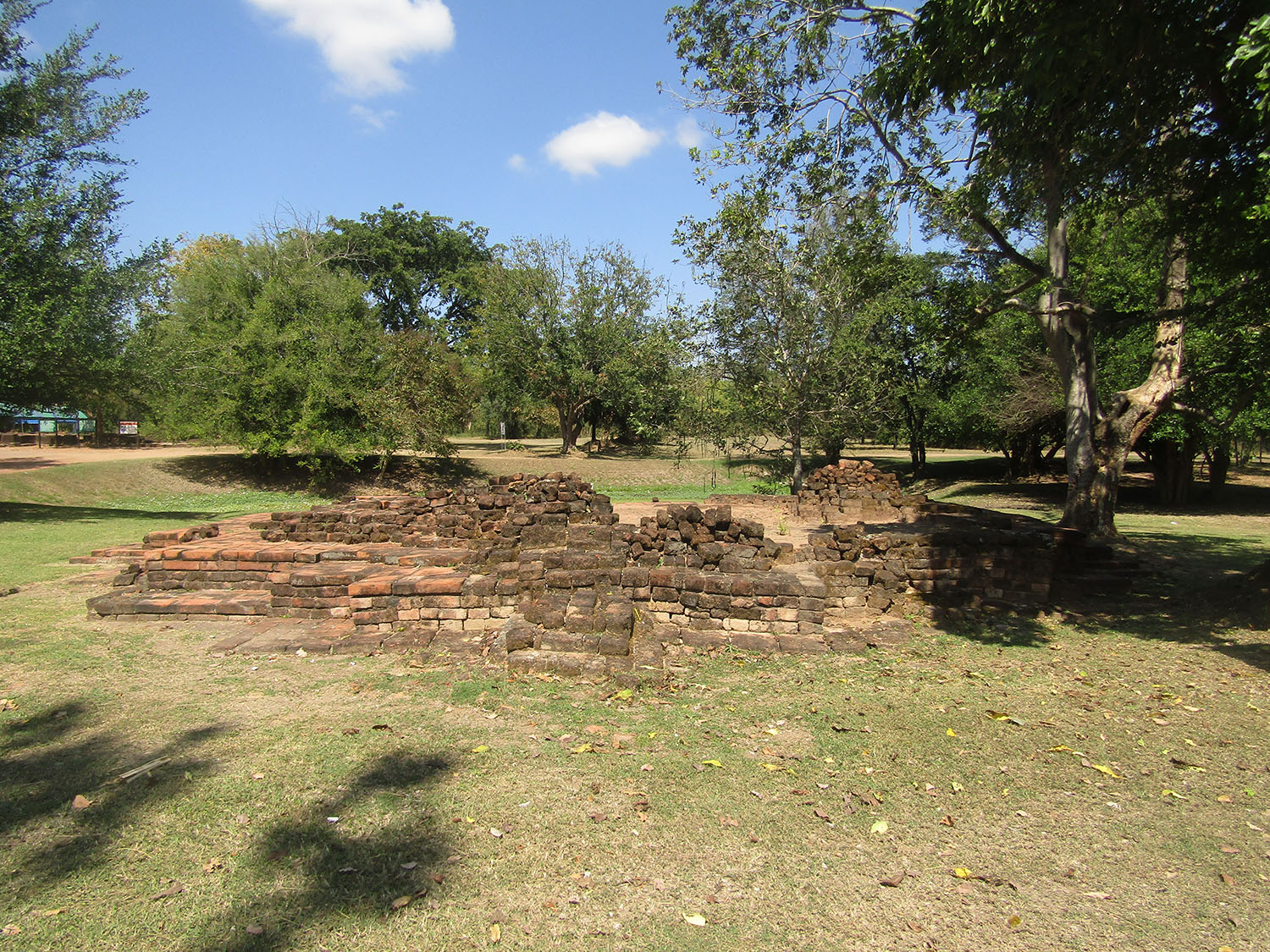
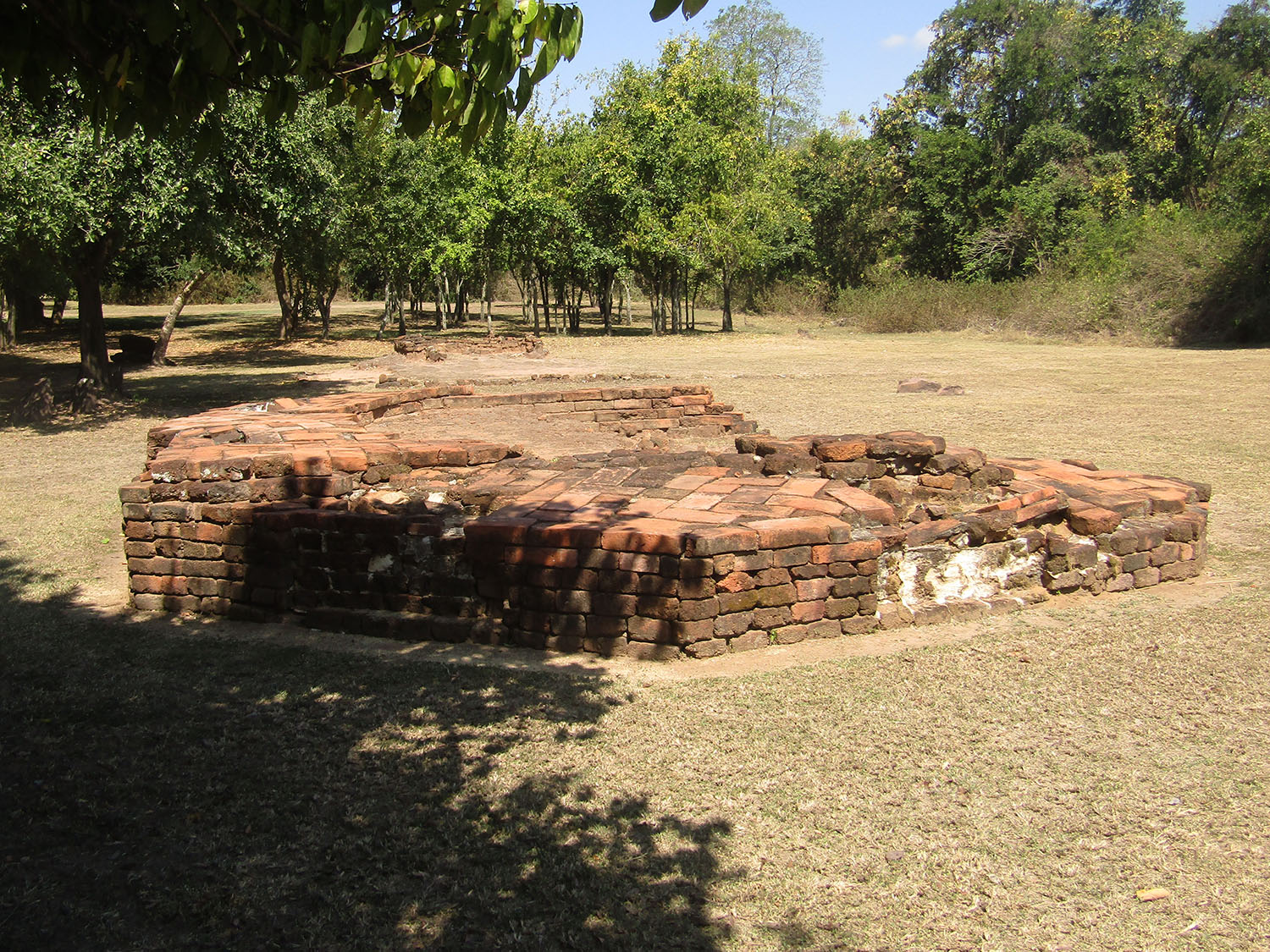
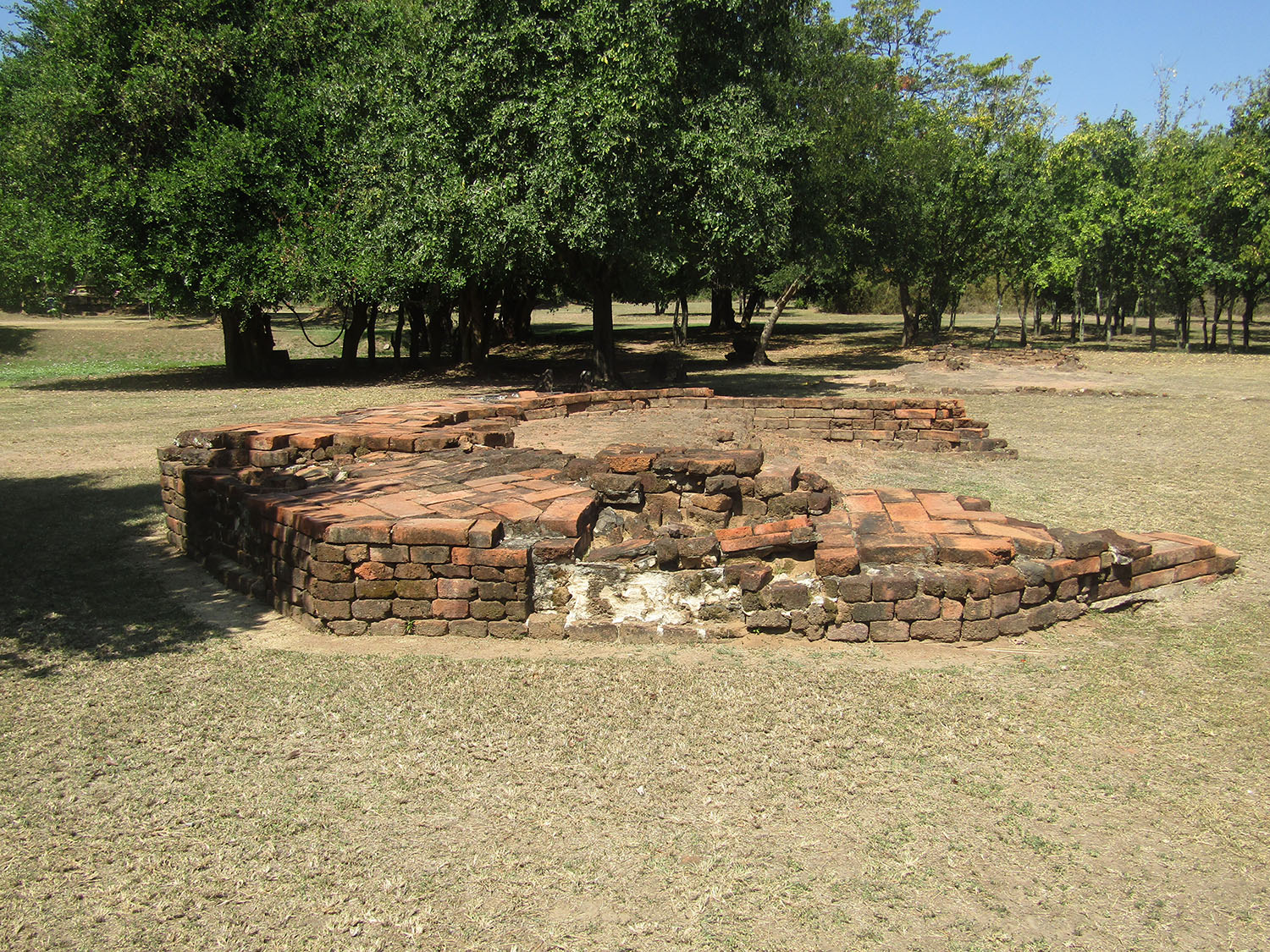
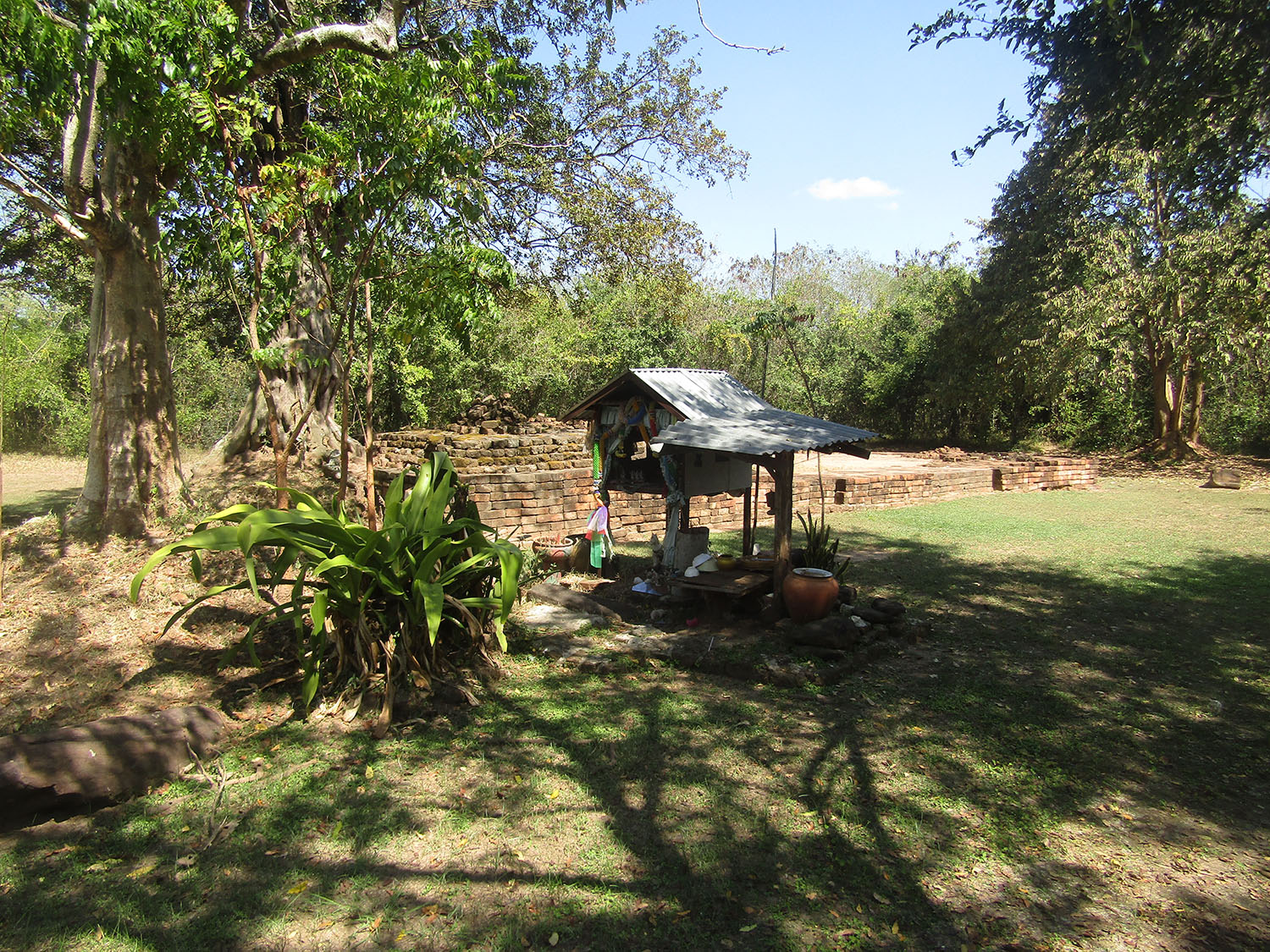
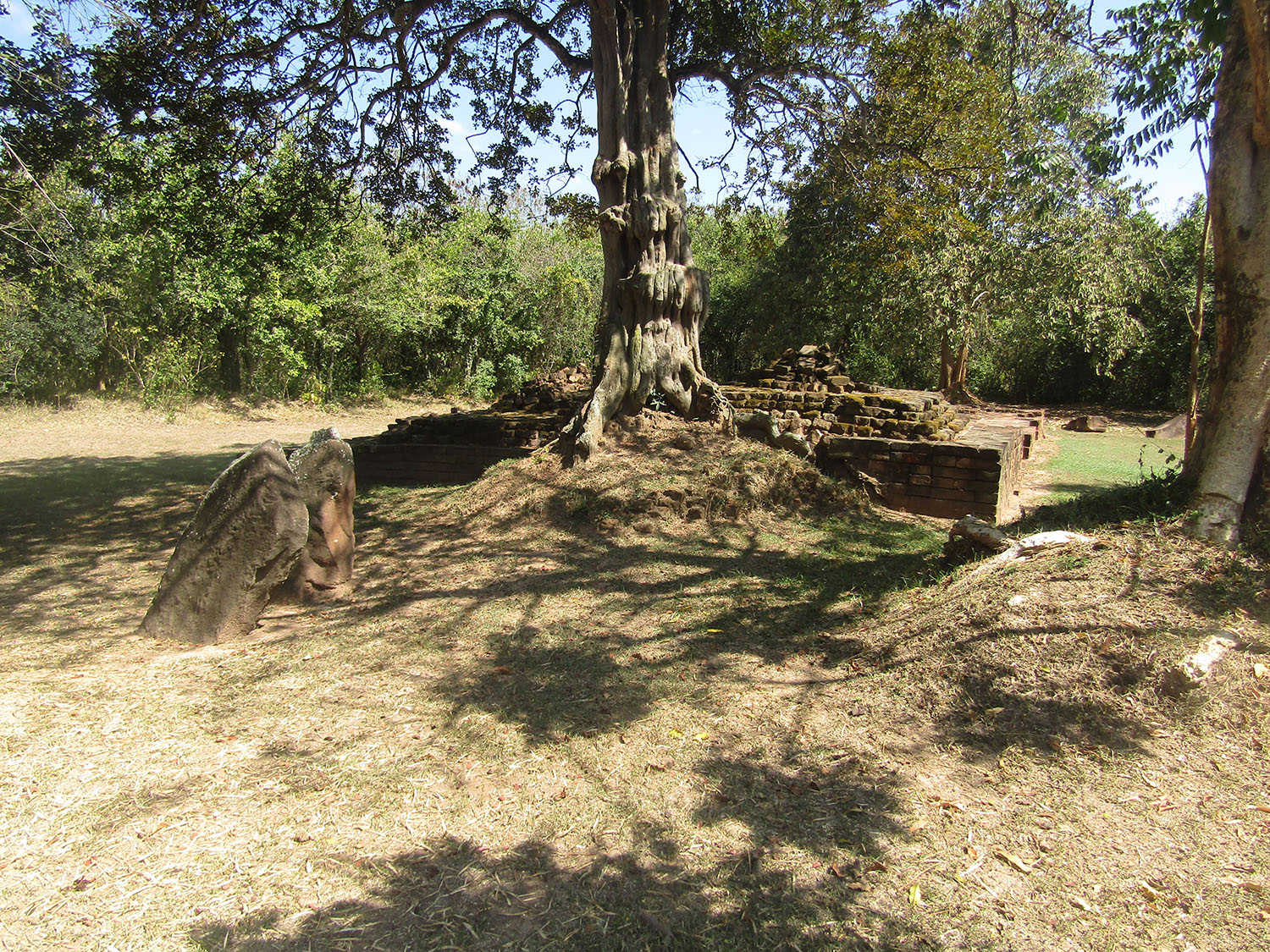
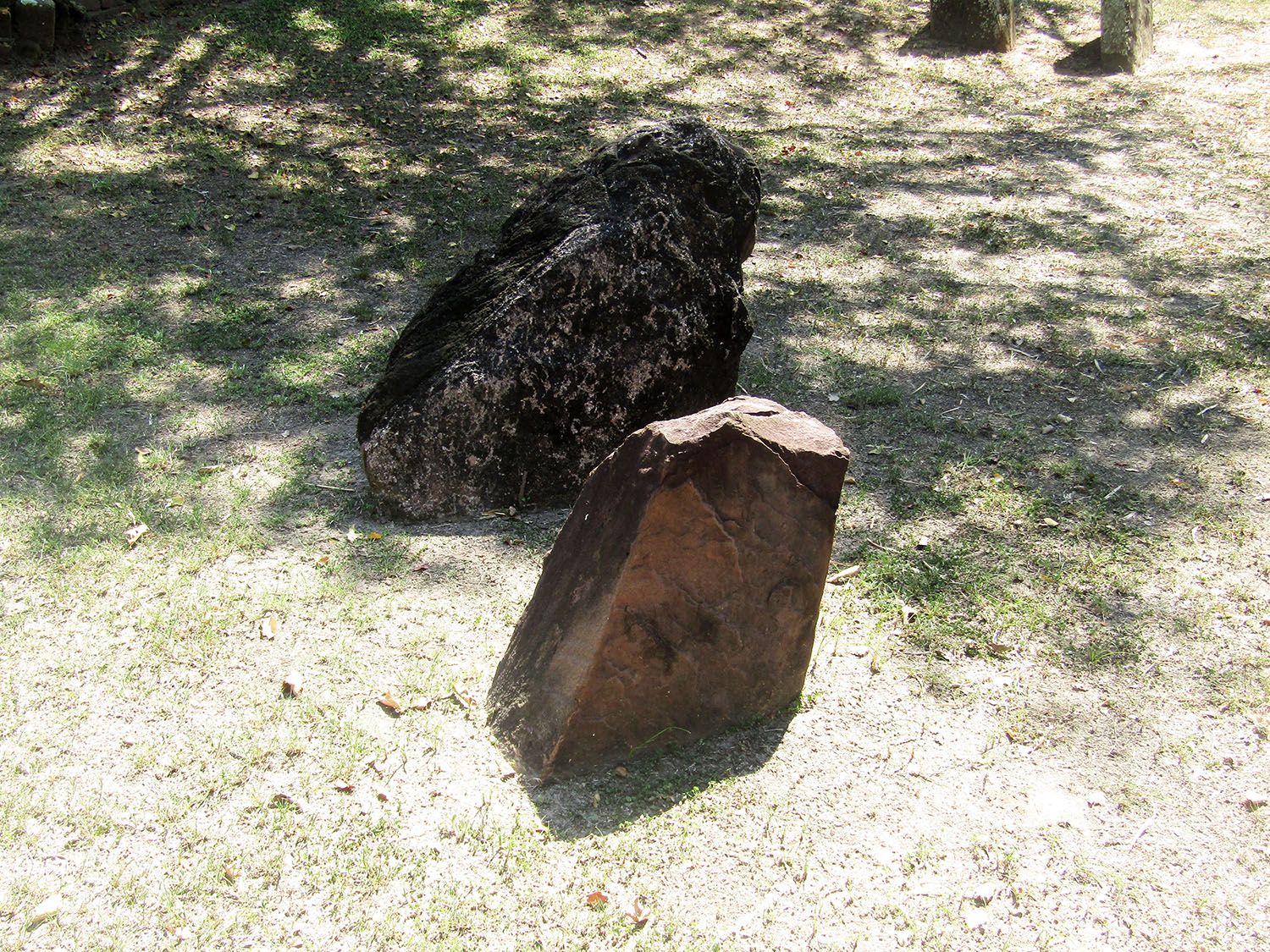
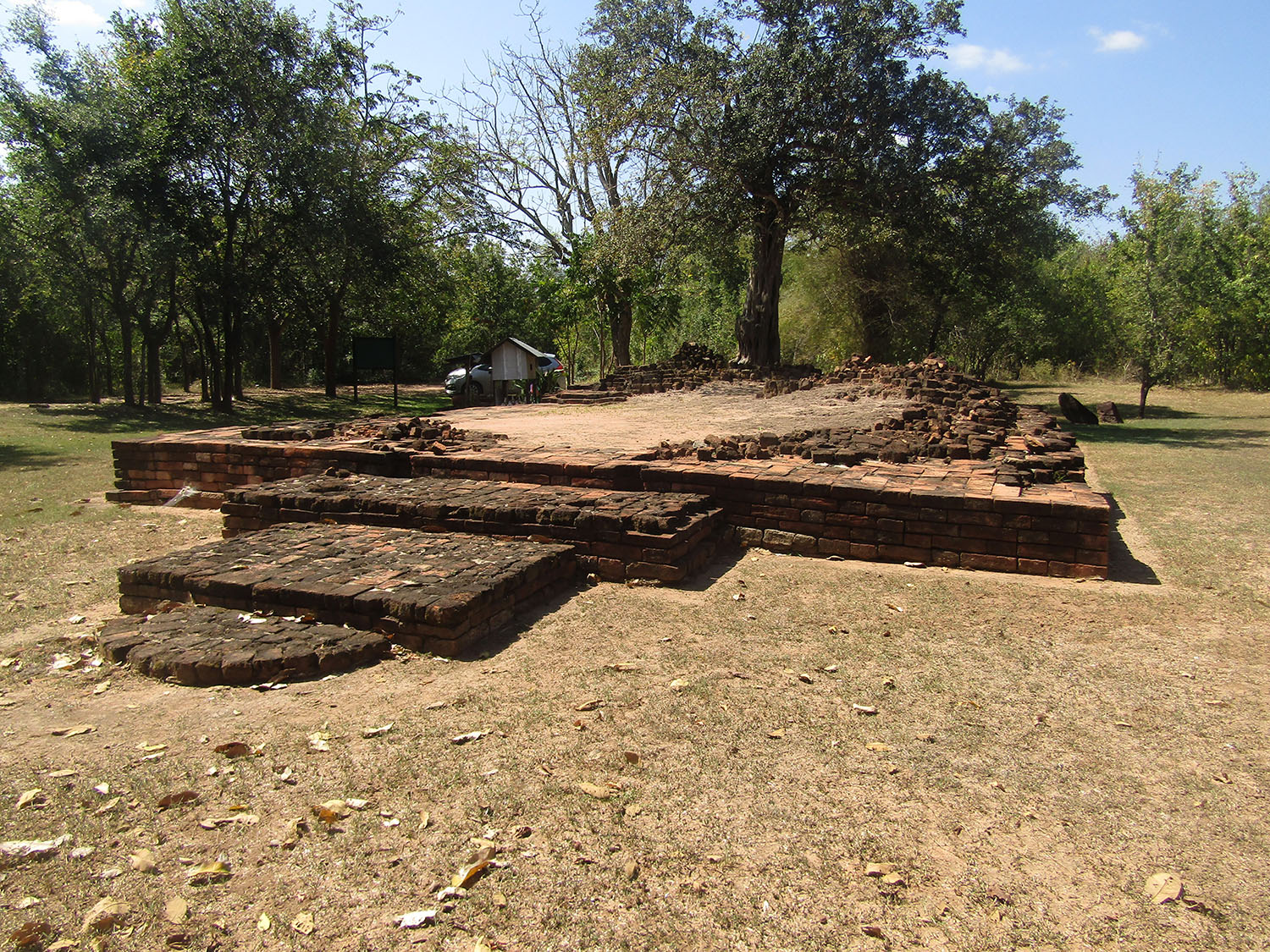
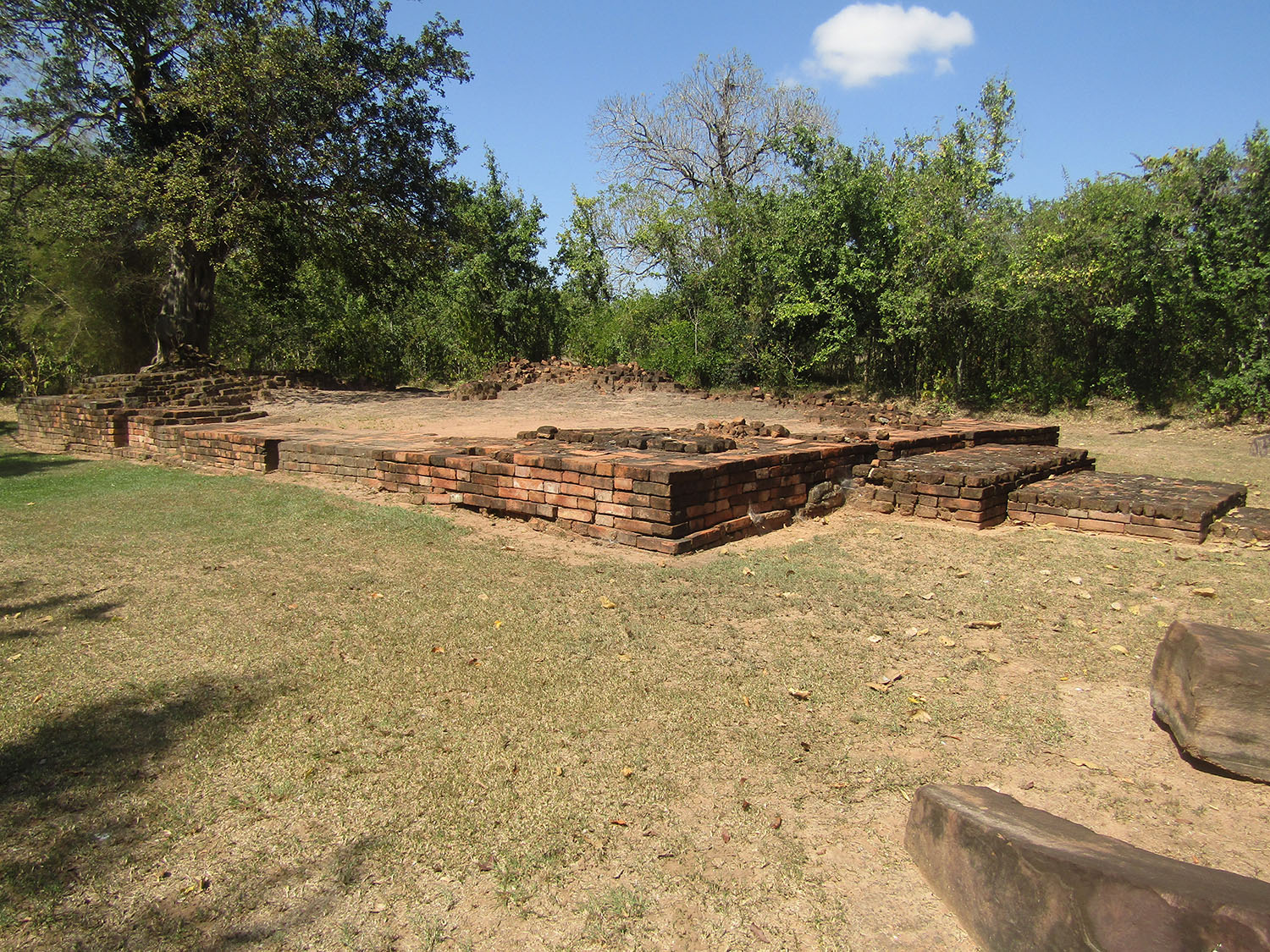 Muang Sema, Sung Noen District, Nakhon Ratchasima Province
Muang Sema, Sung Noen District, Nakhon Ratchasima Province
Wat Dharmacakra Semaram……..Not far from Muang Sema, Wat Dharmacakra Semaram is a temple where the reclining Buddha (Phra Non) is located. It is more than 1,200 years old (Dvaravati Period) making it the oldest and largest reclining Buddha image in the world. The image is composed of a number of blocks of red sandstone and is 13.3 metres in length and 2.8 metres in height. The figure lies facing to the east.
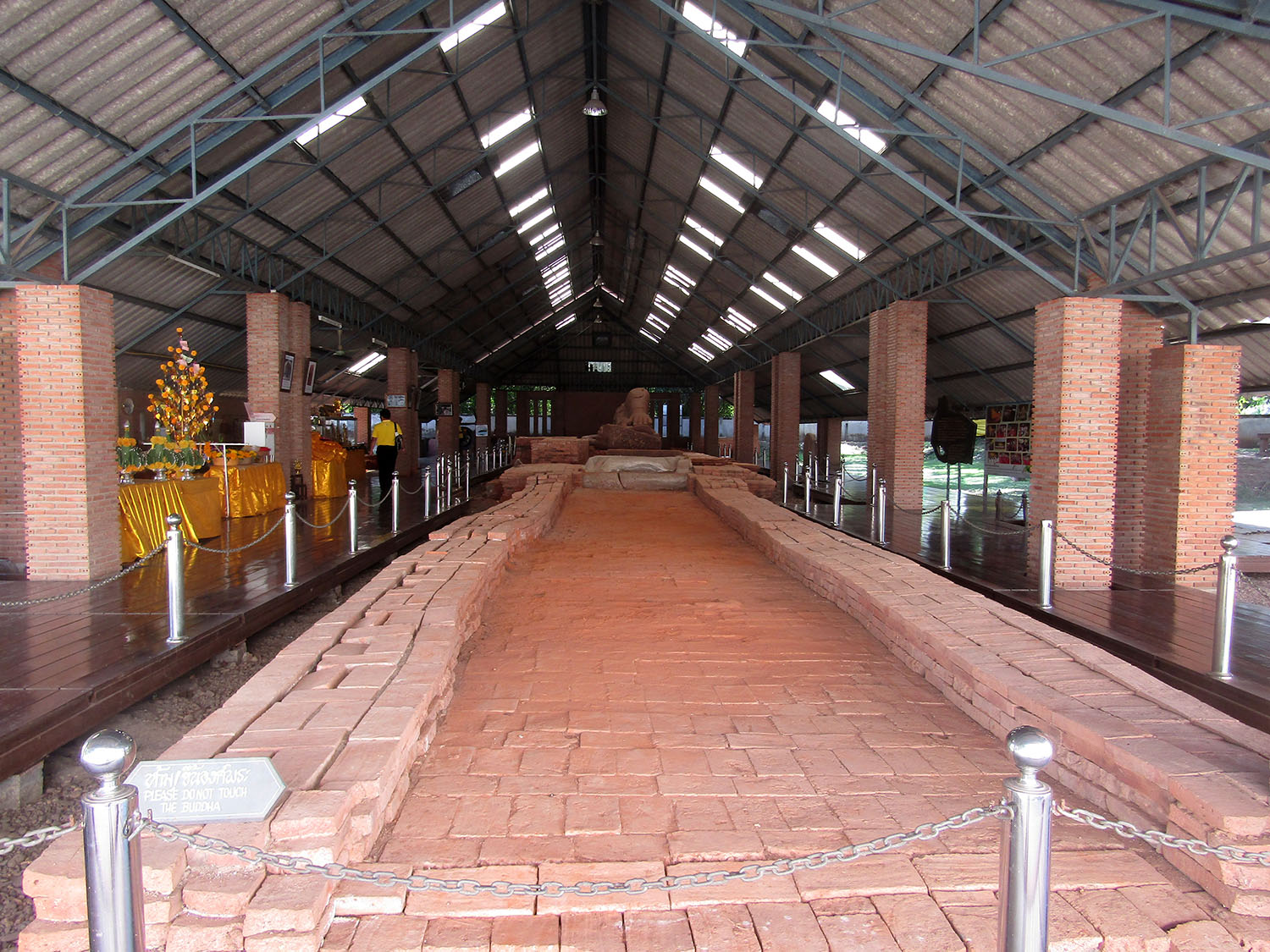
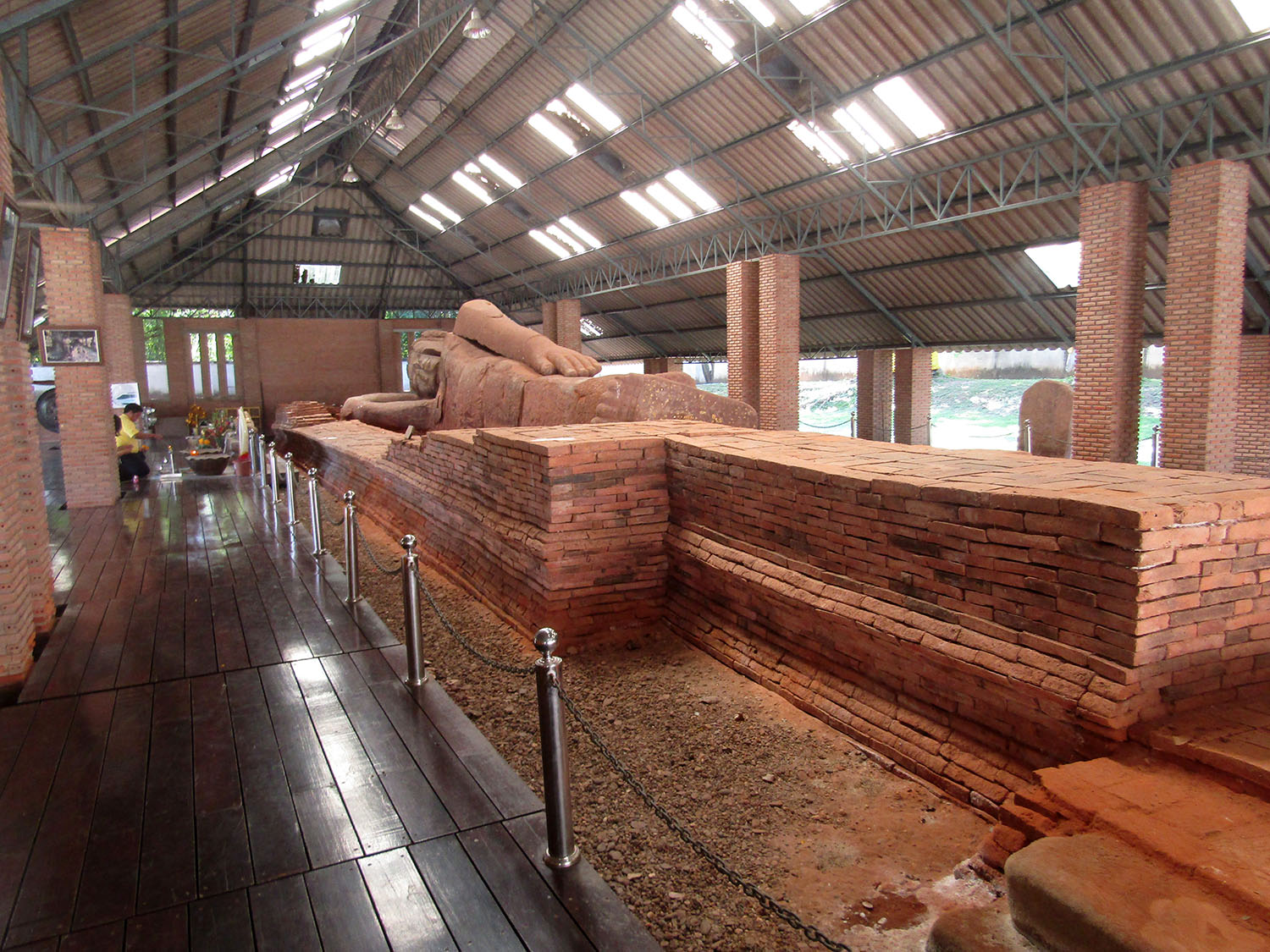
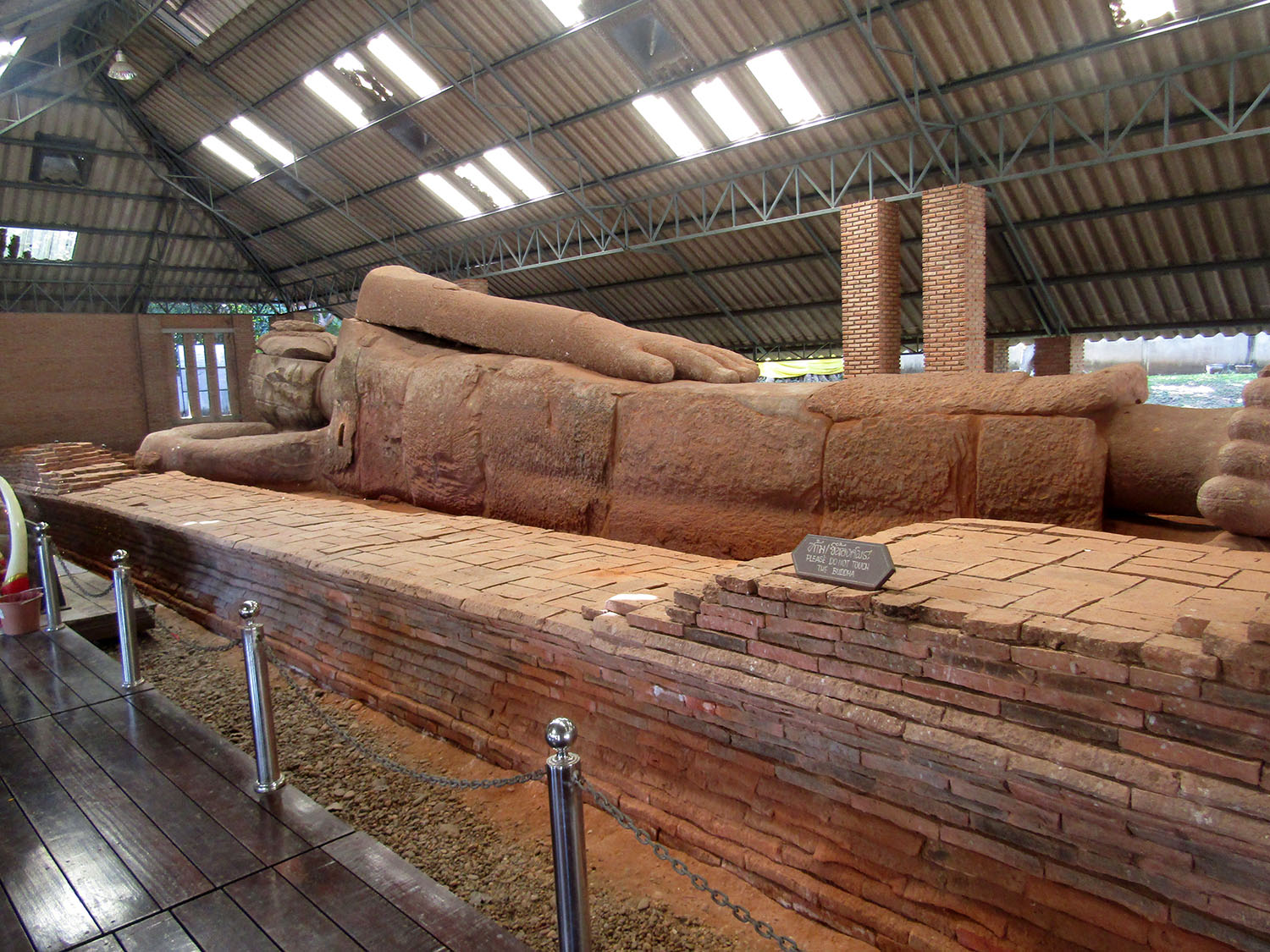
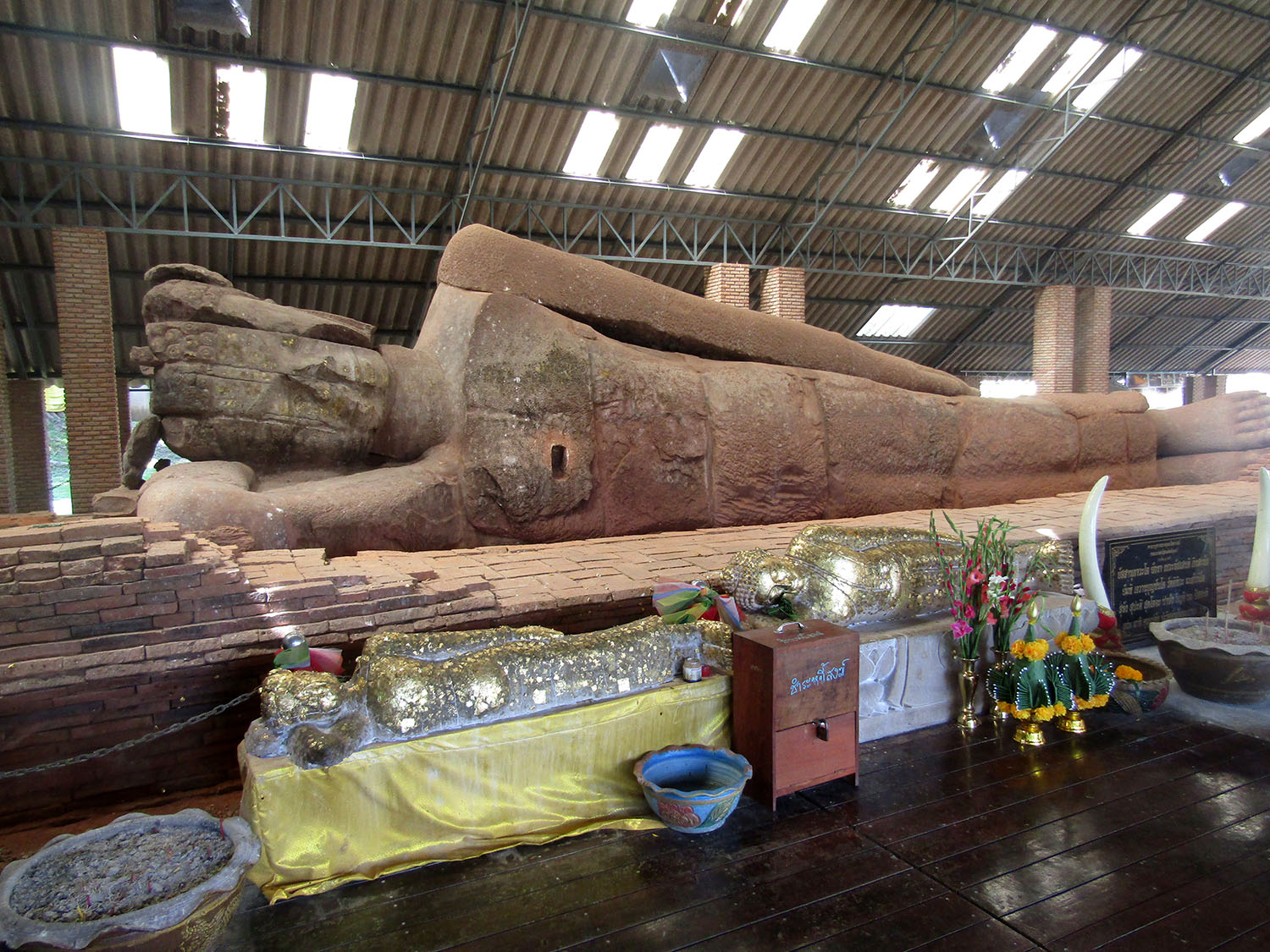
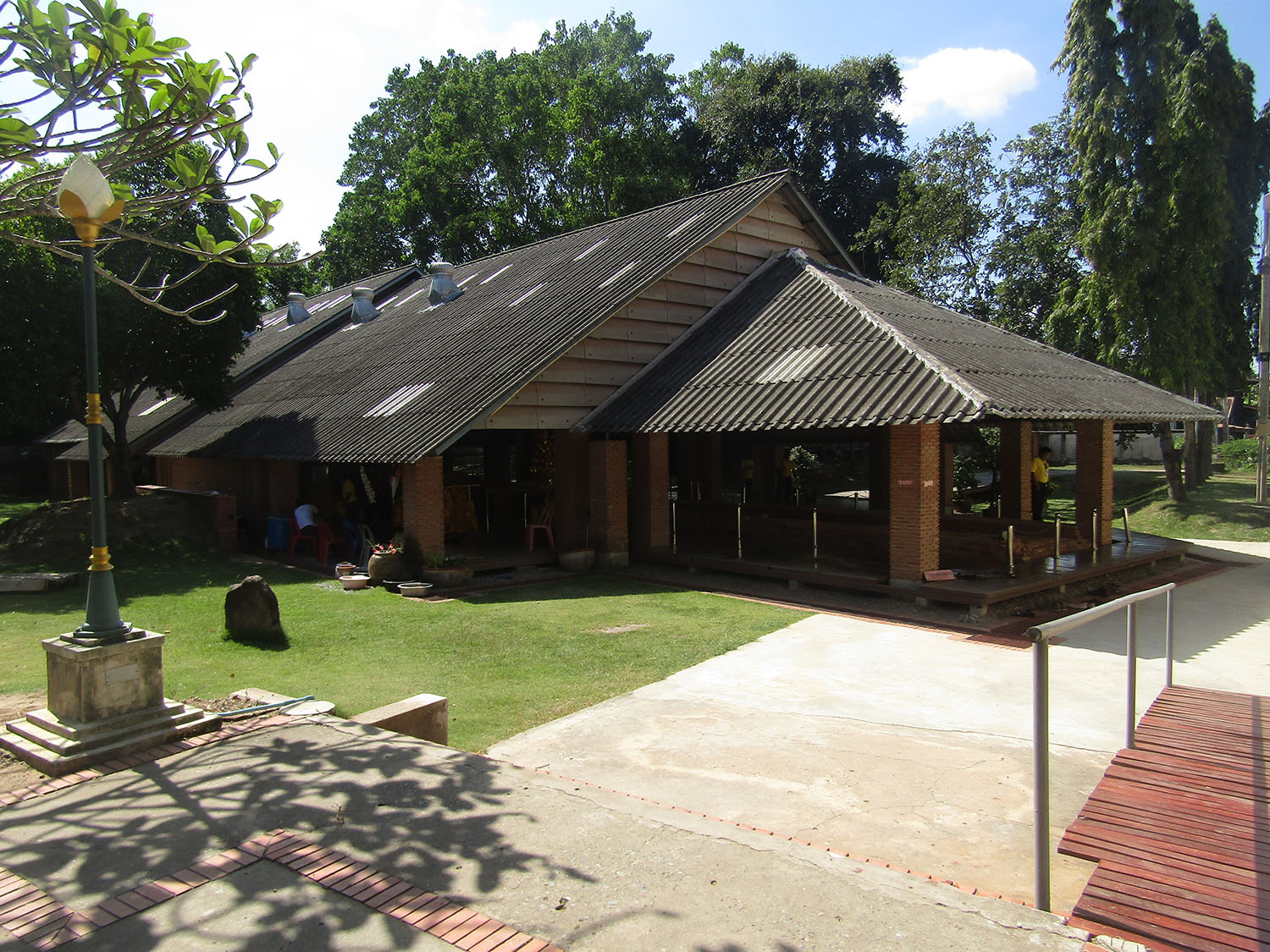
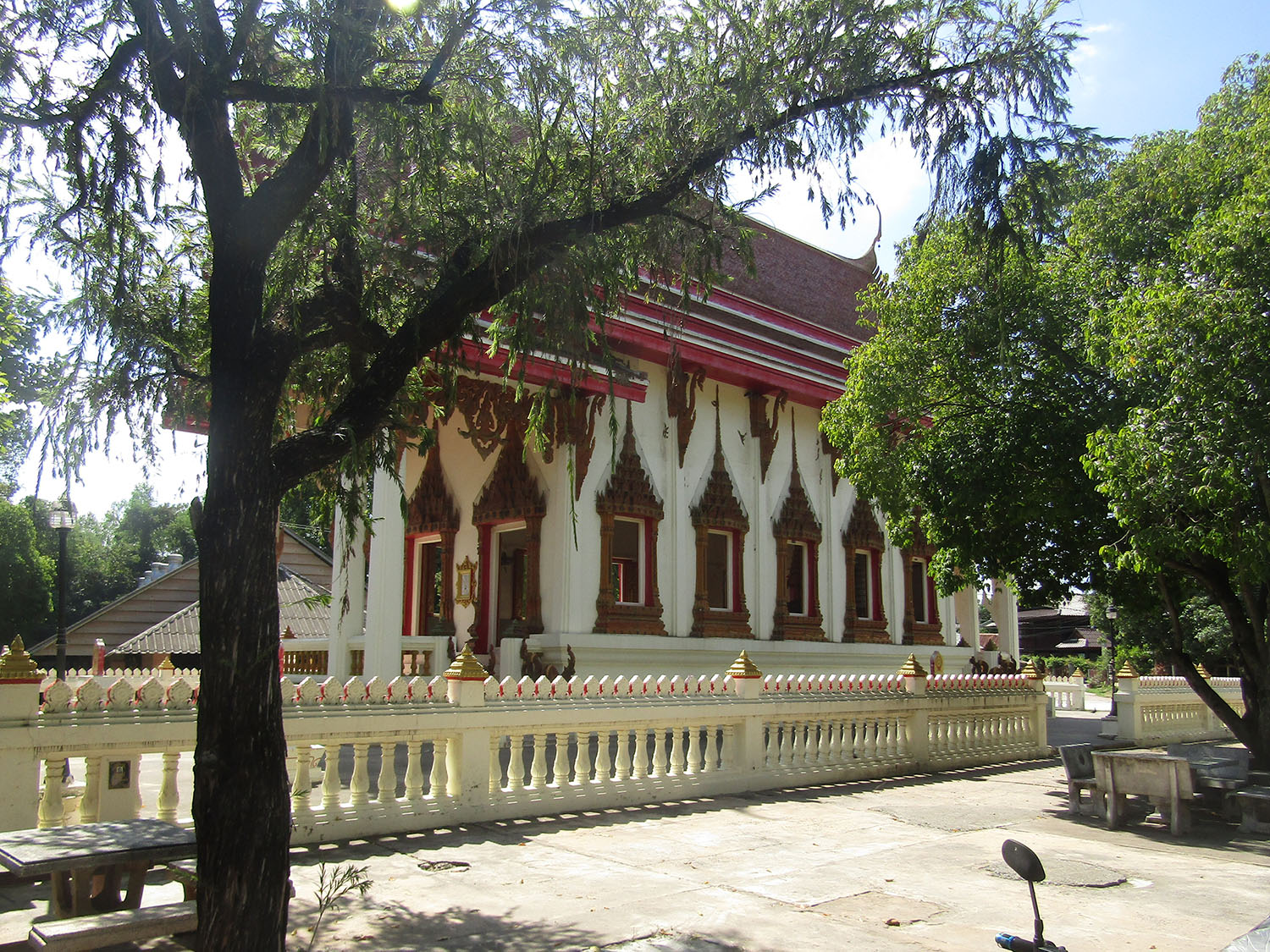
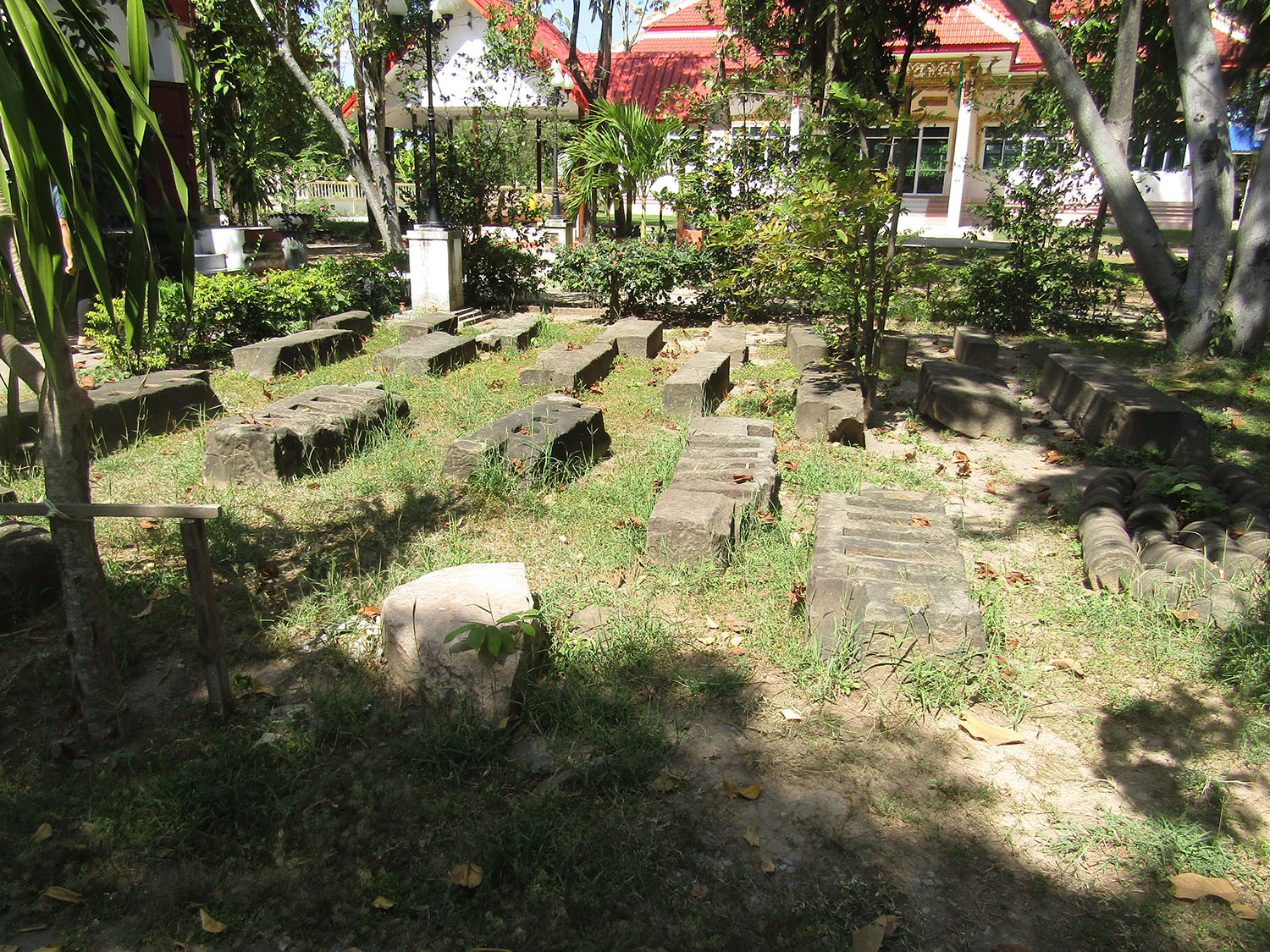
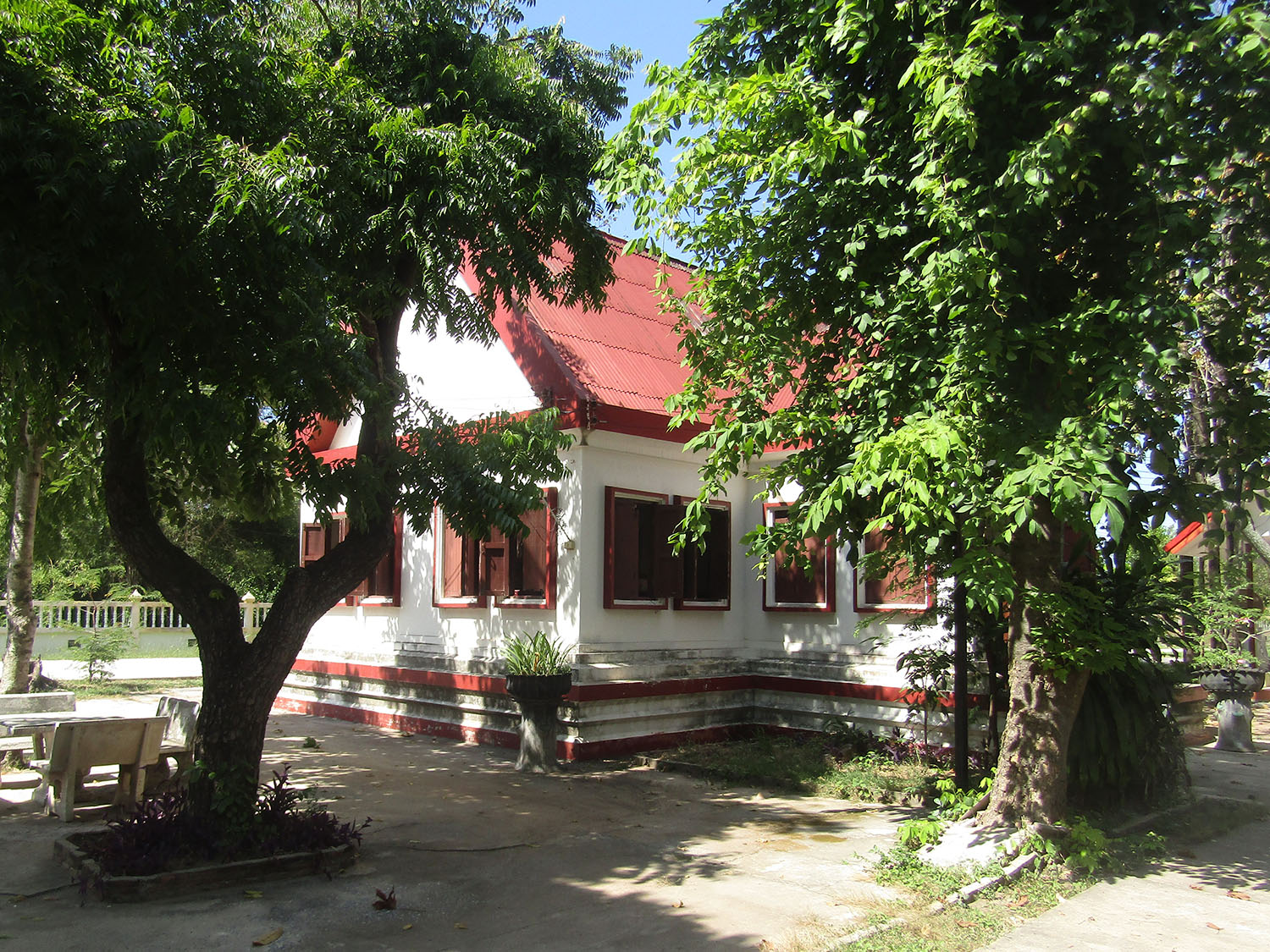
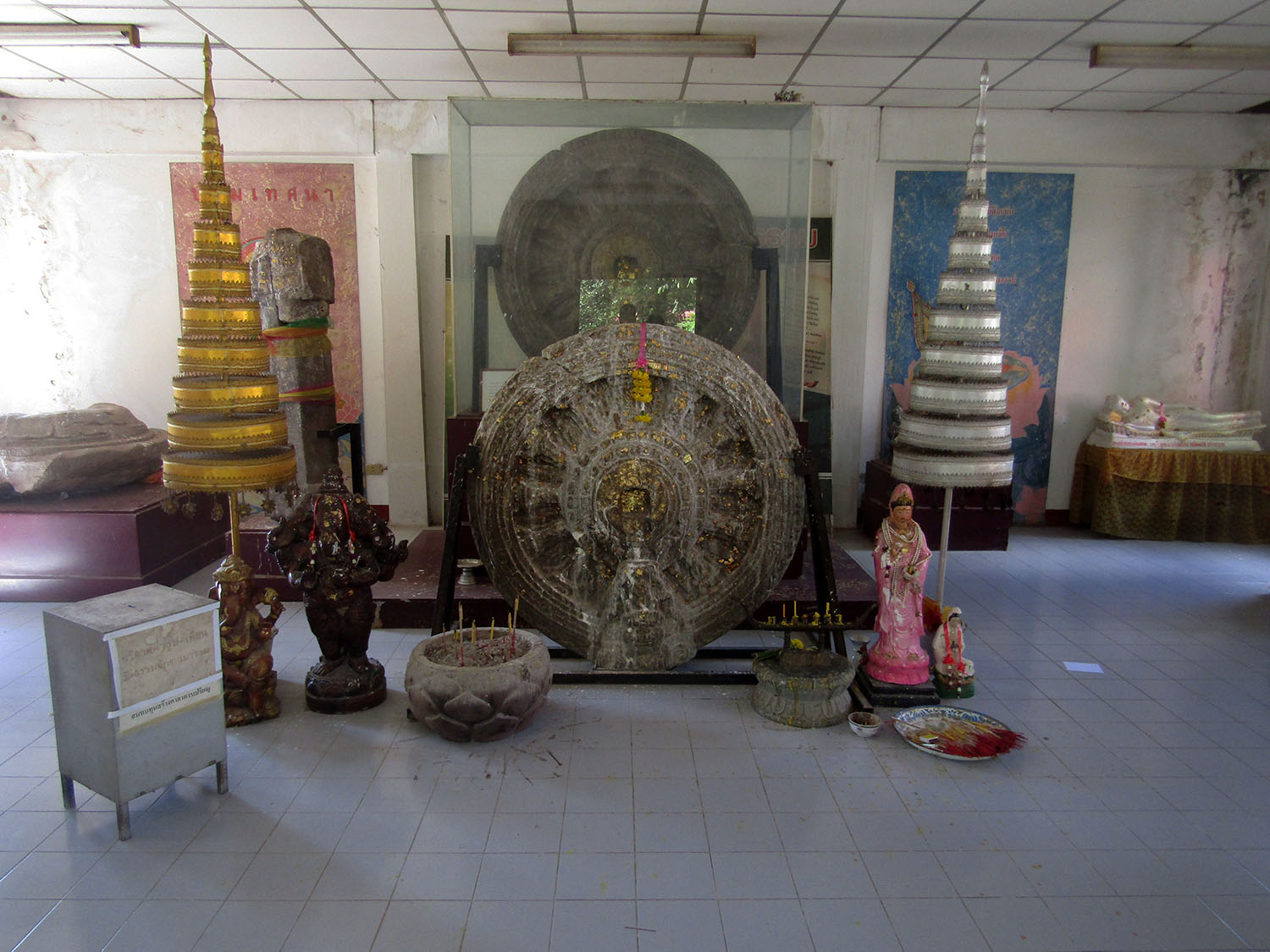 Phra Non (reclining Buddha) at Wat Dharmacakra Semaram, Sung Noen District, Nakhon Ratchasima Province
Phra Non (reclining Buddha) at Wat Dharmacakra Semaram, Sung Noen District, Nakhon Ratchasima Province
Prasat Muang Khaek……..Heading back towards the Mittraphap Highway the next site we come across is Prasat Muang Khaek. While Katoon goes searching for lunch I head off to search around the sanctuary.
This site is a Khmer Hindu or Bhraman religious complex. The site was used for ritual offering to the god and the temple and was built from sandstone and bricks. It consists of three pagodas built on the same base with the front facing north. It is surrounded by a moat. The site is 500 metres from the Lam Takong River and about 22 kilometres from the sandstone quarry. Presently Prasat Muang Kkaek is used for an important provincial fair, the traditional Kin Khao Kam (traditional dinner fair) during March each year.
This site is a Khmer Hindu or Bhraman religious complex. The site was used for ritual offering to the god and the temple and was built from sandstone and bricks. It consists of three pagodas built on the same base with the front facing north. It is surrounded by a moat. The site is 500 metres from the Lam Takong River and about 22 kilometres from the sandstone quarry. Presently Prasat Muang Kkaek is used for an important provincial fair, the traditional Kin Khao Kam (traditional dinner fair) during March each year.
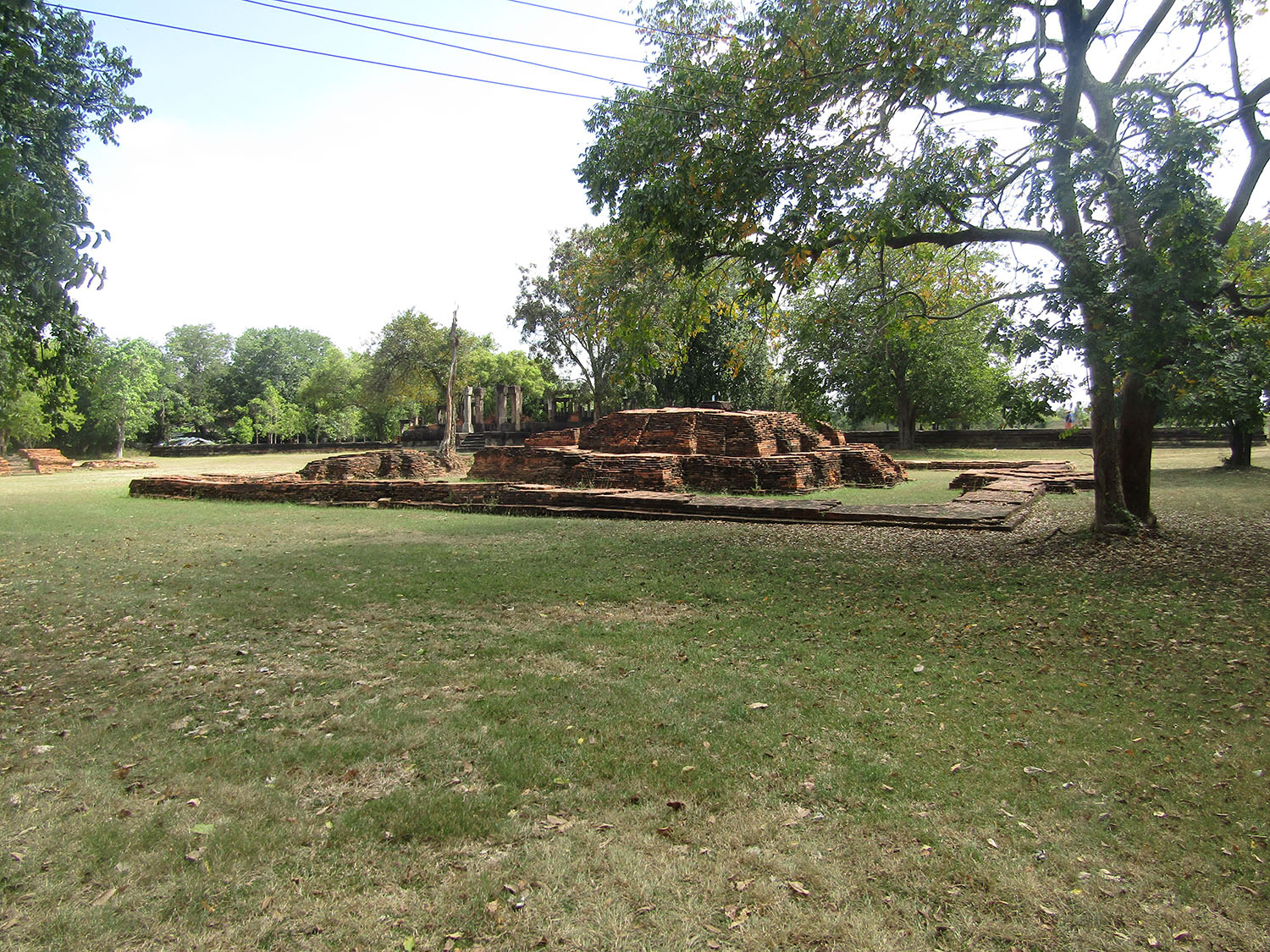
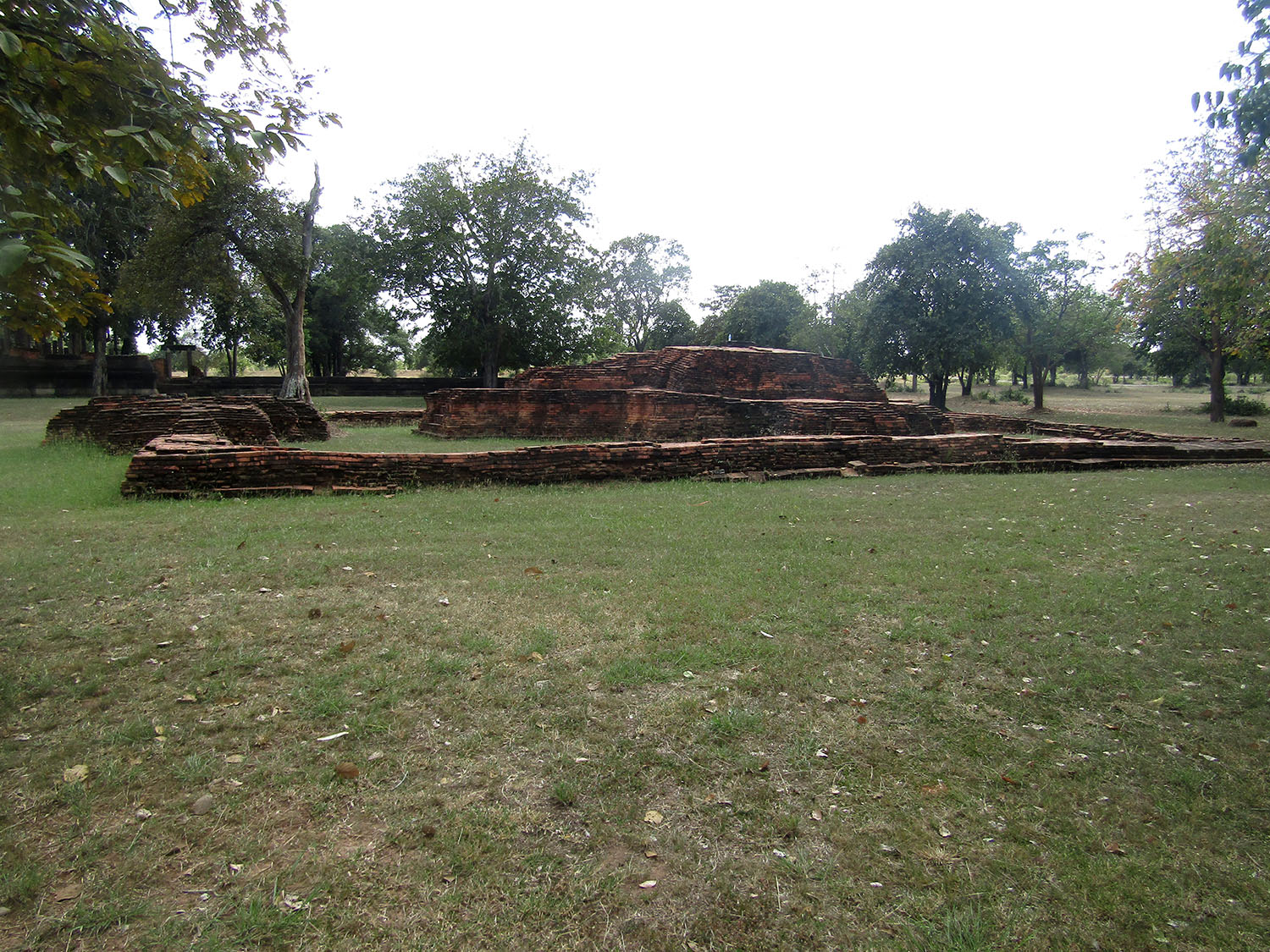
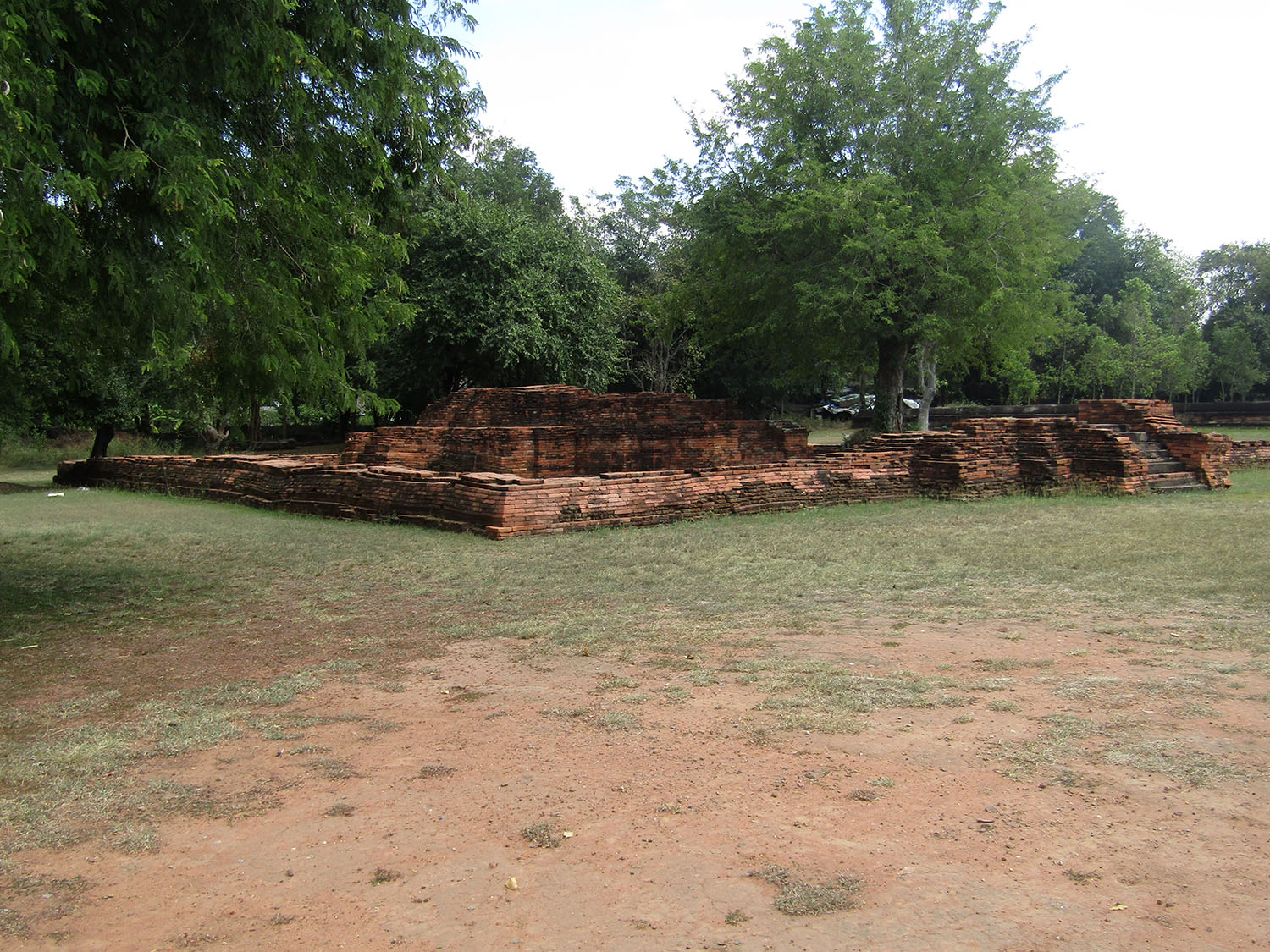
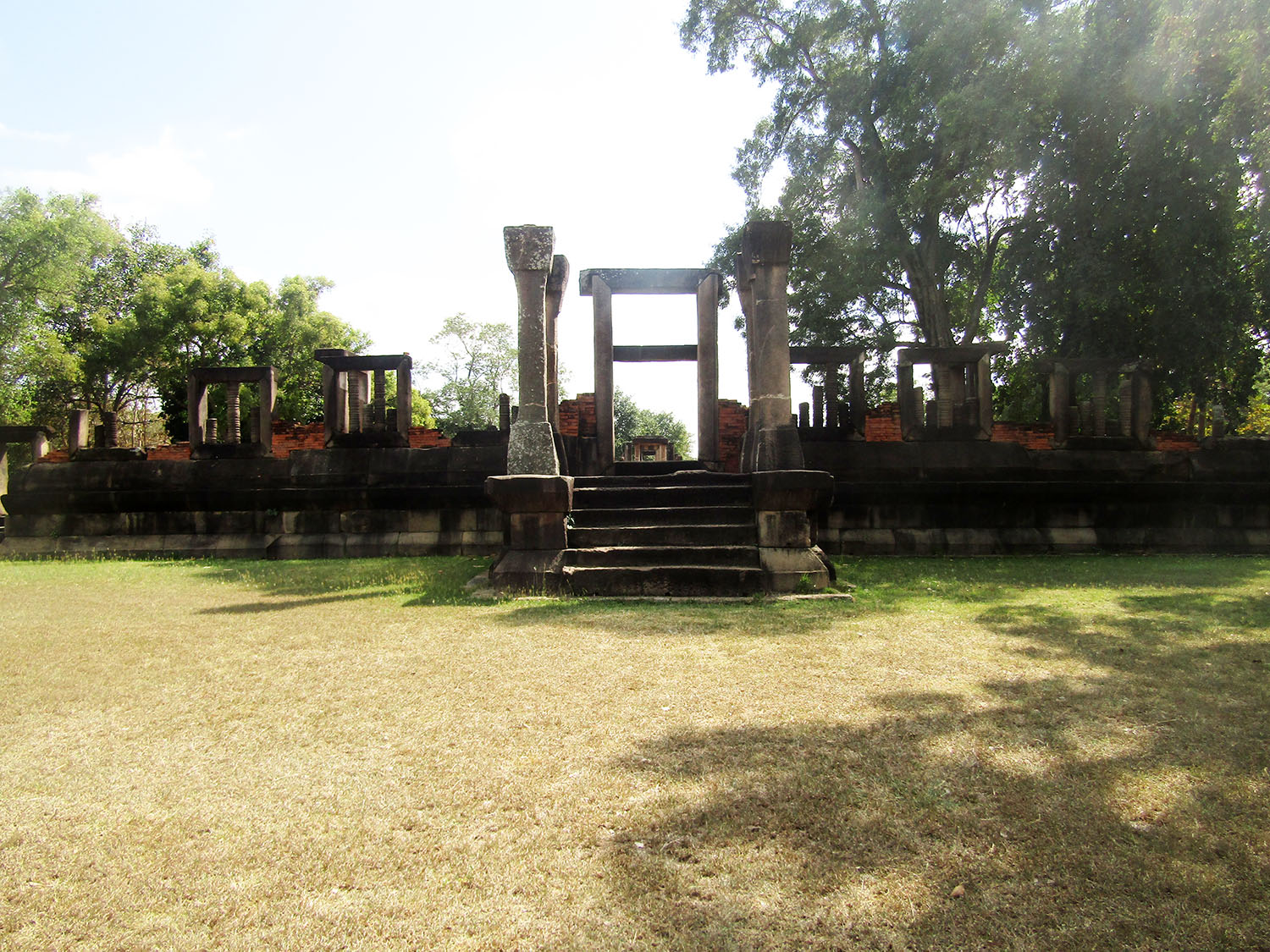
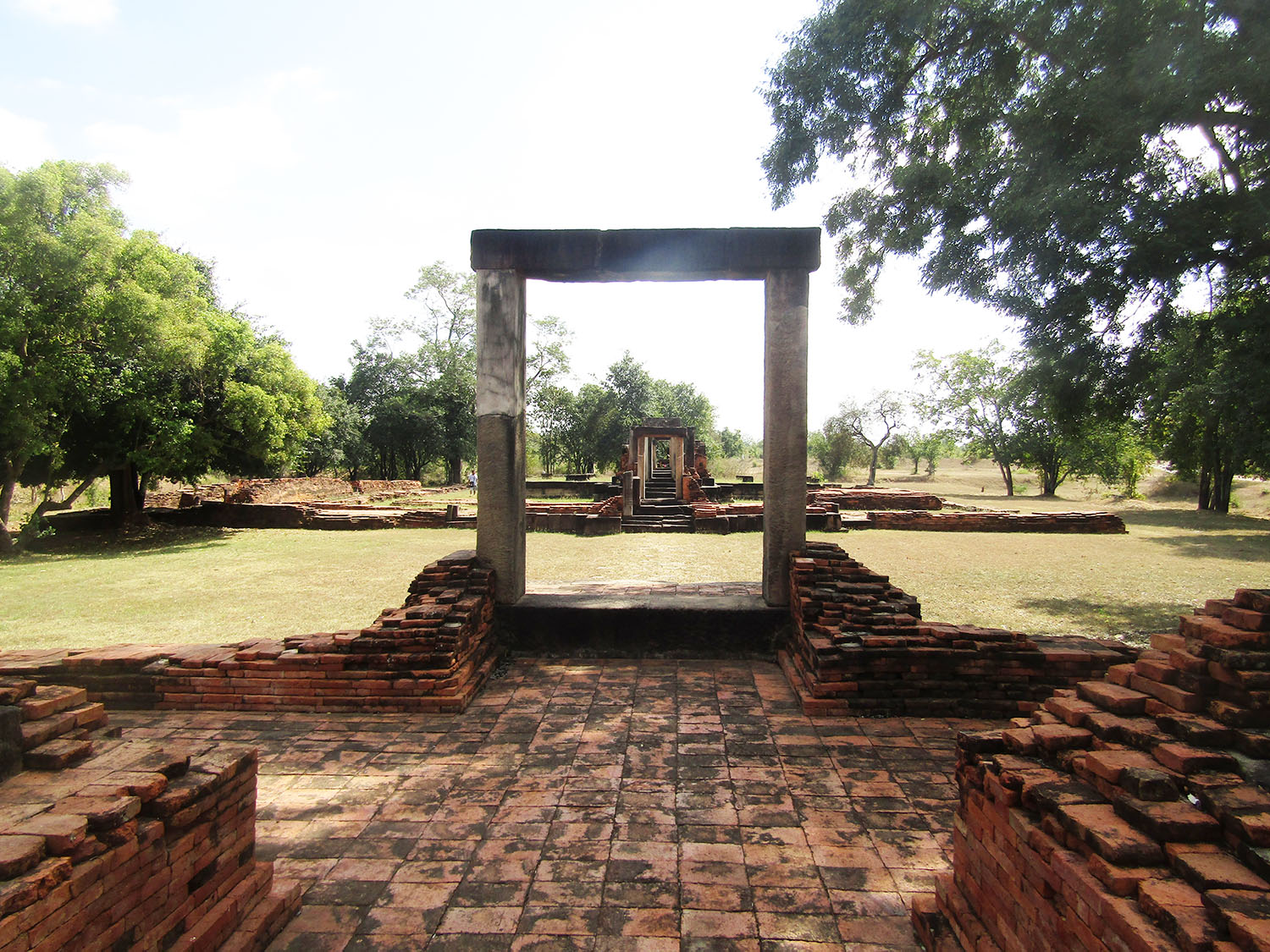
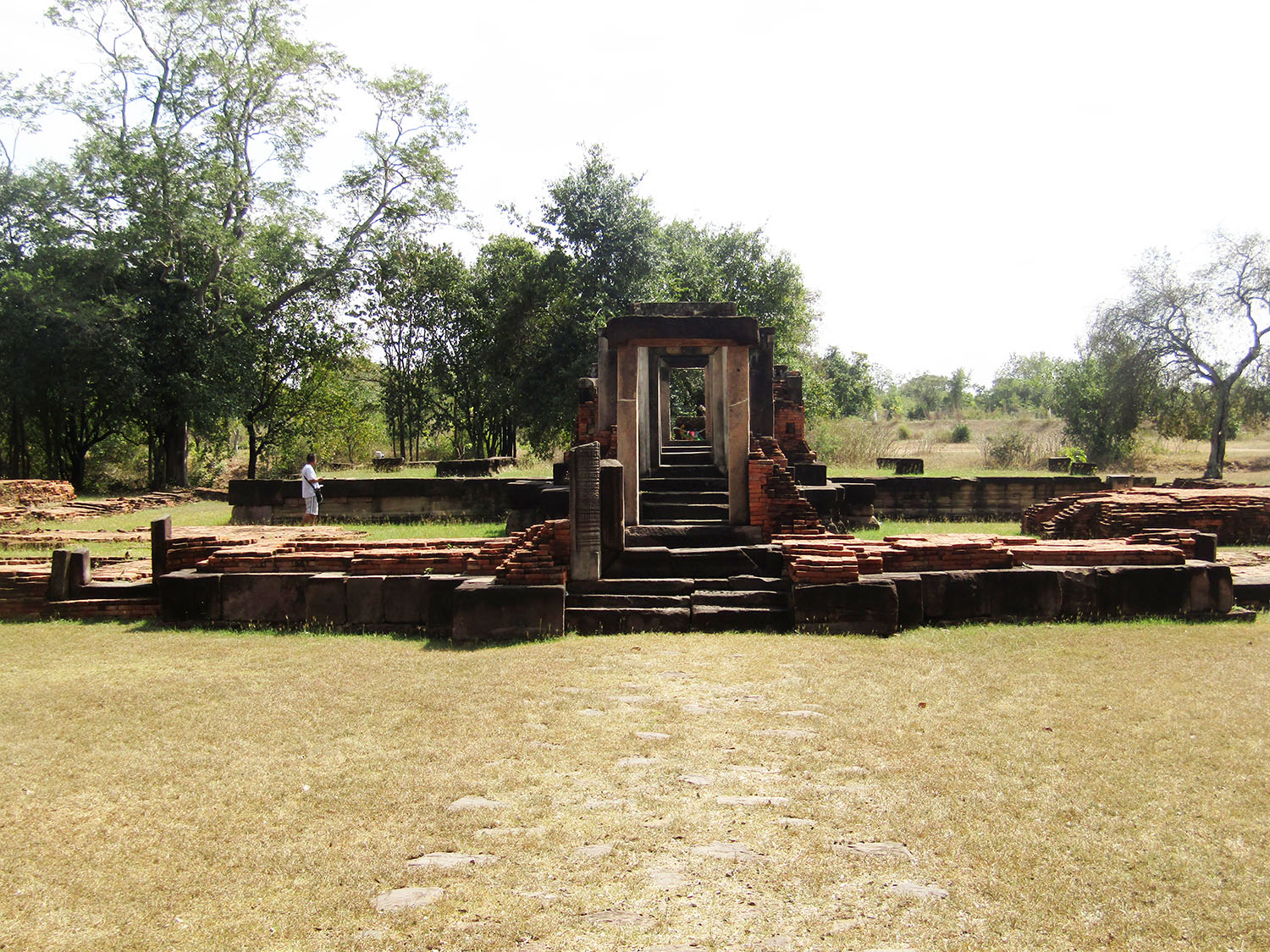
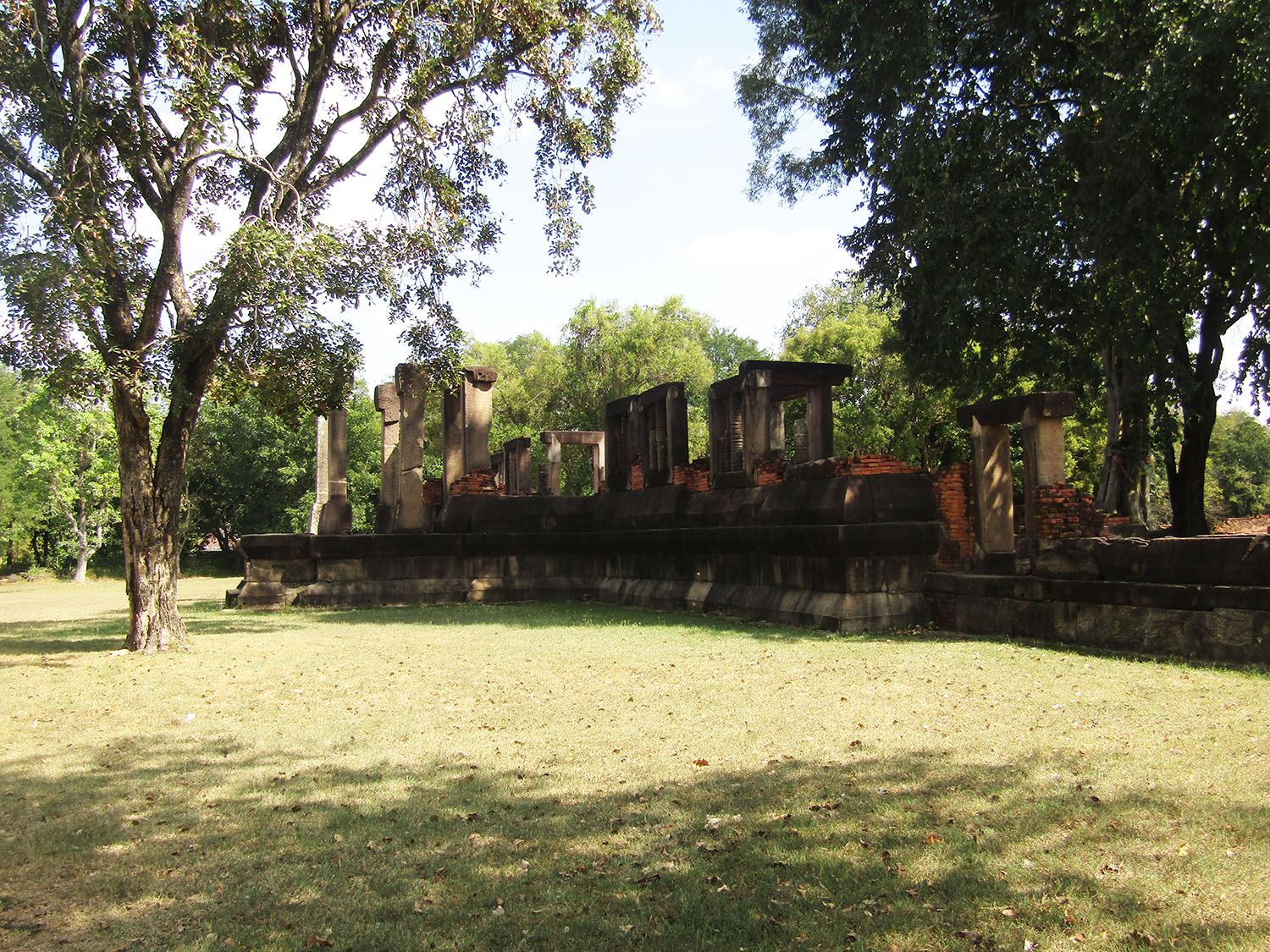
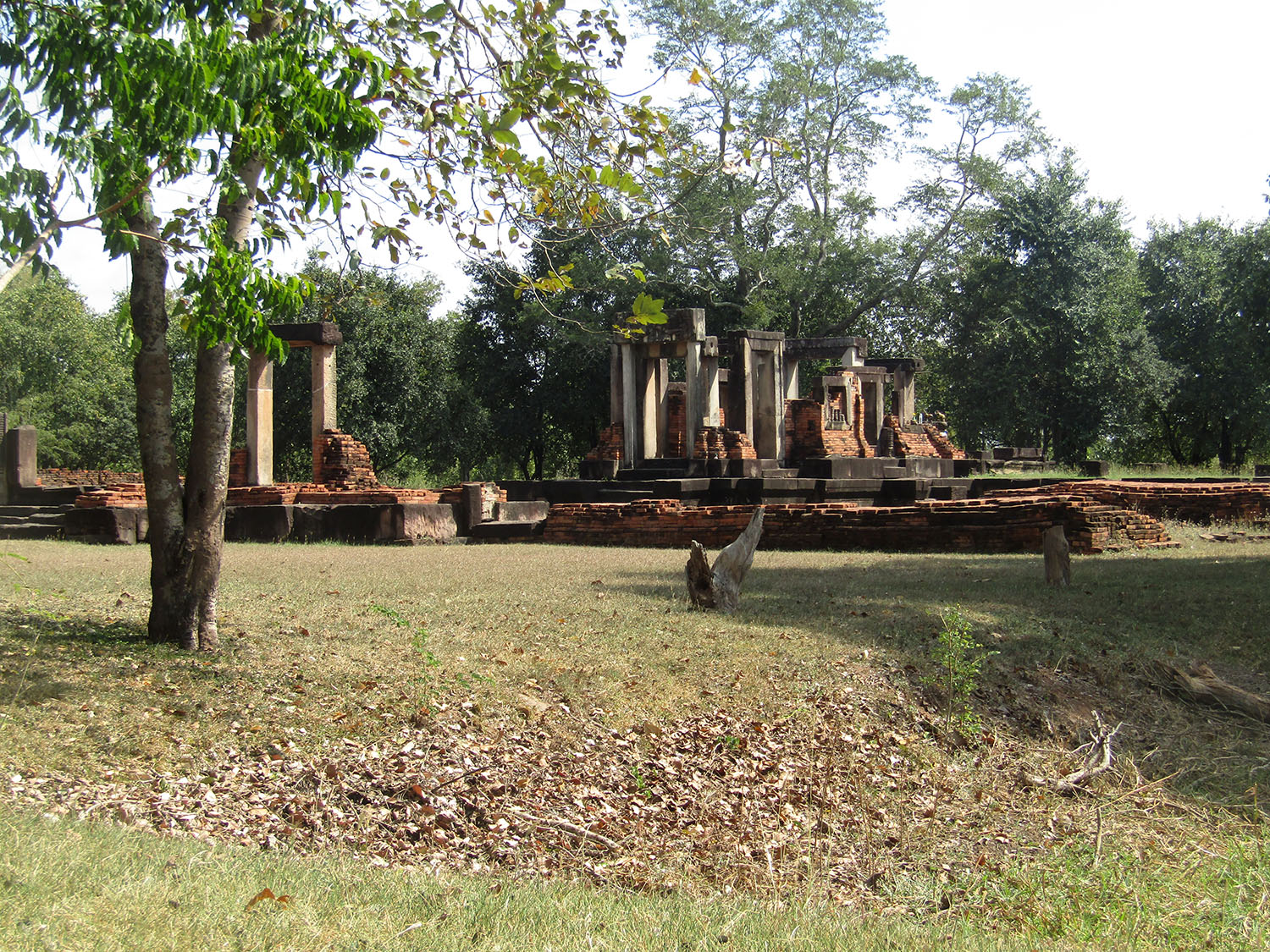
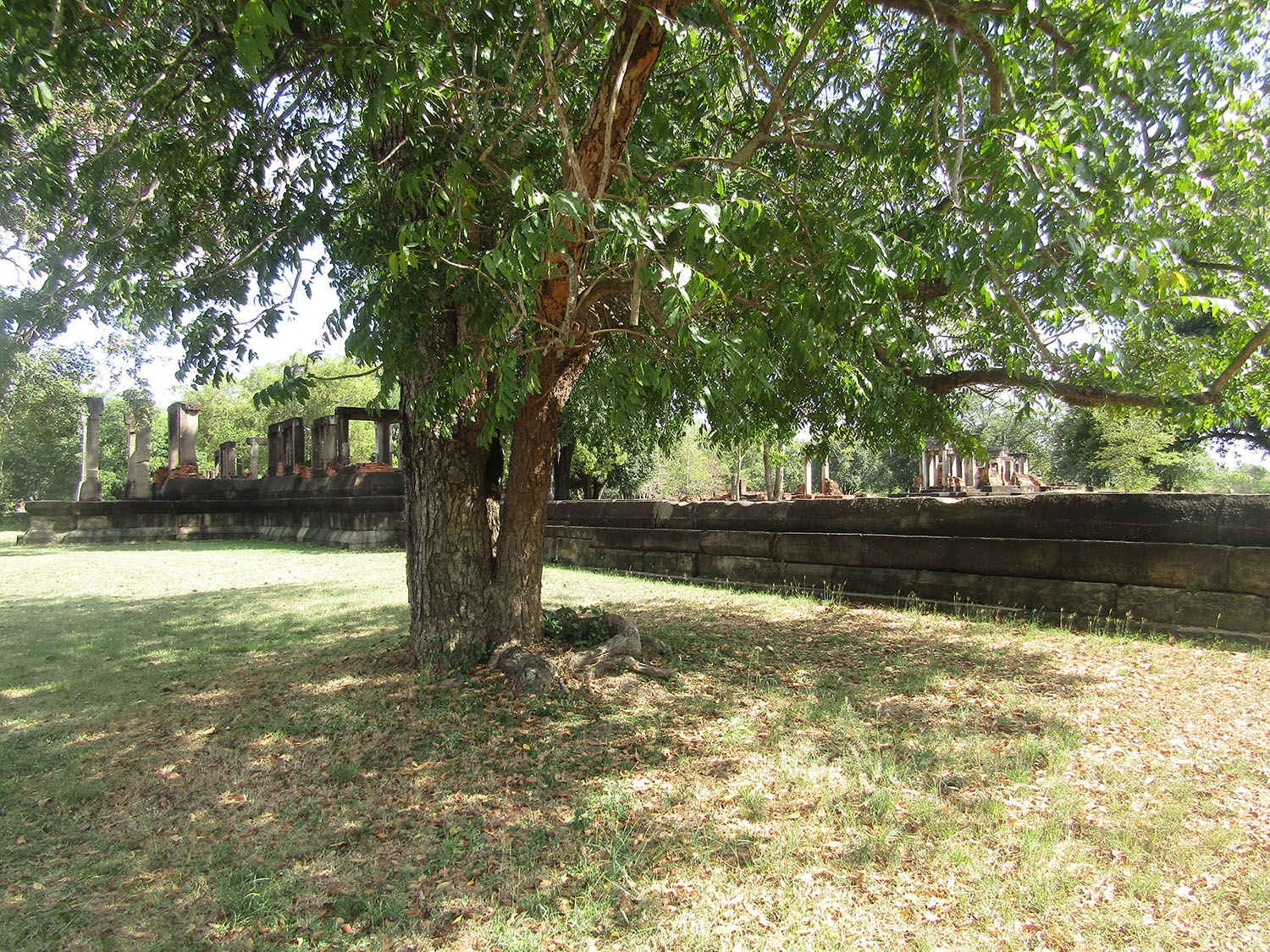 Prasat Muang Khaek (Hindu shrine), Sung Noen District, Nakhon Ratchasima Province
Prasat Muang Khaek (Hindu shrine), Sung Noen District, Nakhon Ratchasima Province
Prasat Non Ku……..Not far from Prasat Muang Kkaek is Prasat Non Ku. It is a small sanctuary built of brick and sandstone. The plan is rectangular facing east. From archaeological evidence found the assumption is that the prasat is a Hindu religious cluster in the ancient Khmer style, 10th Century.
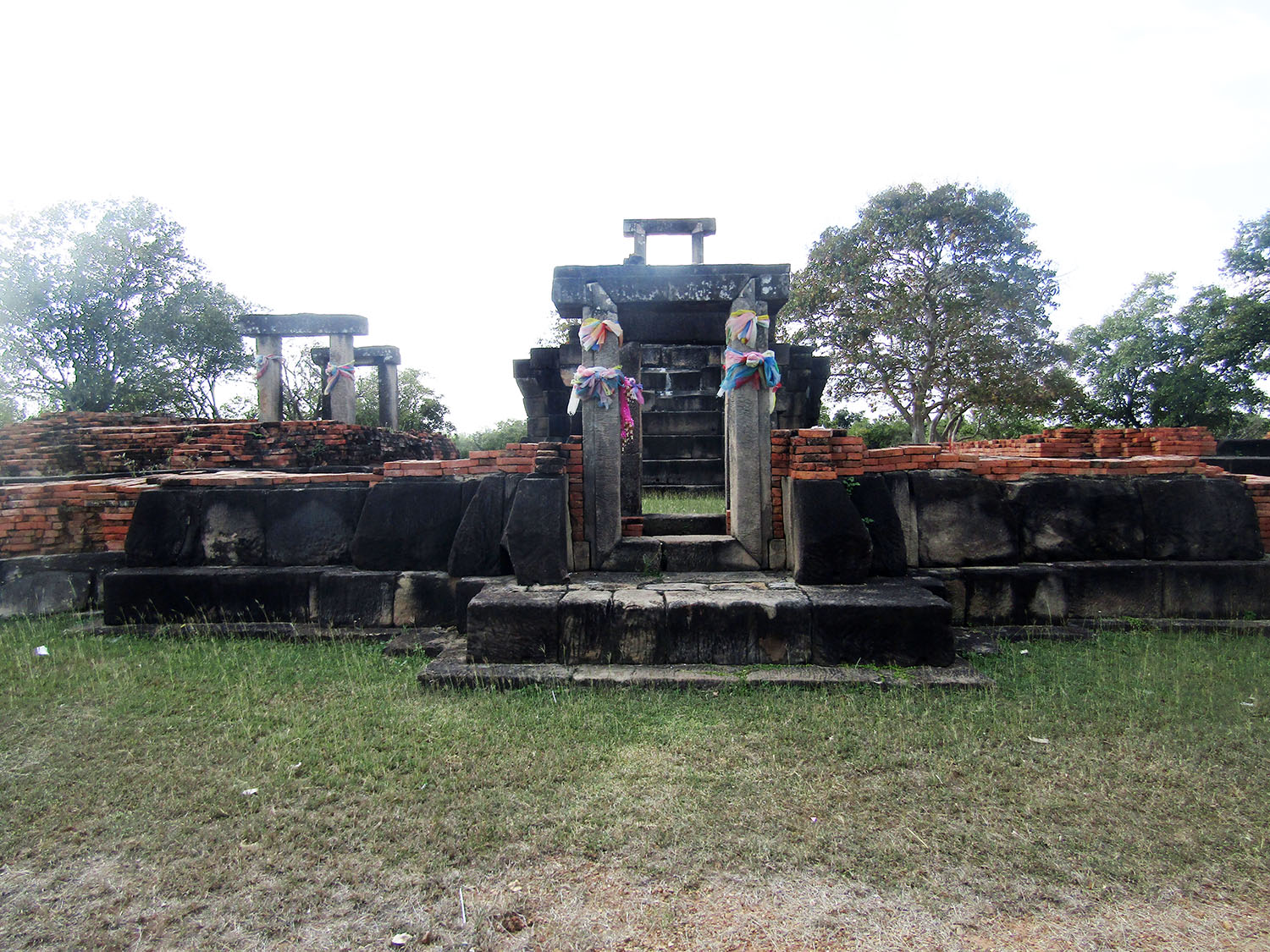
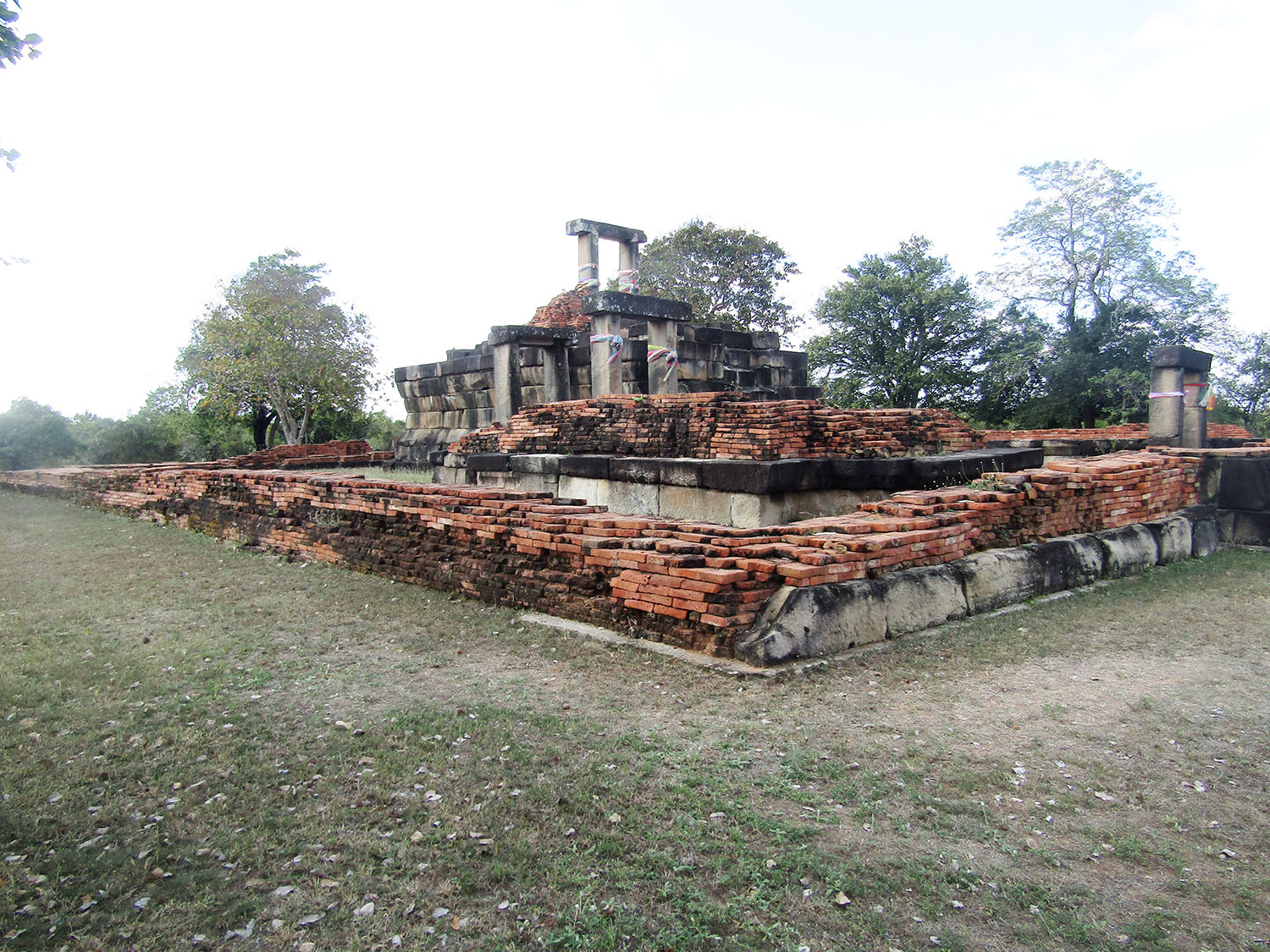
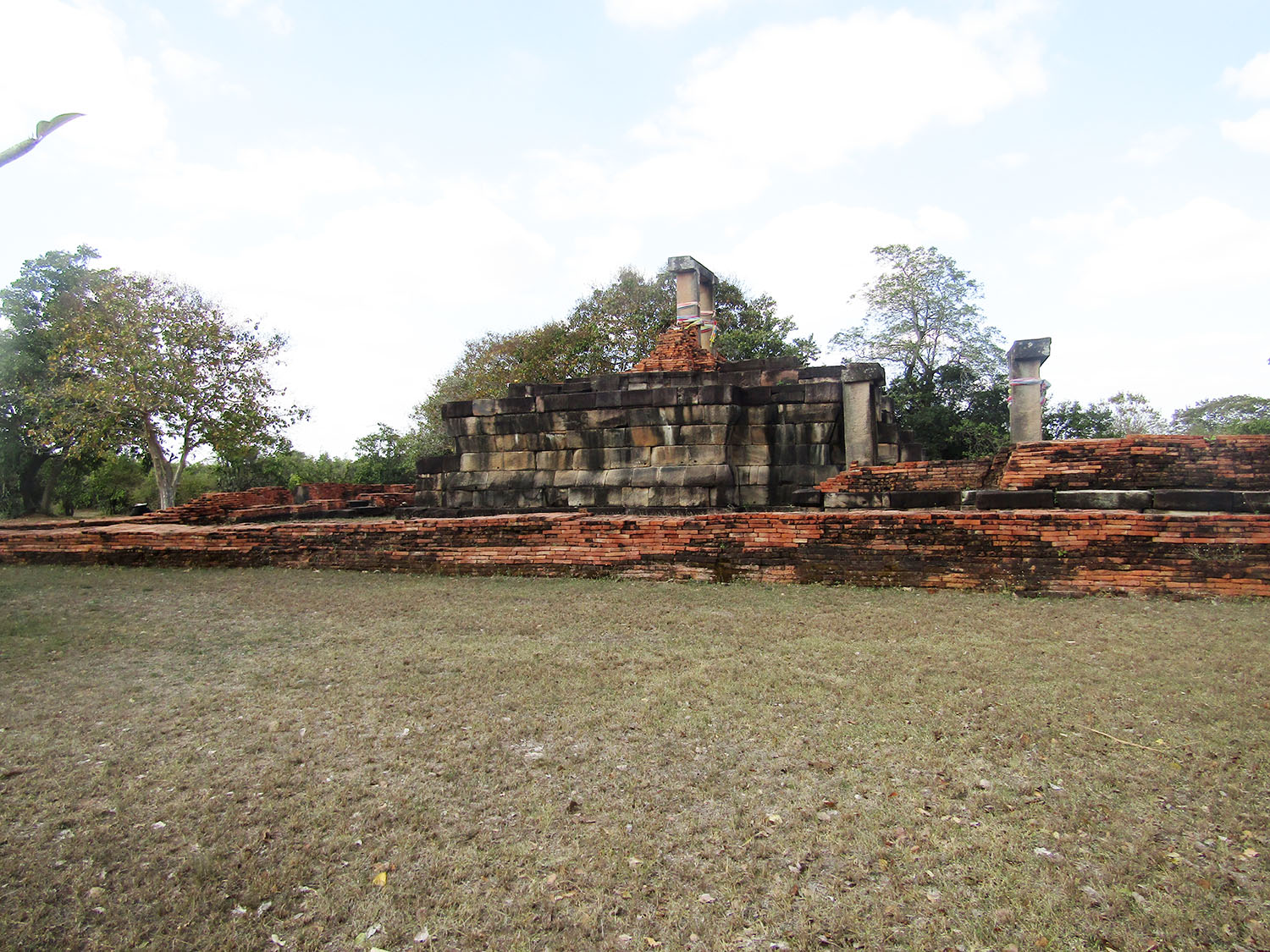 Prasat Non Ku (Hindu sanctuary), Sung Noen District, Nakhon Ratchasima Province
Prasat Non Ku (Hindu sanctuary), Sung Noen District, Nakhon Ratchasima Province
Prasat Muangkao……..A few kilometres further on is Prasat Muangkao. Located in tambon Khorat, Prasat Muangkao or Arokayasala is a medical station built by the order of the Khmer ruler, King Jayavaraman VII (1181-1218). There were 102 medical stations built throughout the empire during his reign. They all have a similar layout with a small simple tower set in a rectangular enclosure with the entrance to the east. There is a square pond located in the northeast corner.
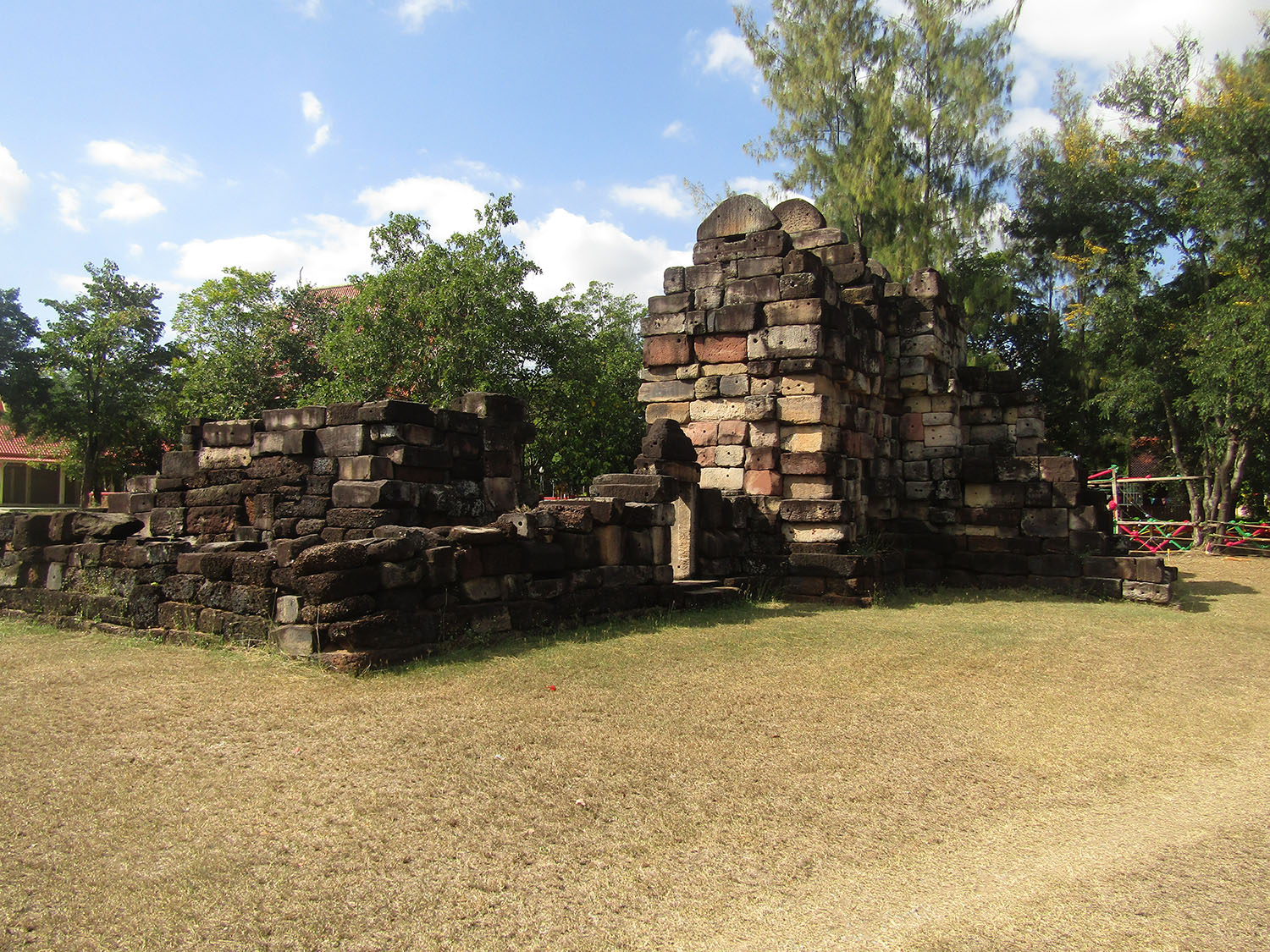
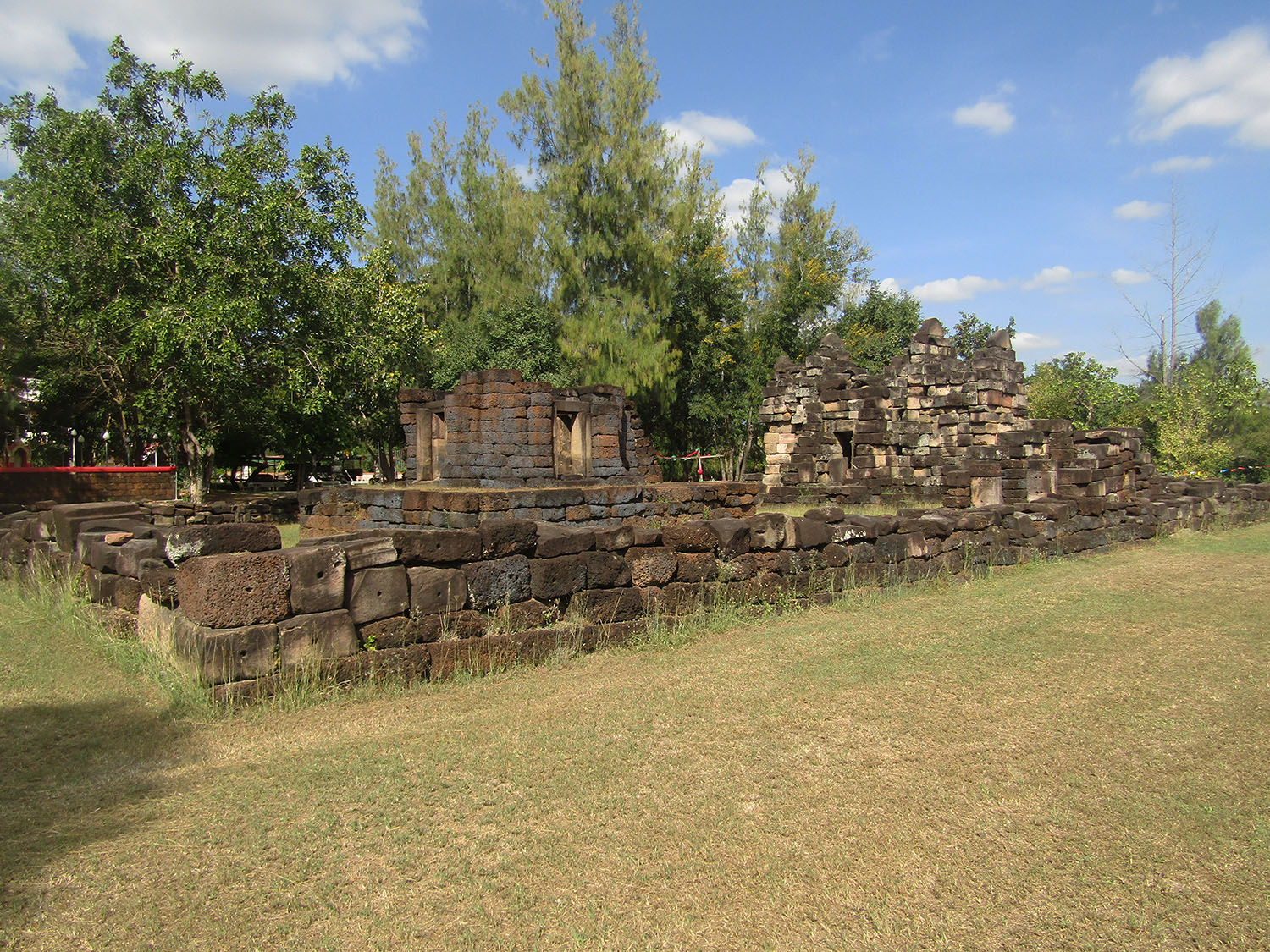
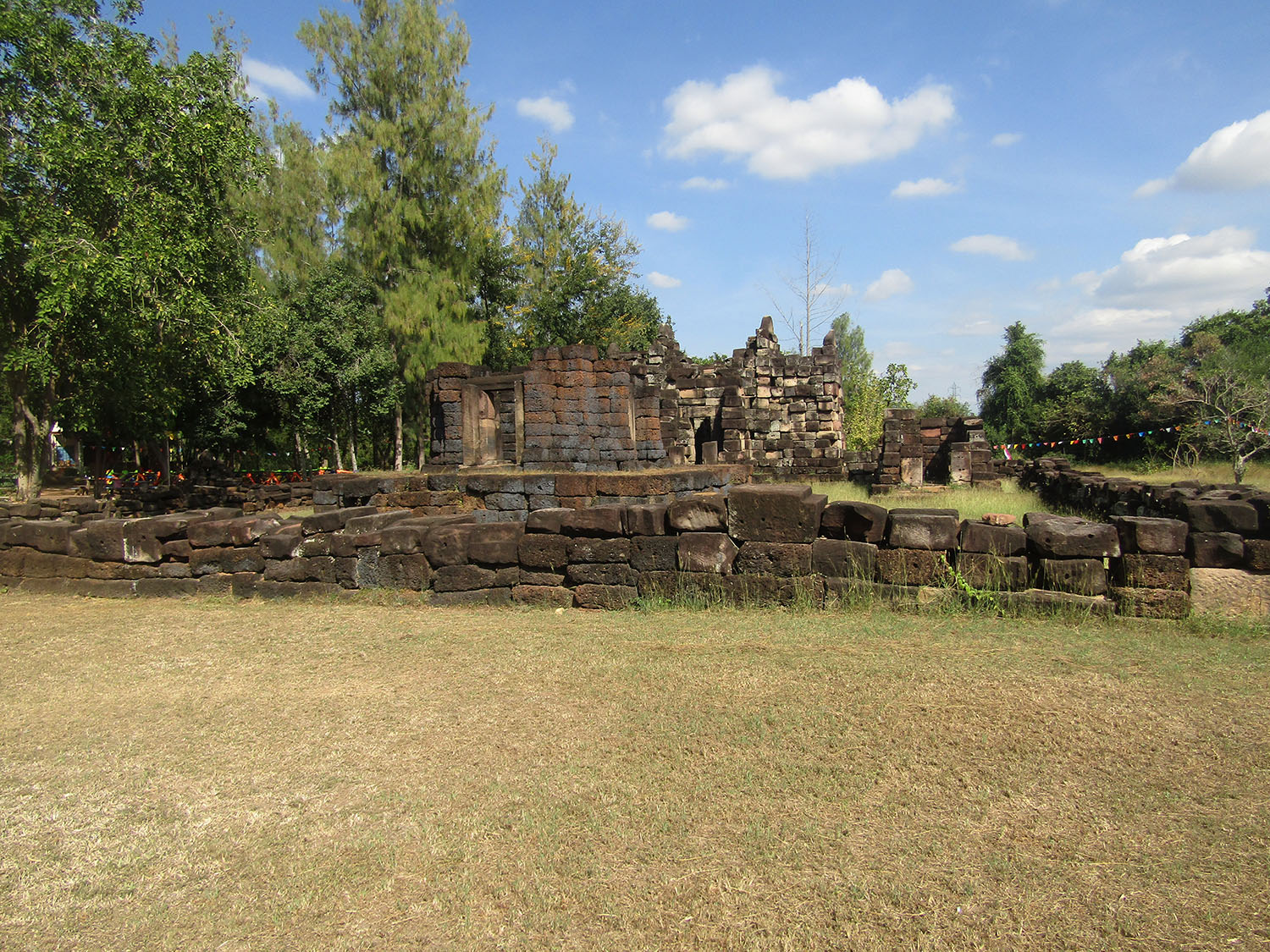 Prasat Muangkao (medical station), Sung Noen District, Nakhon Ratchasima Province
Prasat Muangkao (medical station), Sung Noen District, Nakhon Ratchasima Province
Khorat Old Gate……..The Khorat Old Gate is the entrance to a temple in the adjacent compound to Prasat Muangkao. Although rebuilt, the design replicates the four gates that were the entrances to the walled city of Nakhon Ratchasima. On top of the gates are the traditional wooden guard posts.
Returning back and across the Mittraphap Highway, we locate the final site visit in Sung Noen district. Relative to what’s gone before Prasat Ban Bu Yai is an anti-climax. The prasat is no more than a layer of sandstone blocks strewn on the ground. The evidence is that the sanctuary dates from the 11th-13th Century.
Returning back and across the Mittraphap Highway, we locate the final site visit in Sung Noen district. Relative to what’s gone before Prasat Ban Bu Yai is an anti-climax. The prasat is no more than a layer of sandstone blocks strewn on the ground. The evidence is that the sanctuary dates from the 11th-13th Century.
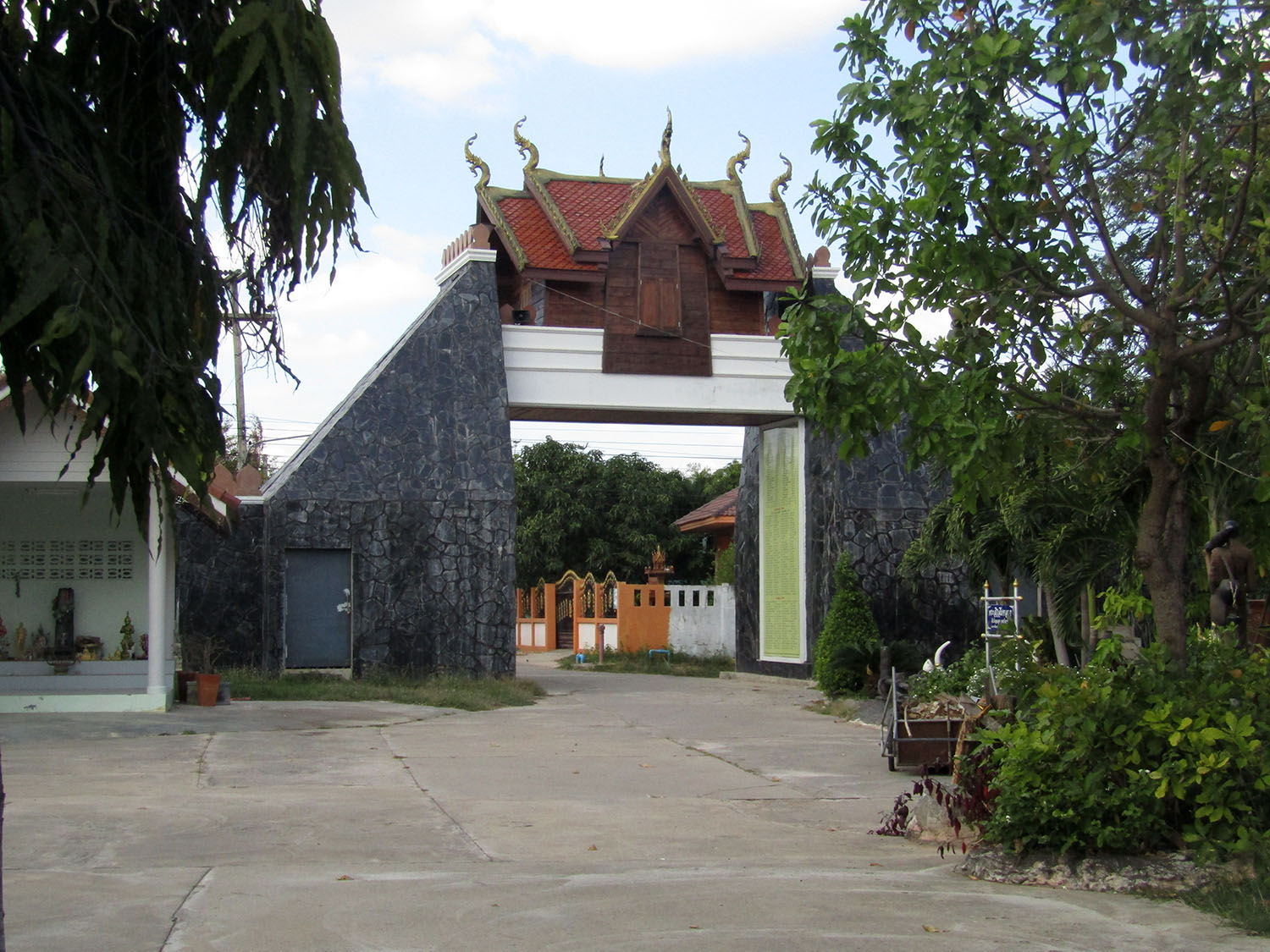
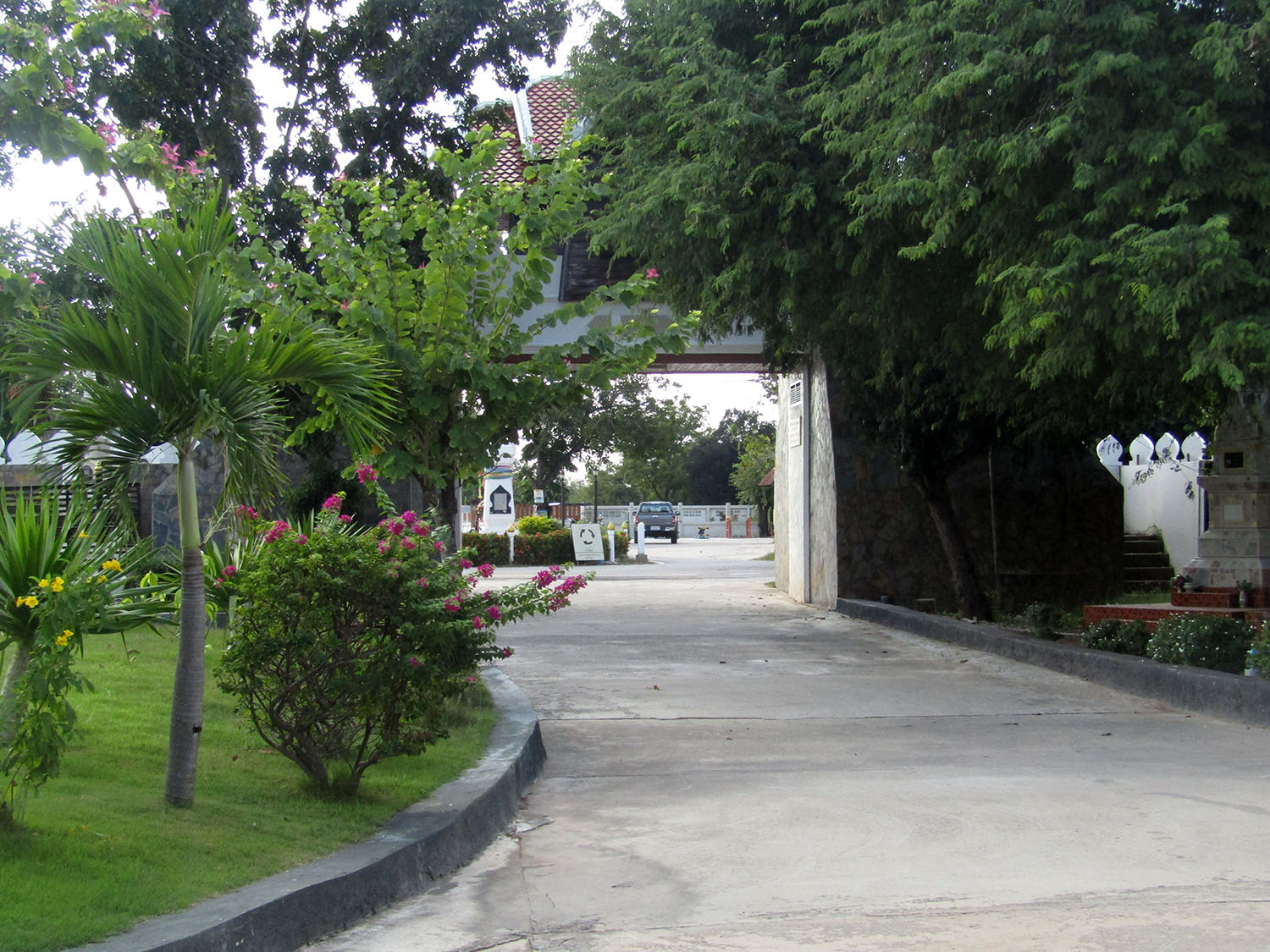
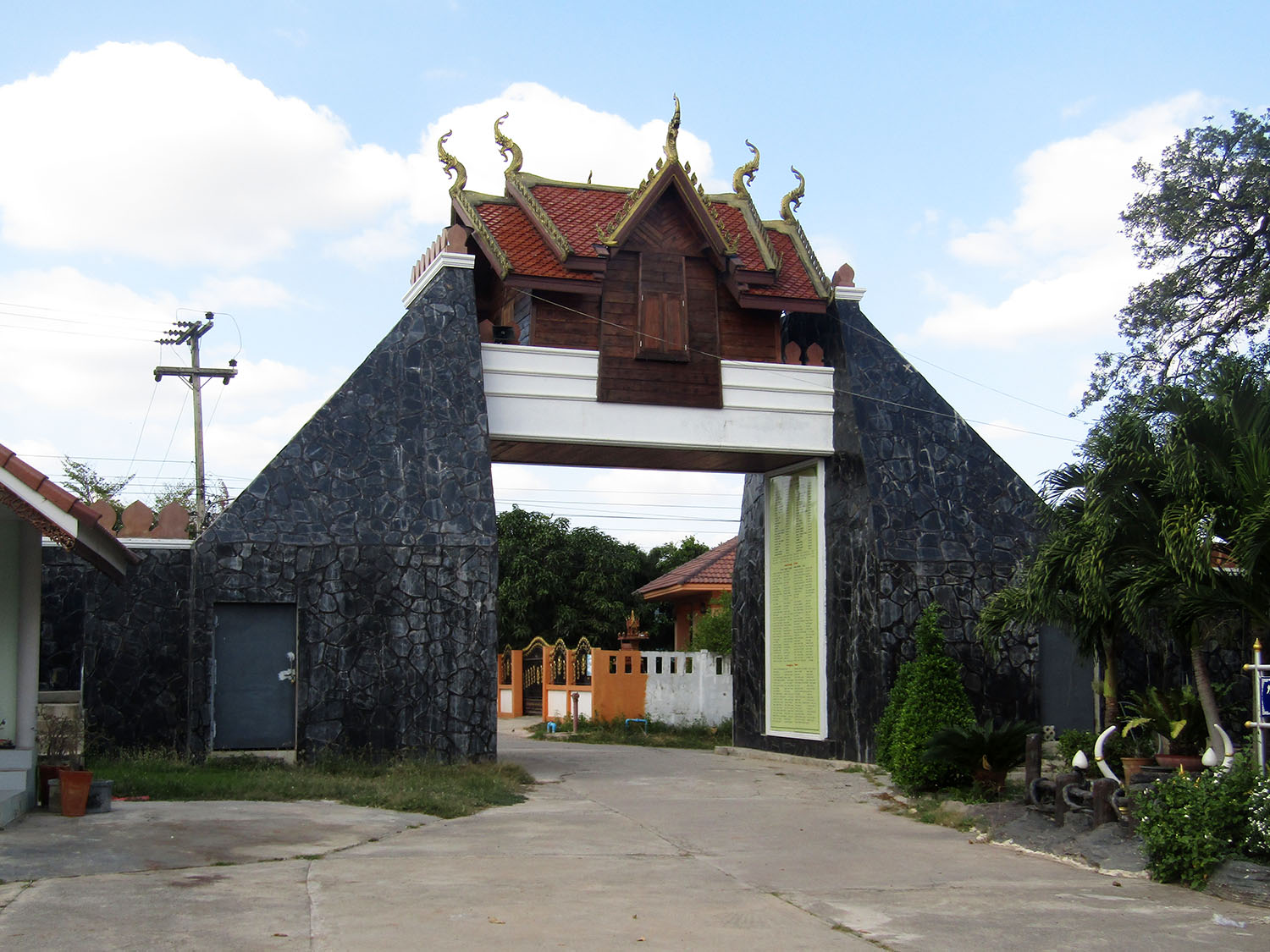 Khorat Old Gate near Prasat Muangkao, Sung Noen District, Nakhon Ratchasima Province
Khorat Old Gate near Prasat Muangkao, Sung Noen District, Nakhon Ratchasima Province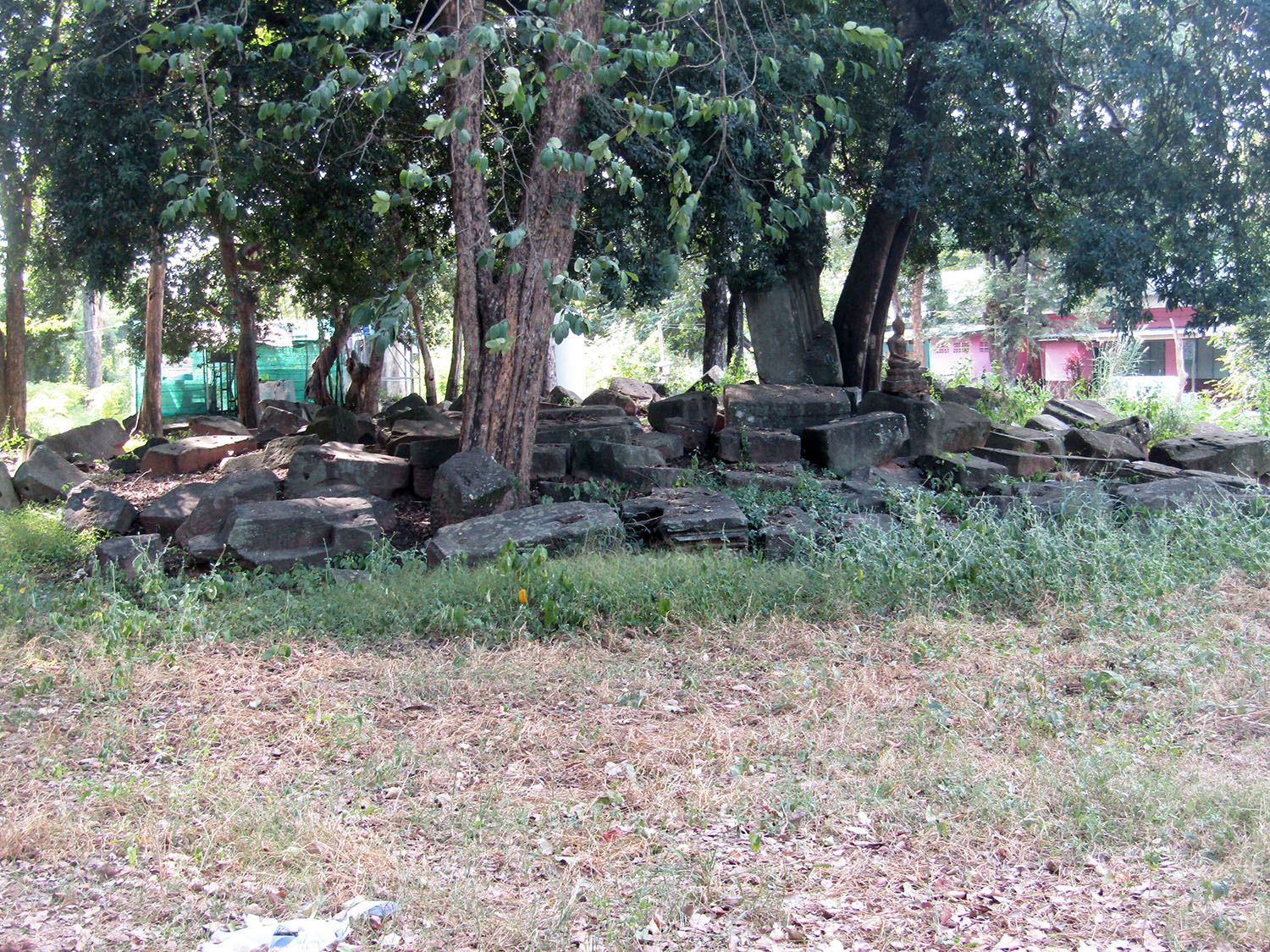
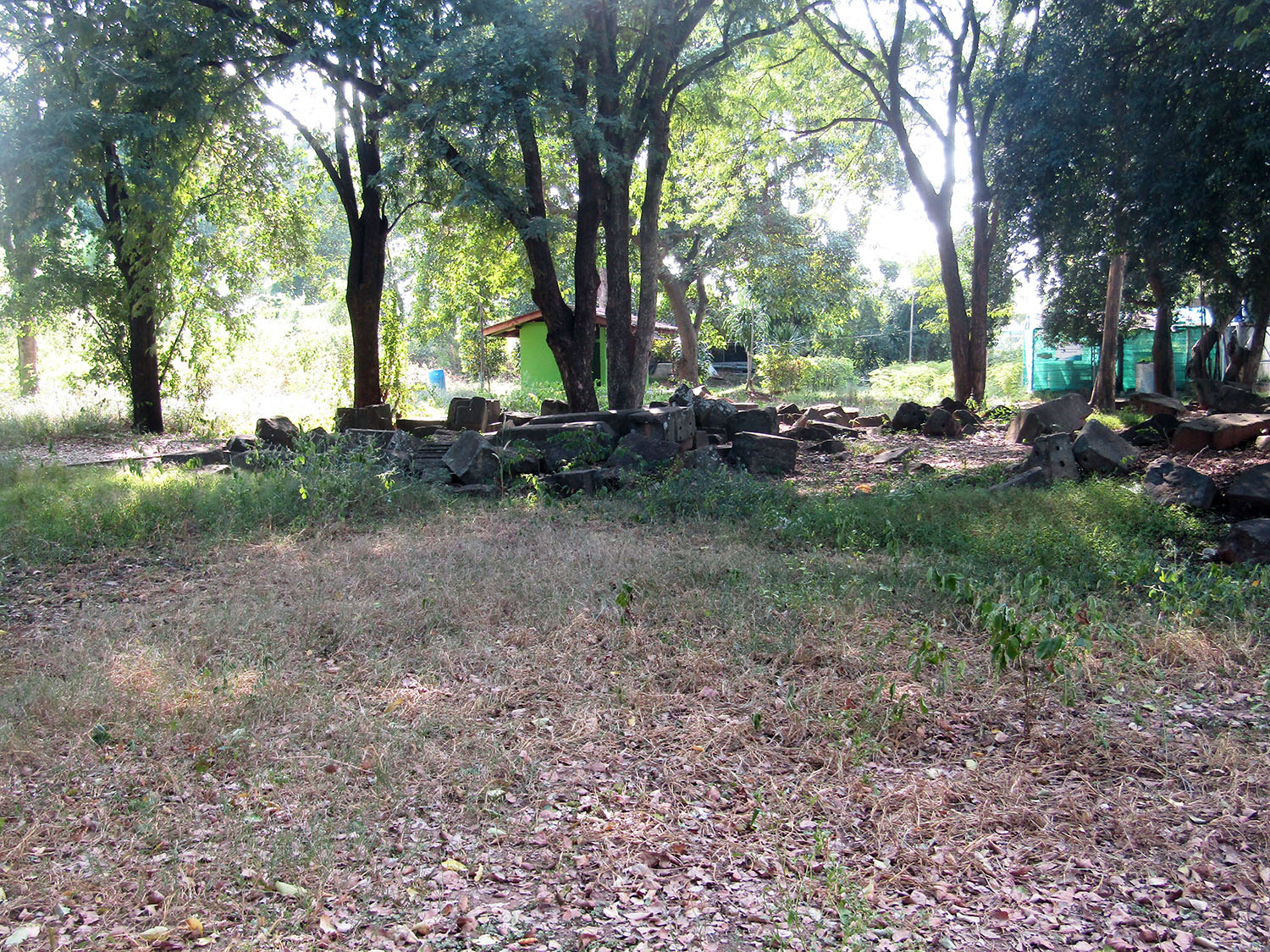
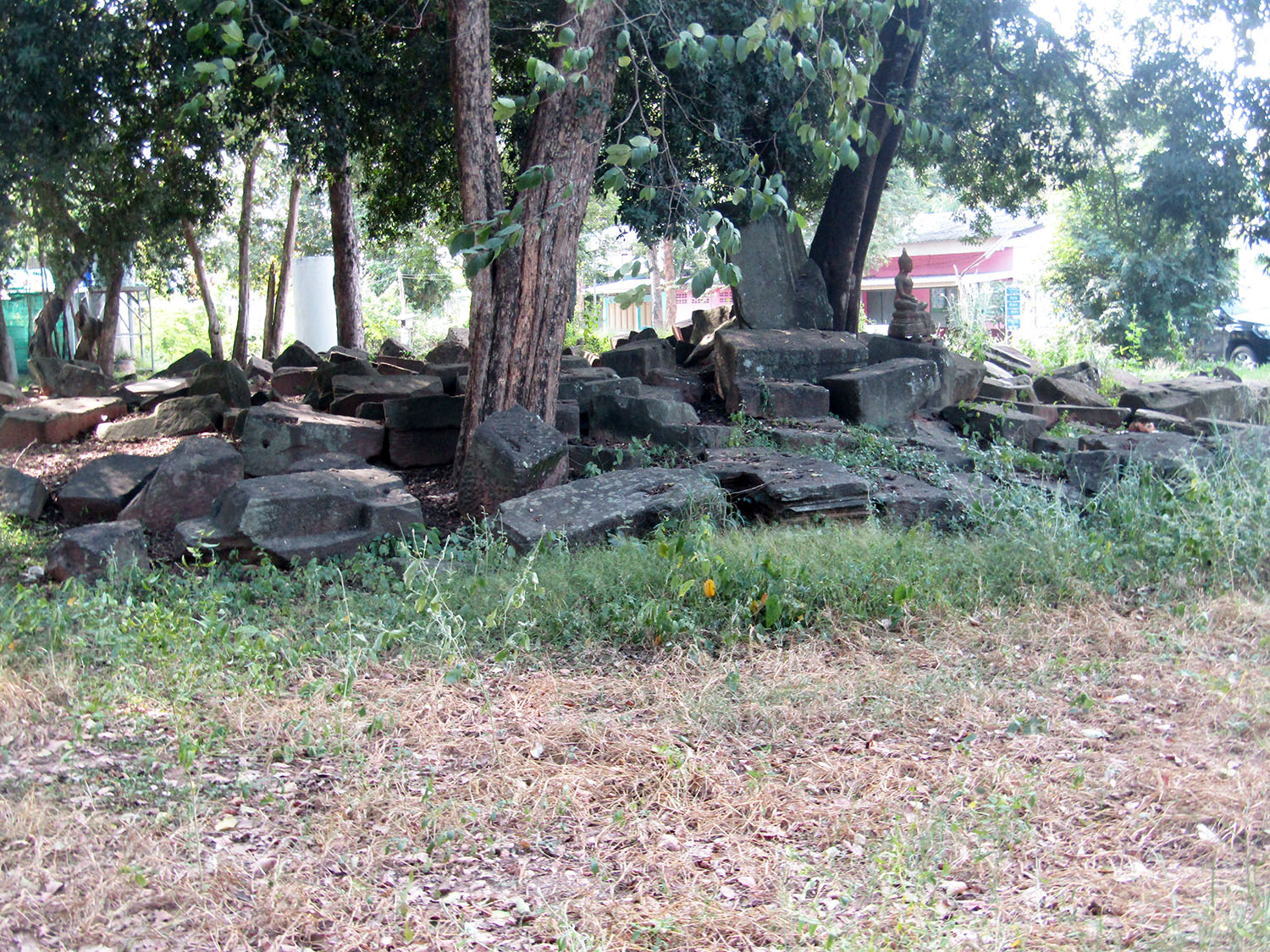 Prasat Ban Bu Yai, Sung Noen District, Nakhon Ratchasima Province
Prasat Ban Bu Yai, Sung Noen District, Nakhon Ratchasima Province
Korat Fossil Museum……..Now in mid-afternoon there is still time to add more site visits. I do have a final aiming point for the evening but it’s not set in stone. However, an important attraction that receives my attention certainly is but it will take me well south of my direction of travel. The Korat Fossil Museum (100 baht) is located not far from Suranaree University of Technology and Korat Zoo, southwest of the city. One concern is that according to Google, the museum closes at 4pm and I’m warned there may not be enough time to spend there. The GPS suggests it will take half an hour to reach it. I decide to give it a go and reach the museum at just before 3.30pm. At the ticket office, I’m told last entry is 4.30pm so that’s a big relief.
Entering the complex, you are immediately aware of exhibits of petrified wood, then into the first hall there are more examples, some incredibly beautiful. The layout thereafter is designed to be fun as well as educate. Visual displays, exhibits and videos draw you in to the circumstances and chemical processes involved in converting organic material into stone through mineral infusion. I would say they’ve left no stone unturned as they explain that petrified wood has been used as primitive tools and jewelry.
Entering the complex, you are immediately aware of exhibits of petrified wood, then into the first hall there are more examples, some incredibly beautiful. The layout thereafter is designed to be fun as well as educate. Visual displays, exhibits and videos draw you in to the circumstances and chemical processes involved in converting organic material into stone through mineral infusion. I would say they’ve left no stone unturned as they explain that petrified wood has been used as primitive tools and jewelry.
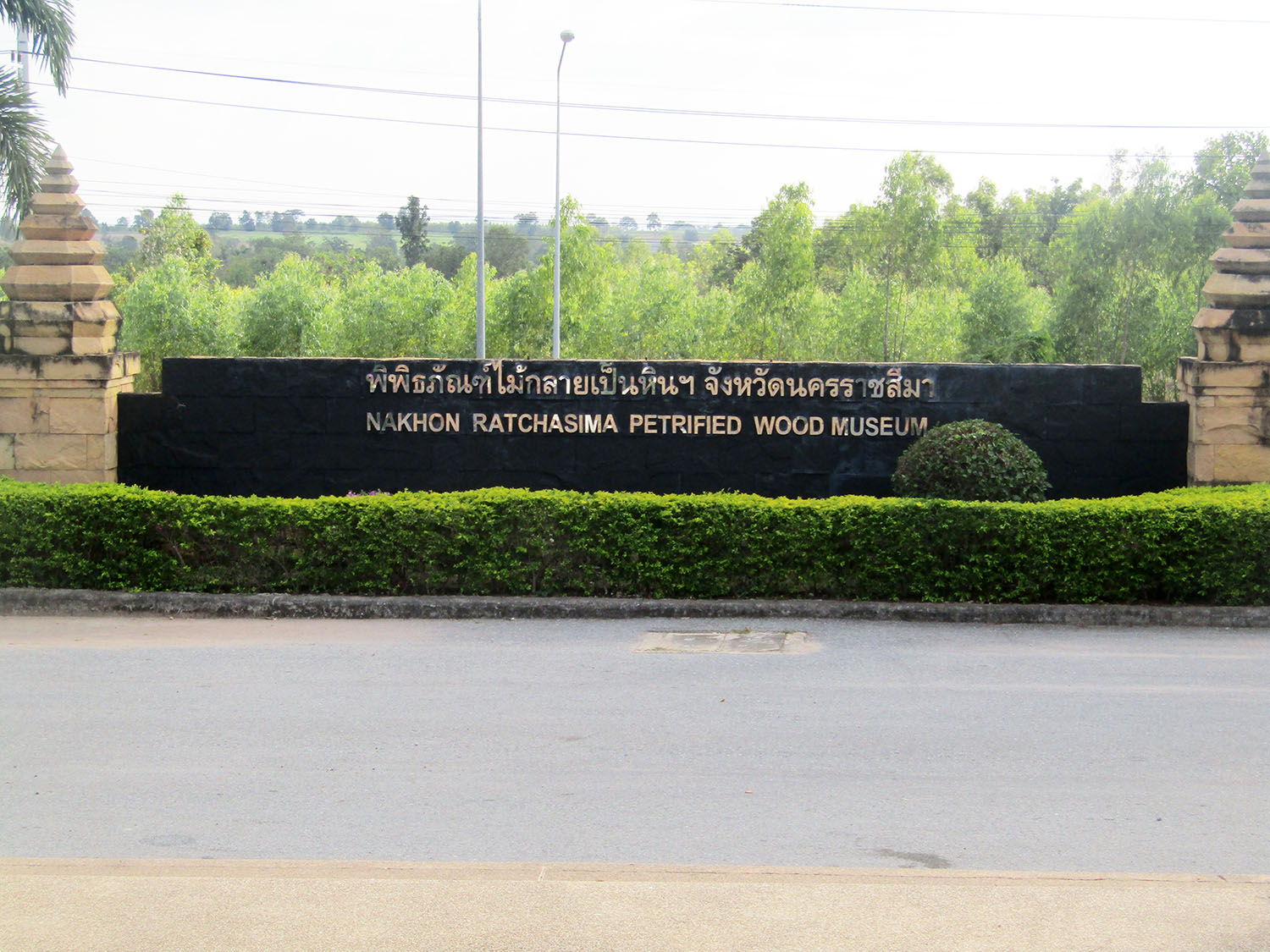
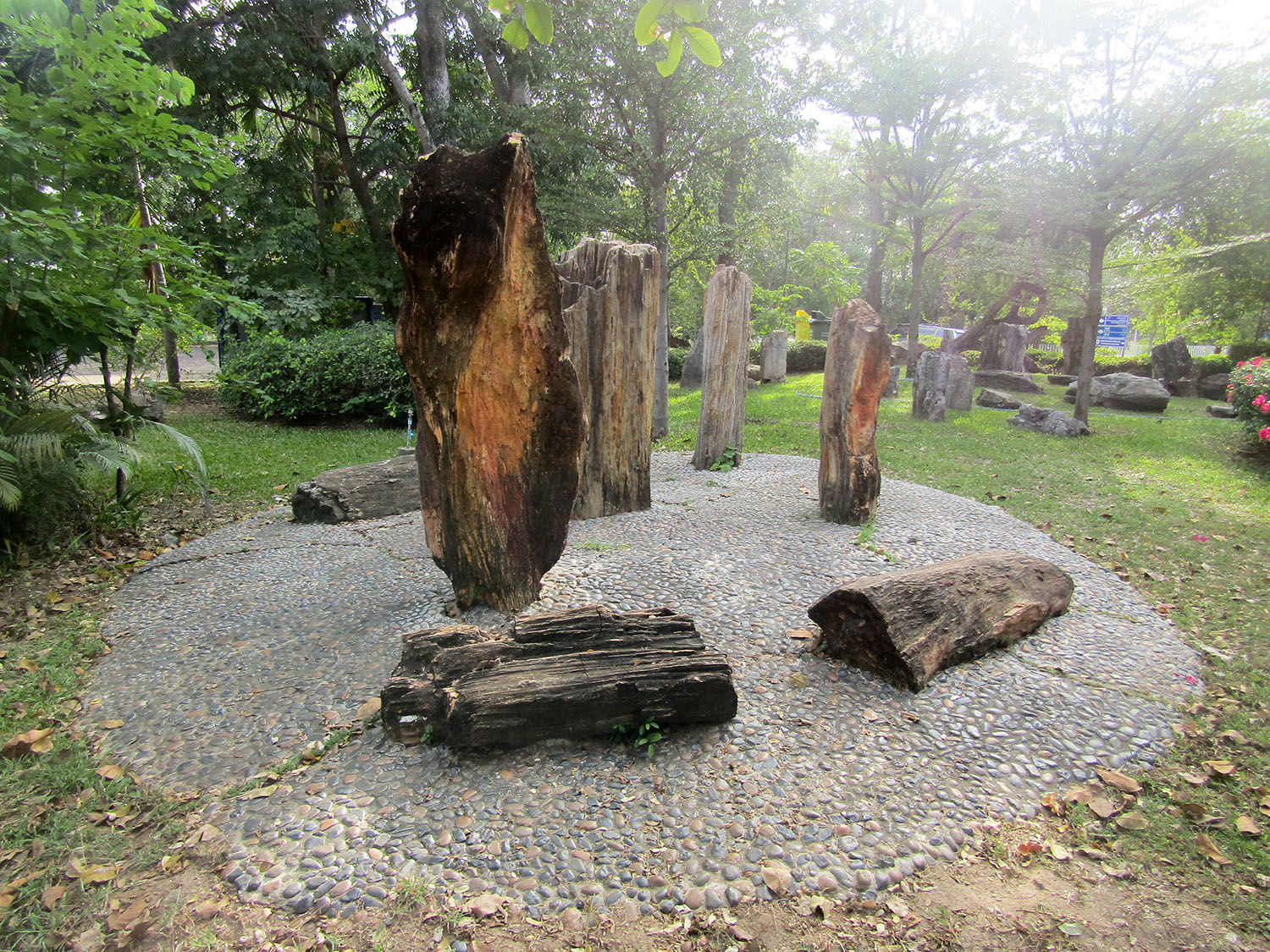
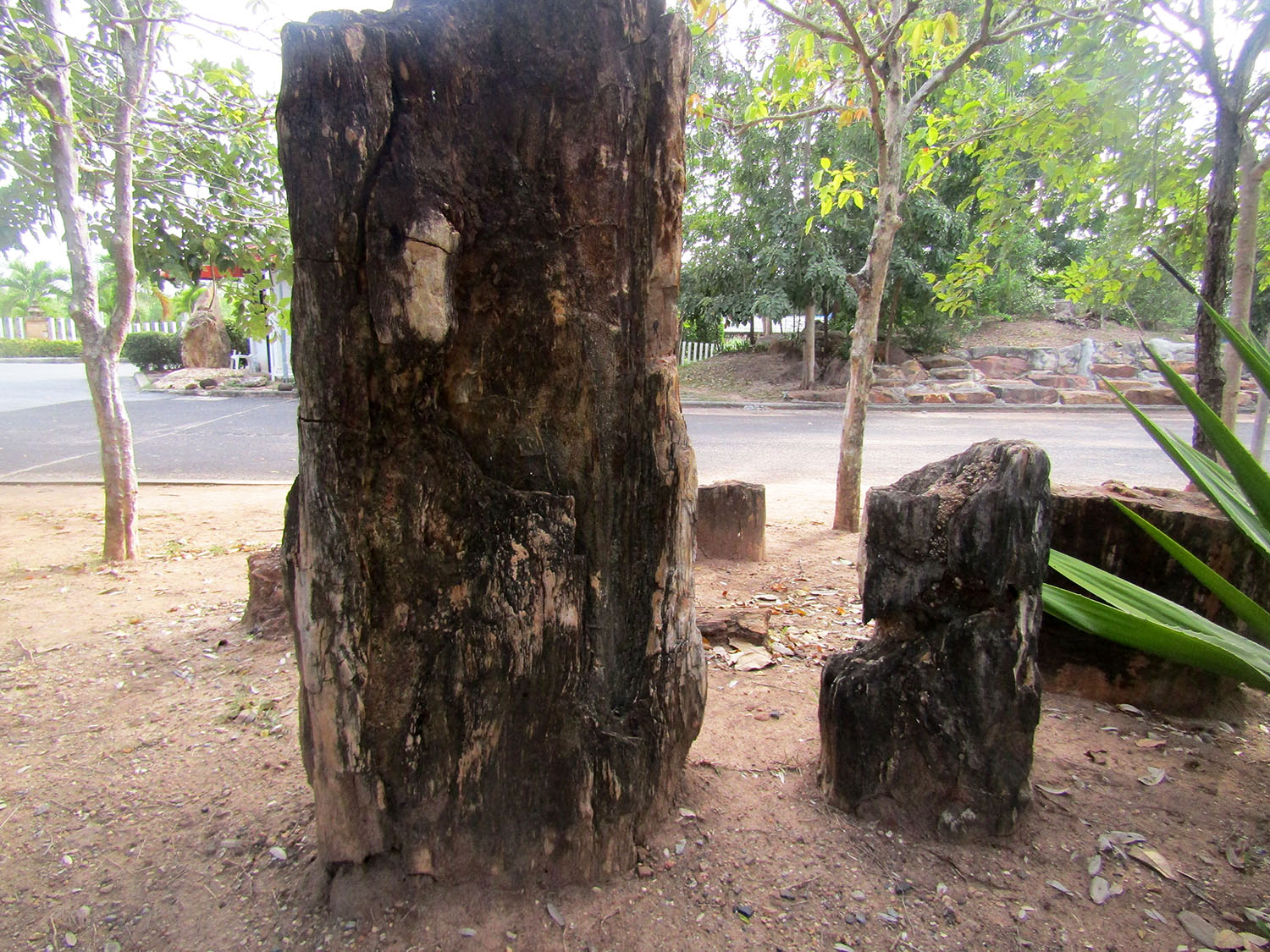

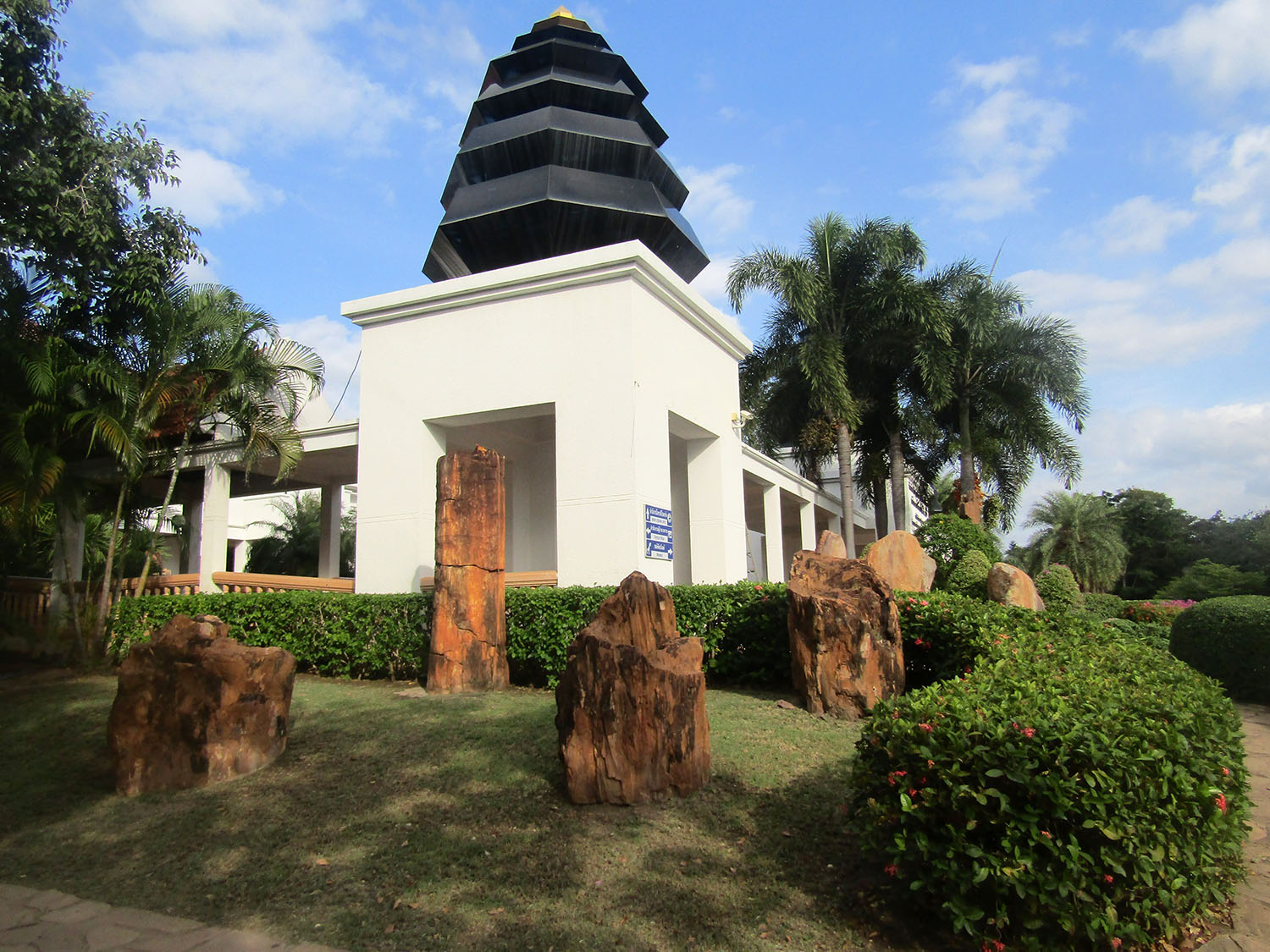
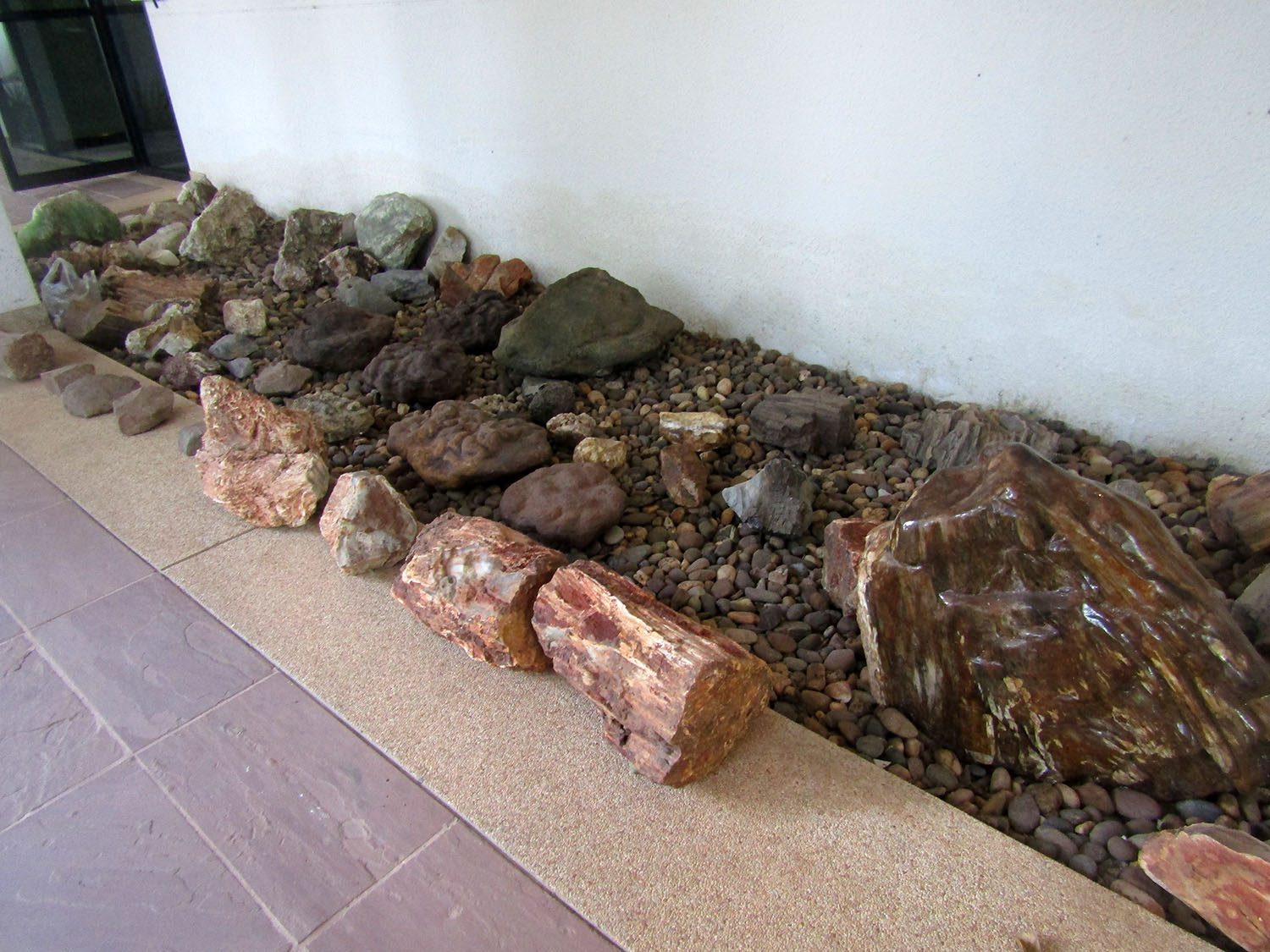
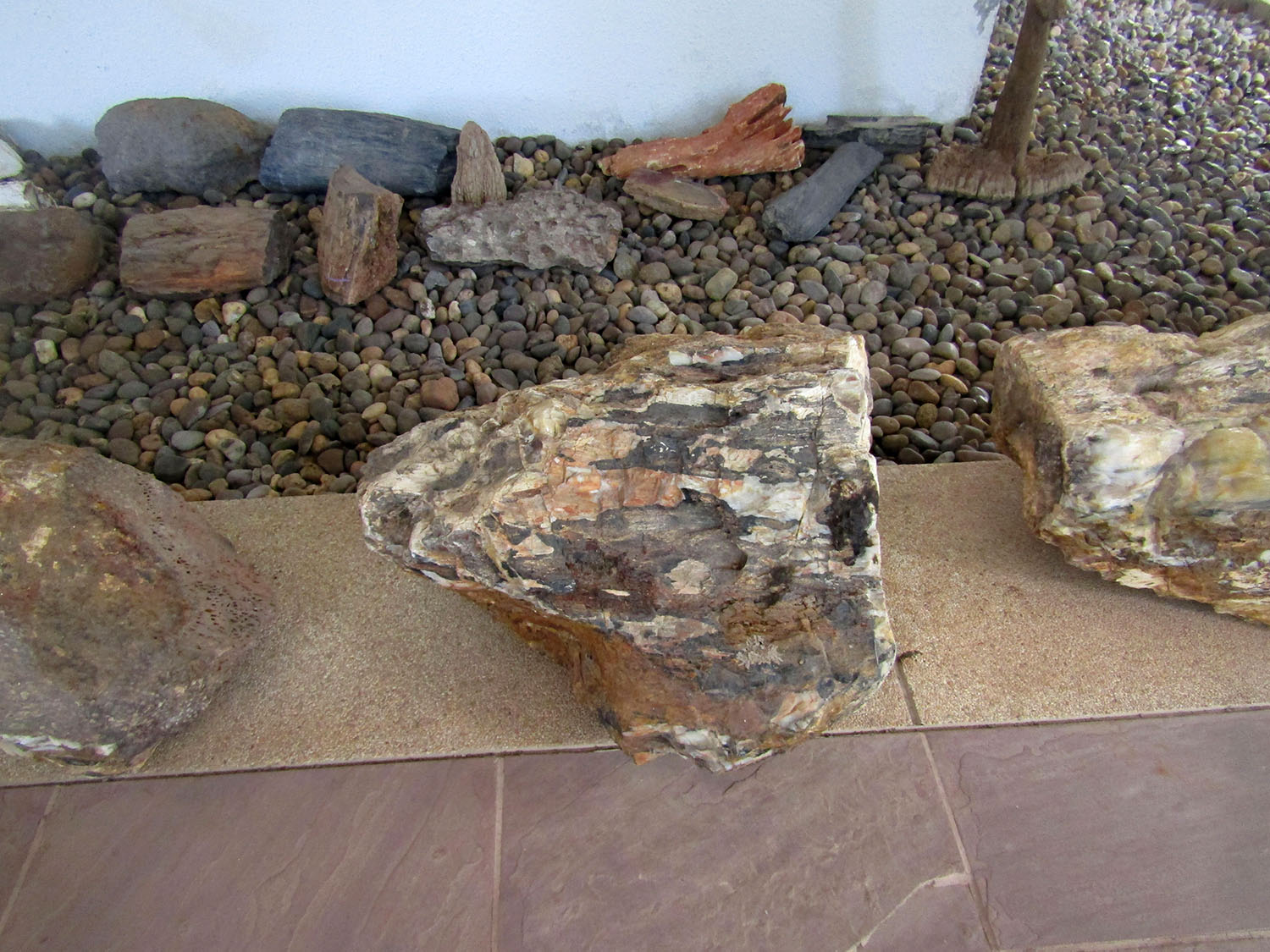
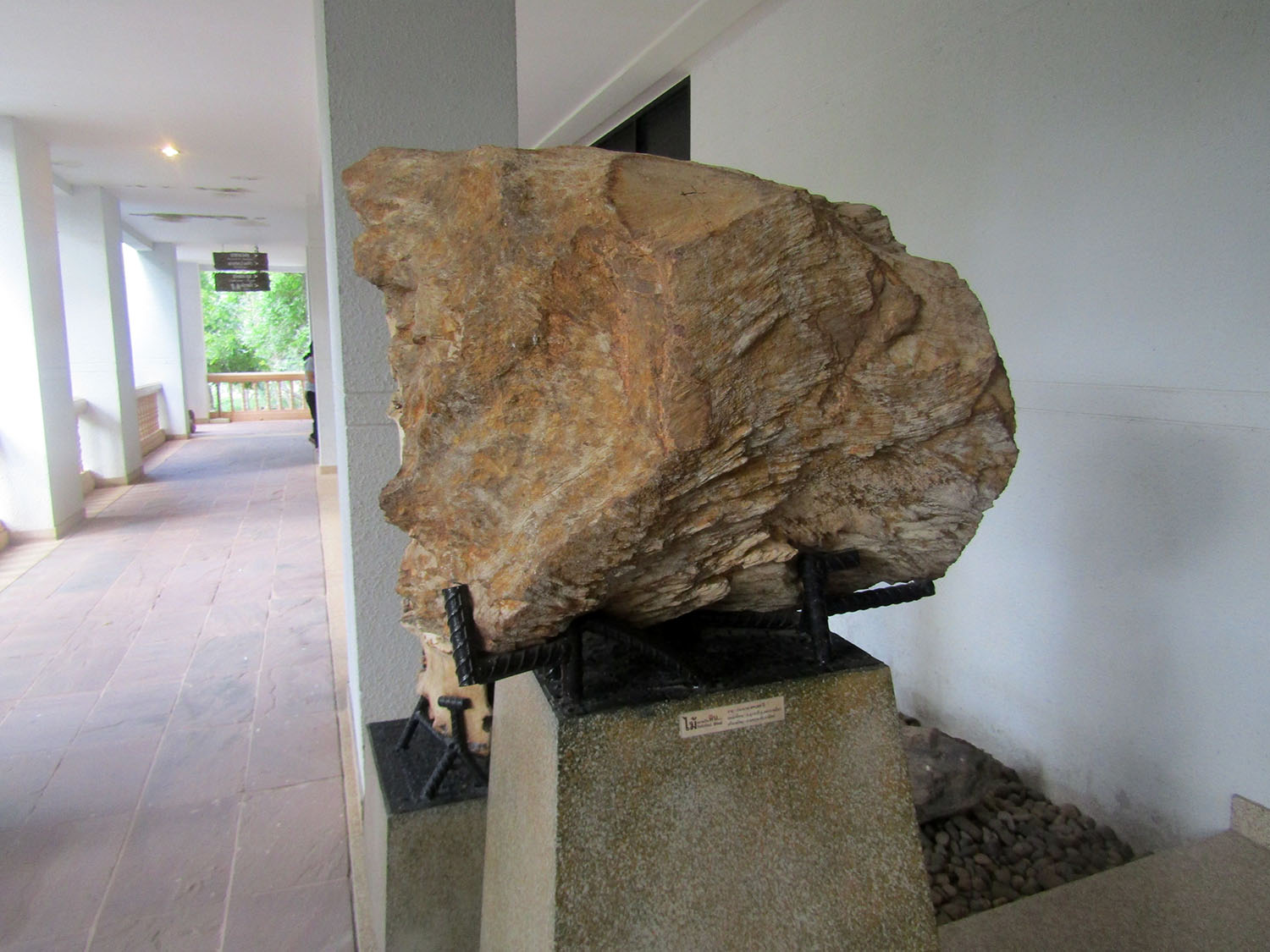
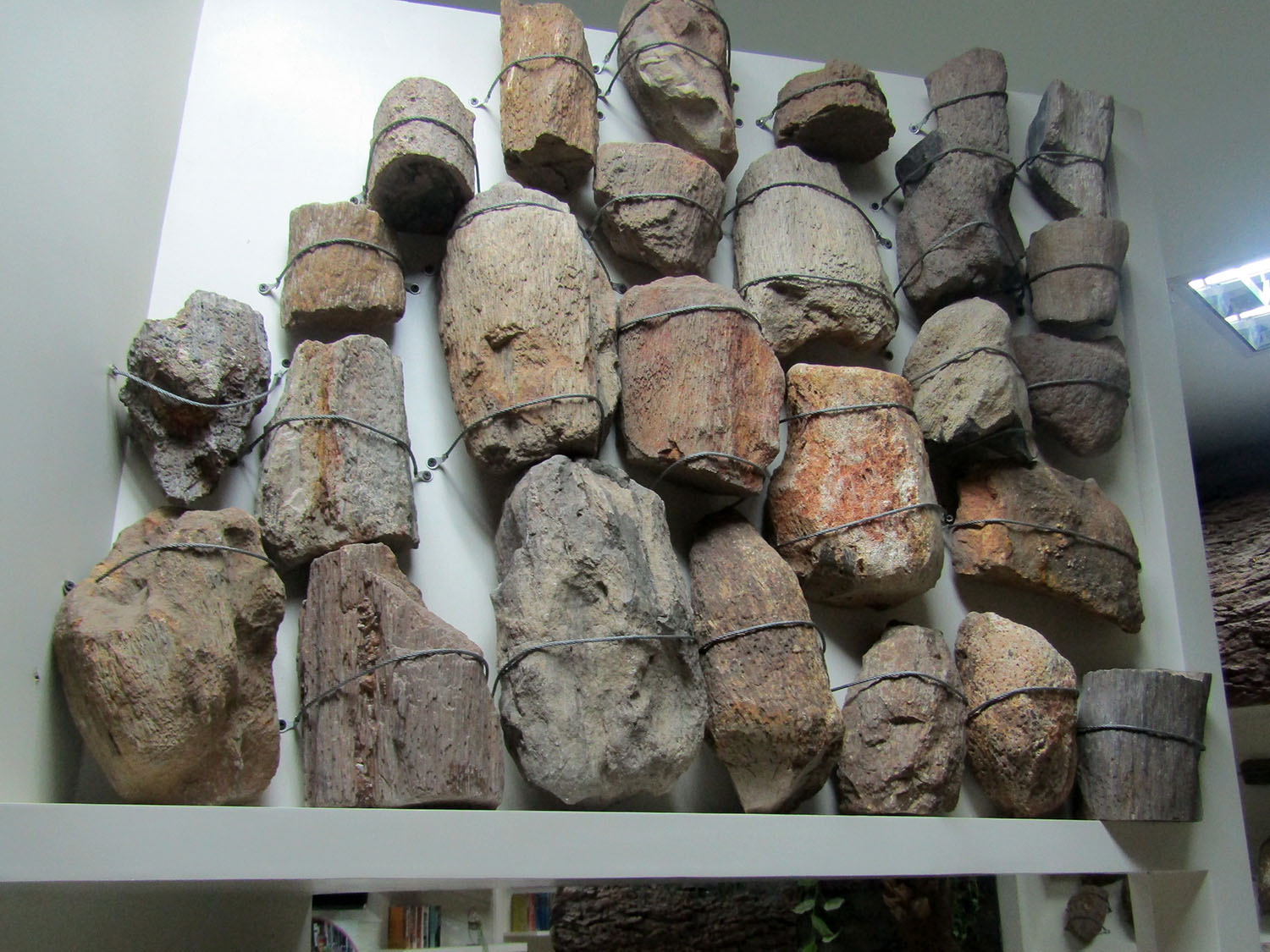
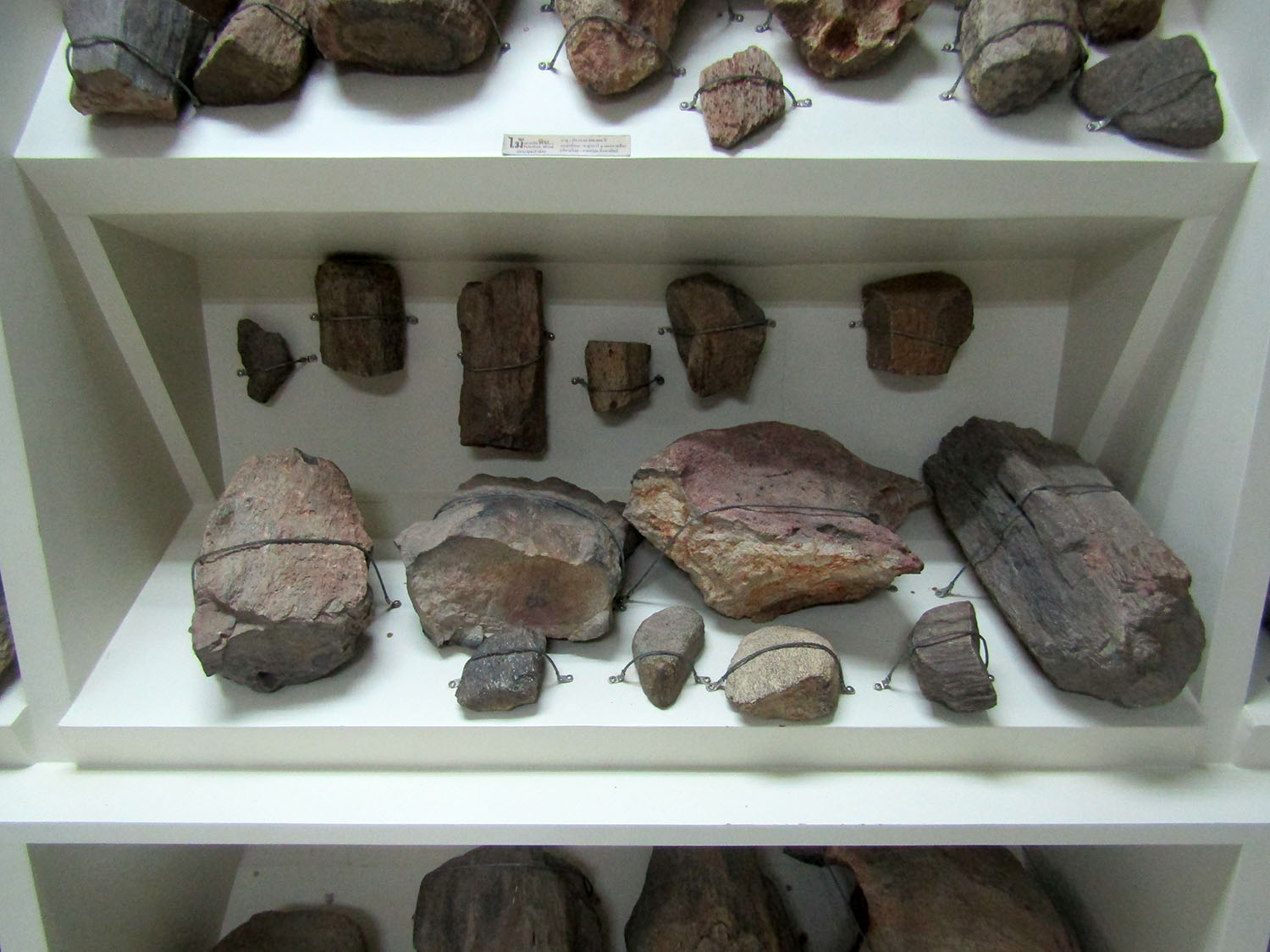
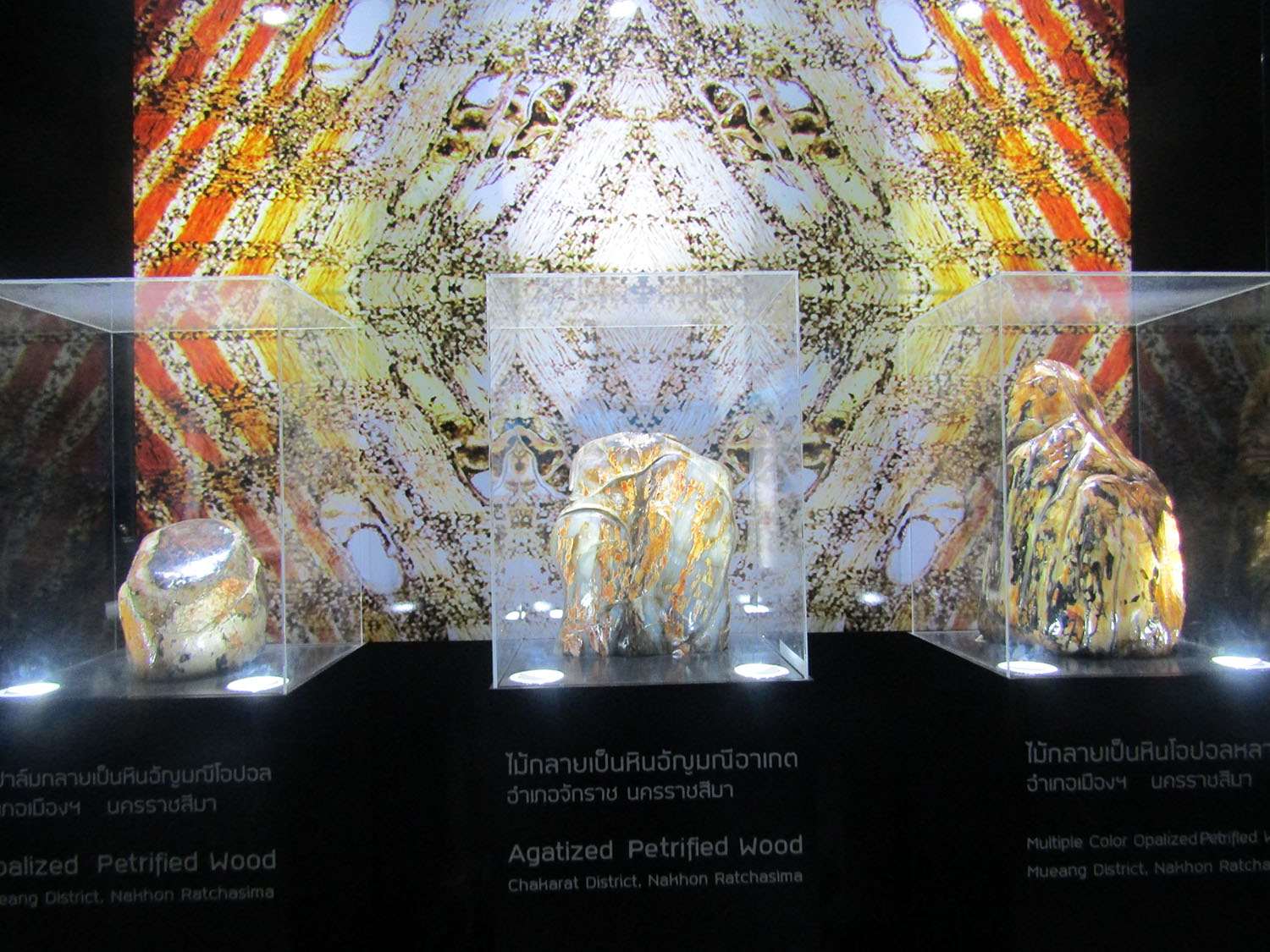
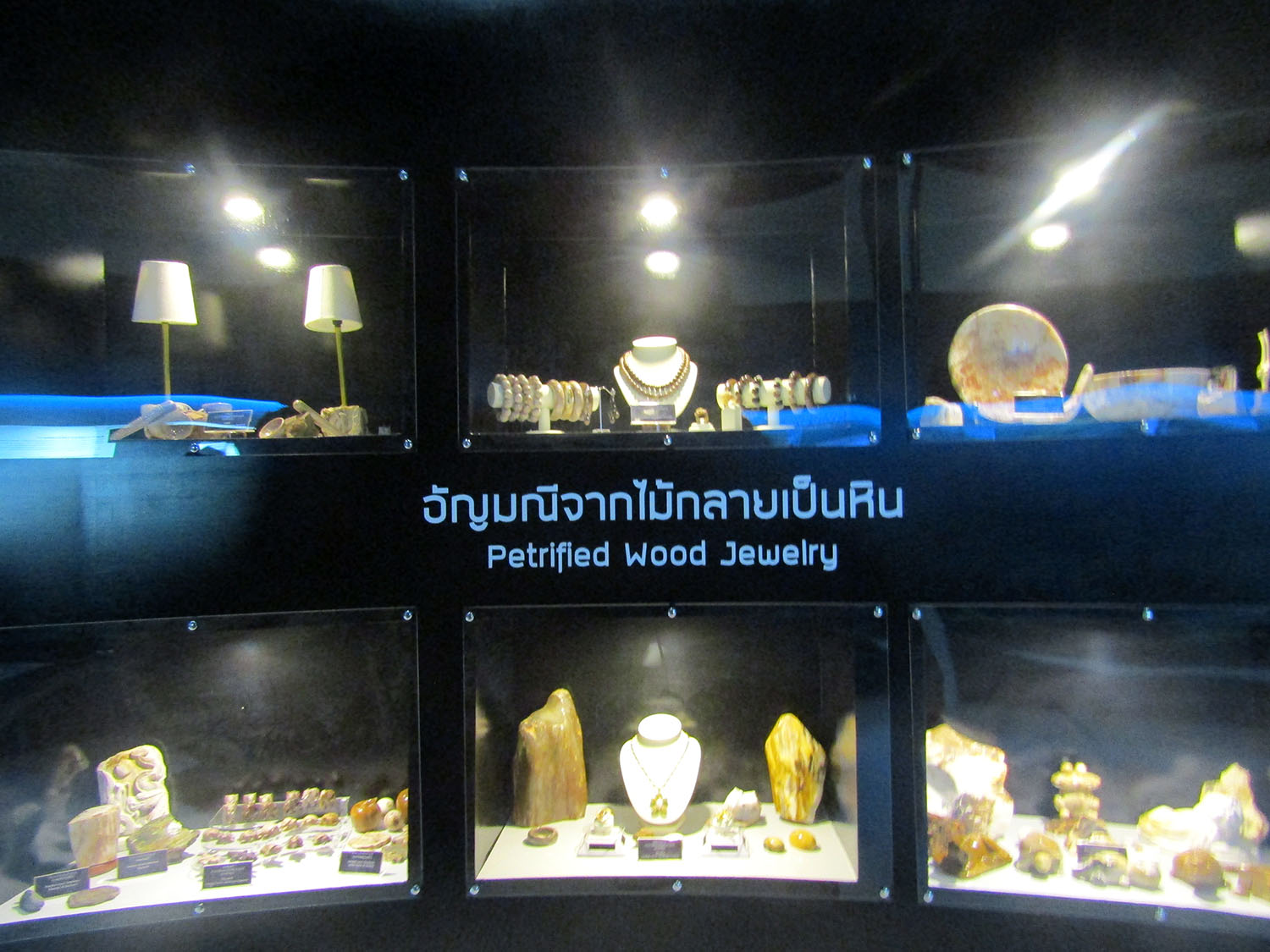
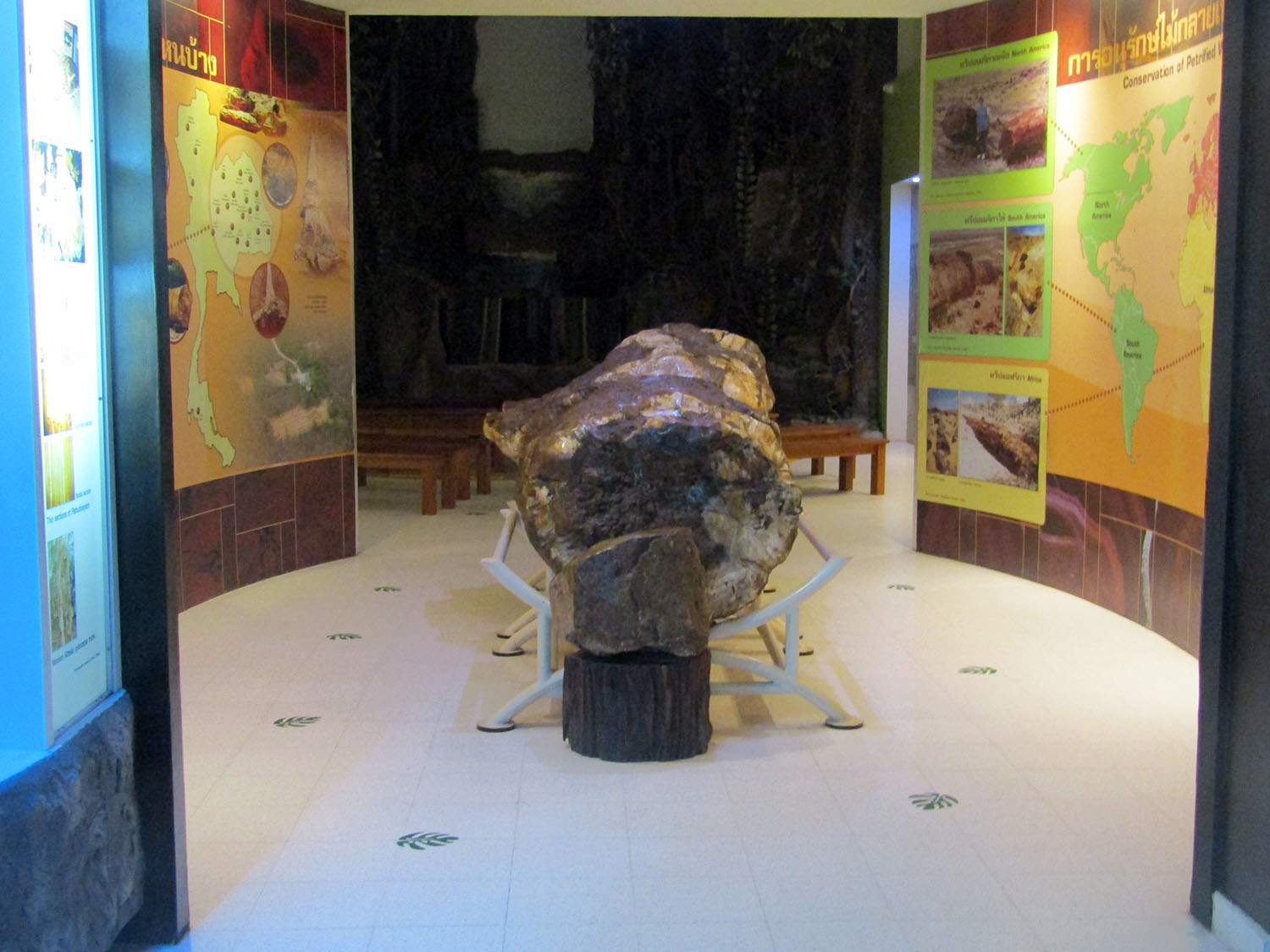
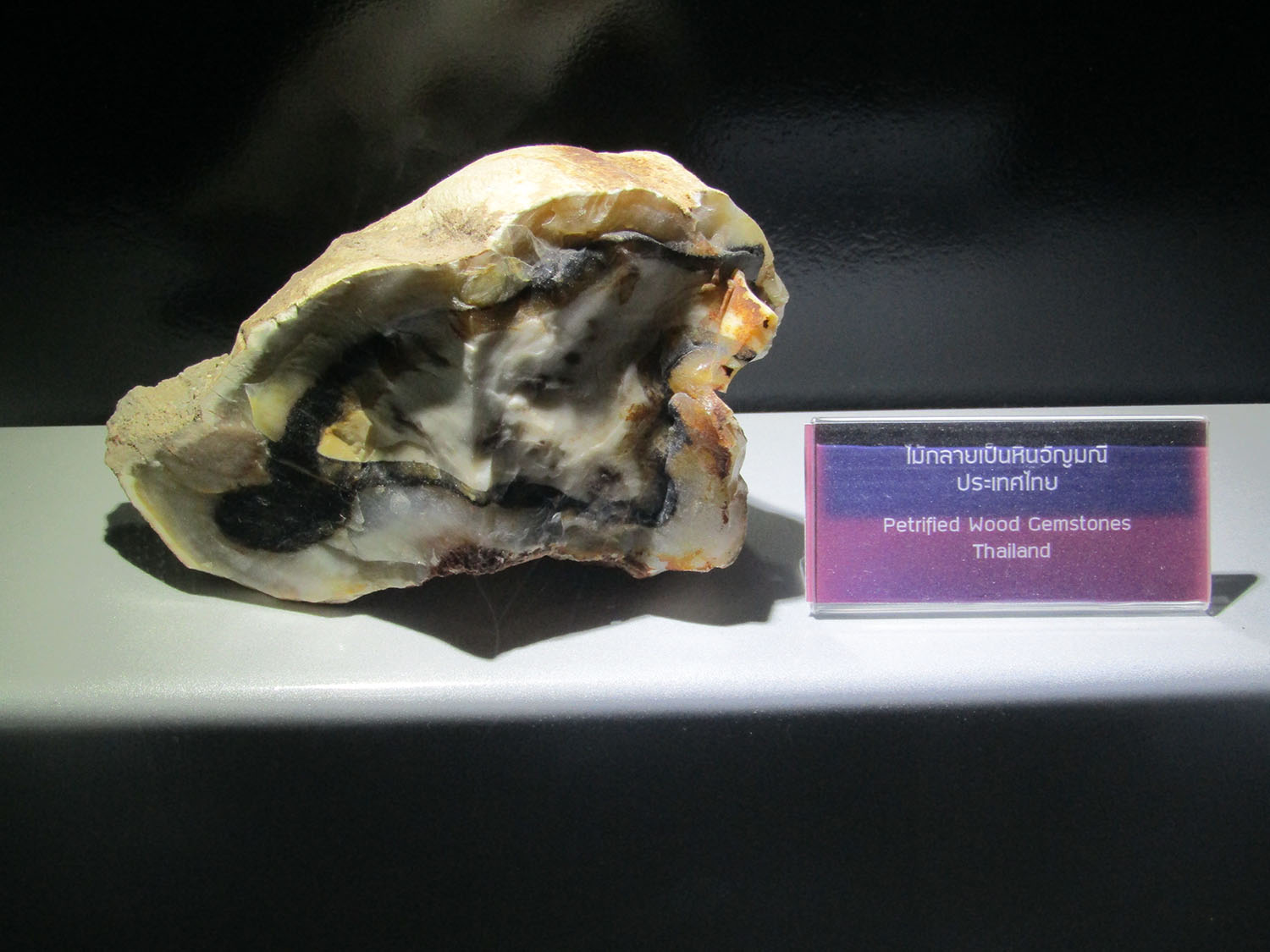
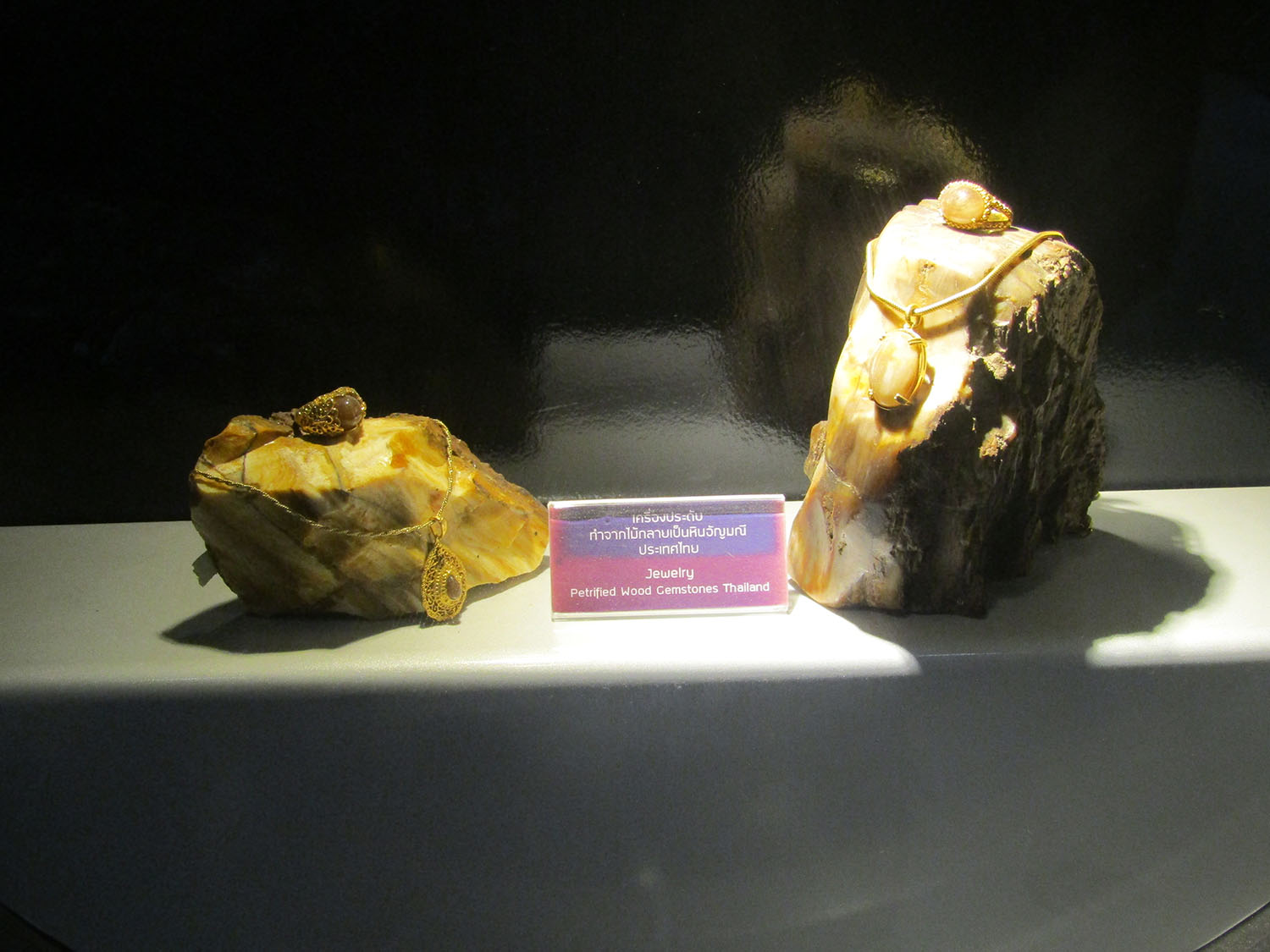
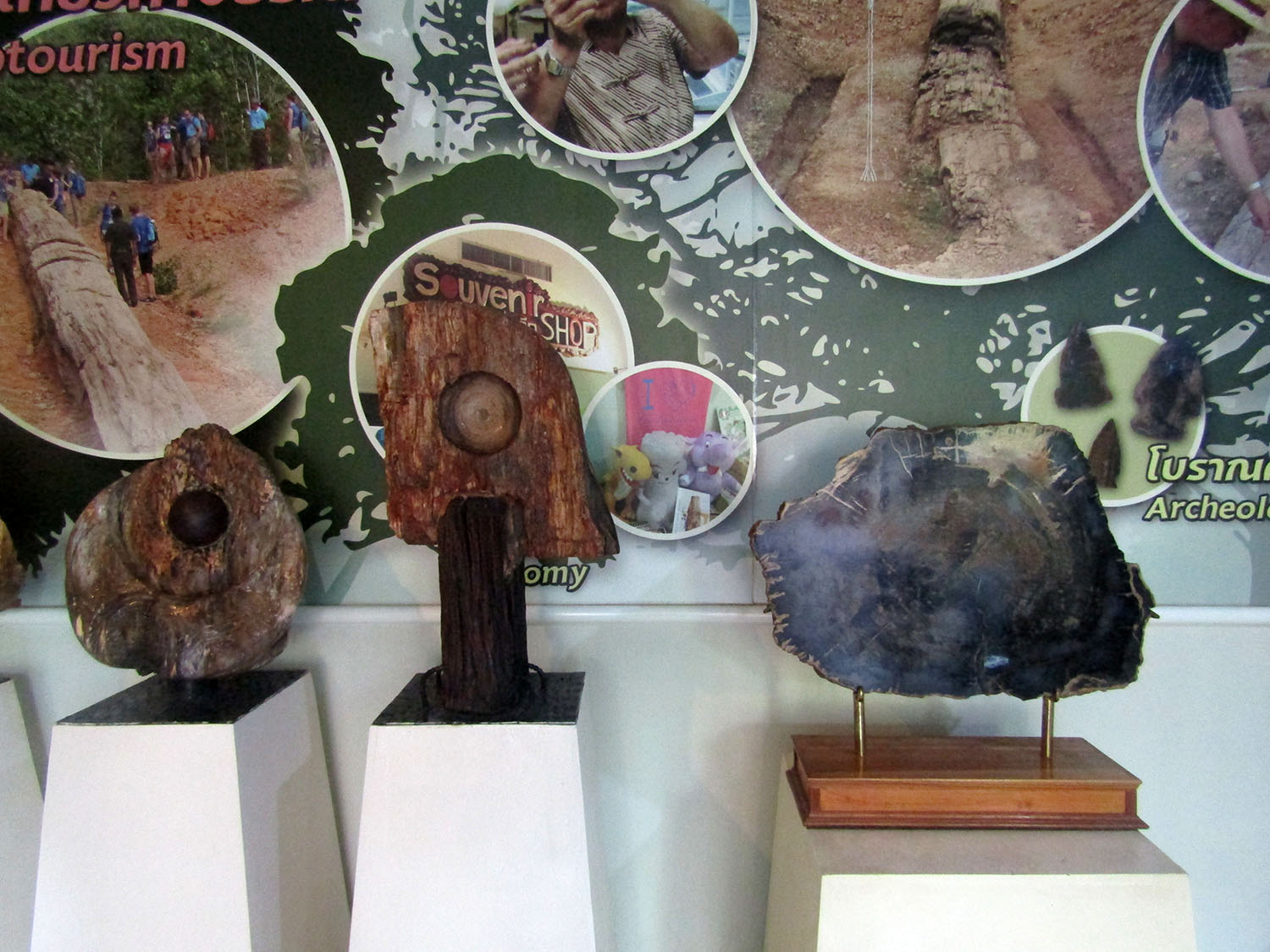
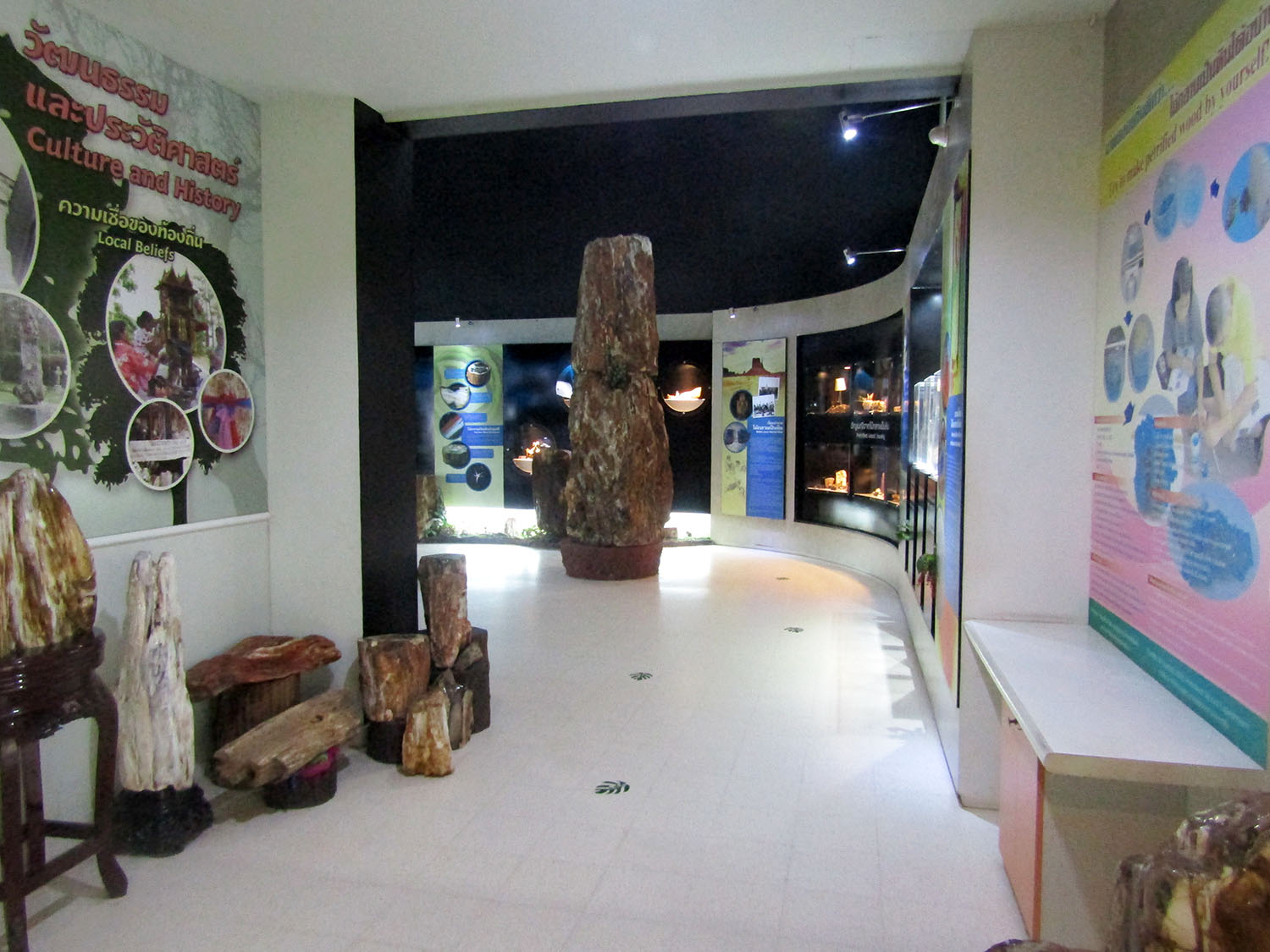
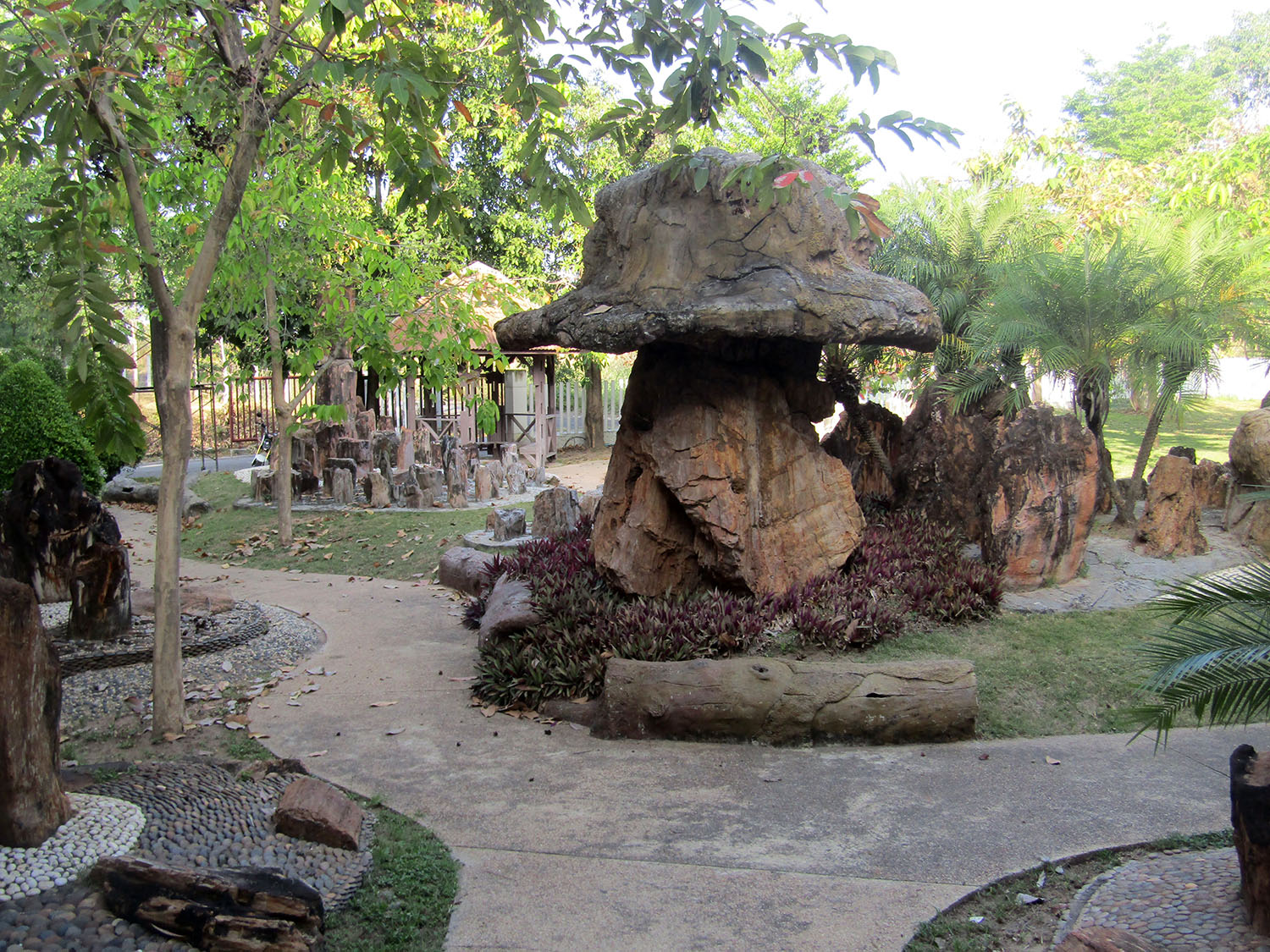 Museum of Pertified Wood, Ampoe Mueang District, Nakhon Ratchasima Province
Museum of Pertified Wood, Ampoe Mueang District, Nakhon Ratchasima Province
From the petrified wood museum, you enter more halls including a dinosaur museum and ancient elephant museum while all the way there are animations, geographical models and videos that succeed in making the subject matter as realistic as possible.
I found the hour at the fossil museum was hardly sufficient confirmed by the museum’s website that recommends two and a half hours. I could happily have spent this amount of time here. I conclude that this museum in the Geopark rich in samples, represents an important area of study related to any organisms that find themselves trapped in the sediment of time.
I found the hour at the fossil museum was hardly sufficient confirmed by the museum’s website that recommends two and a half hours. I could happily have spent this amount of time here. I conclude that this museum in the Geopark rich in samples, represents an important area of study related to any organisms that find themselves trapped in the sediment of time.
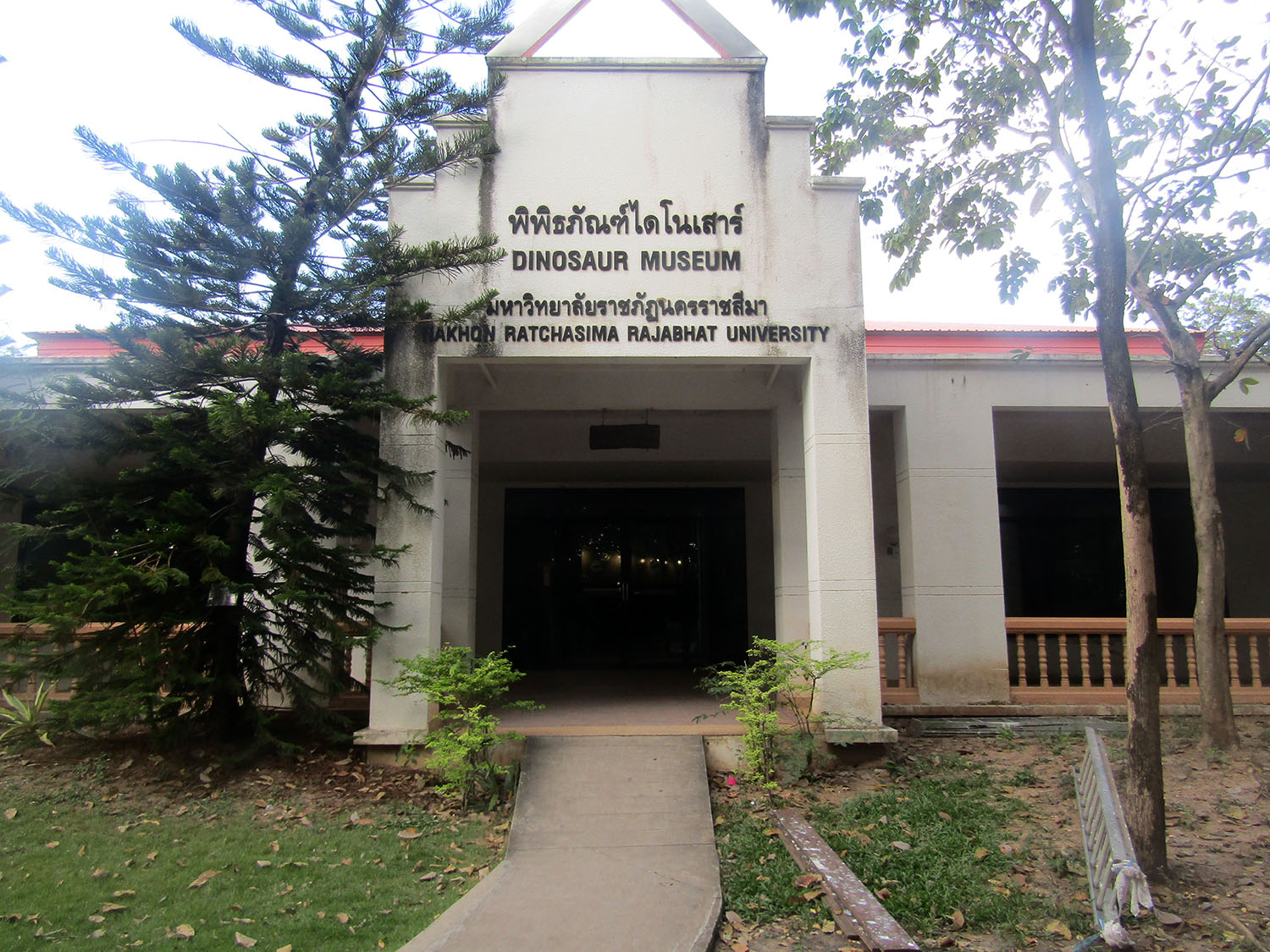
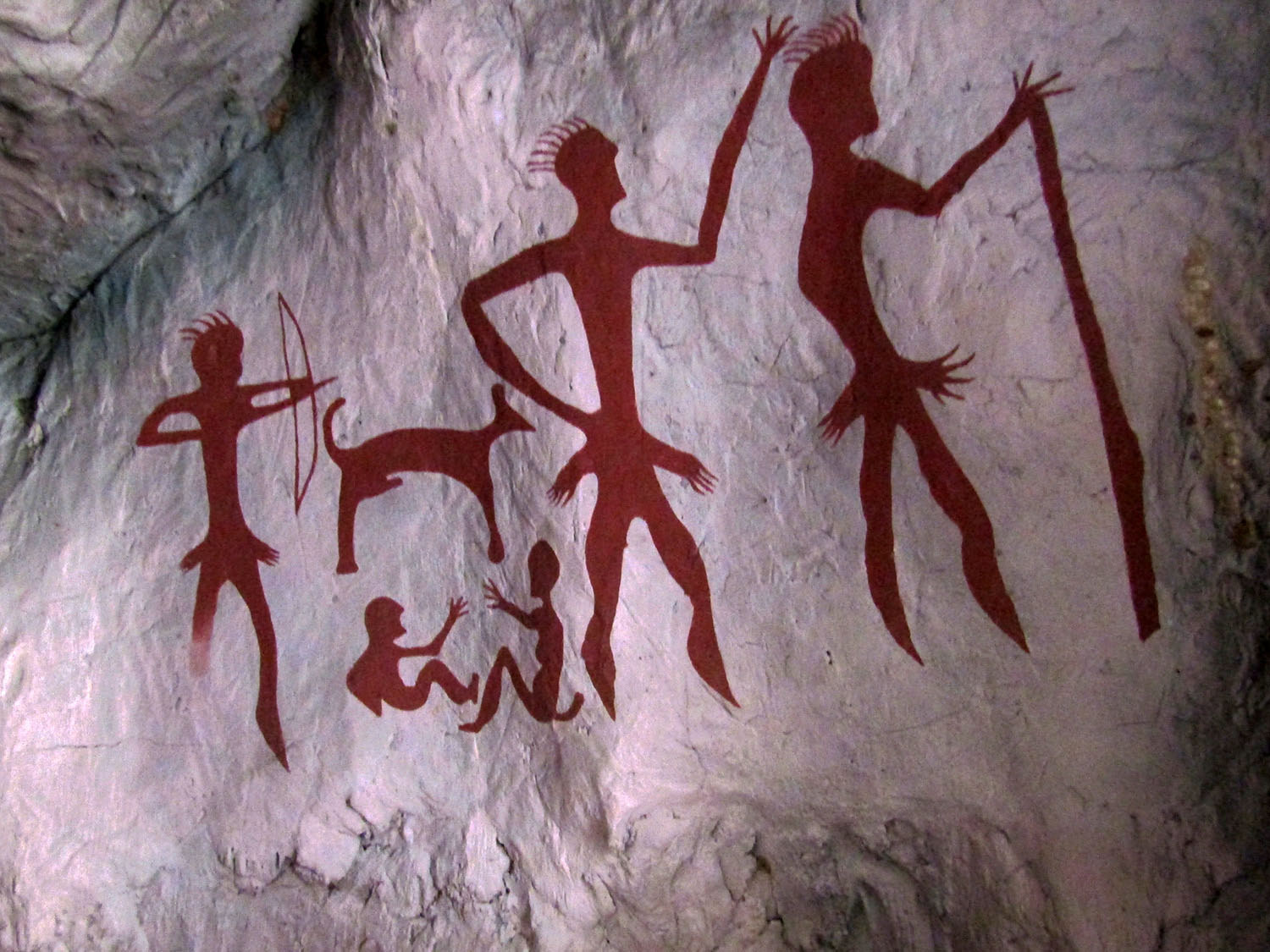
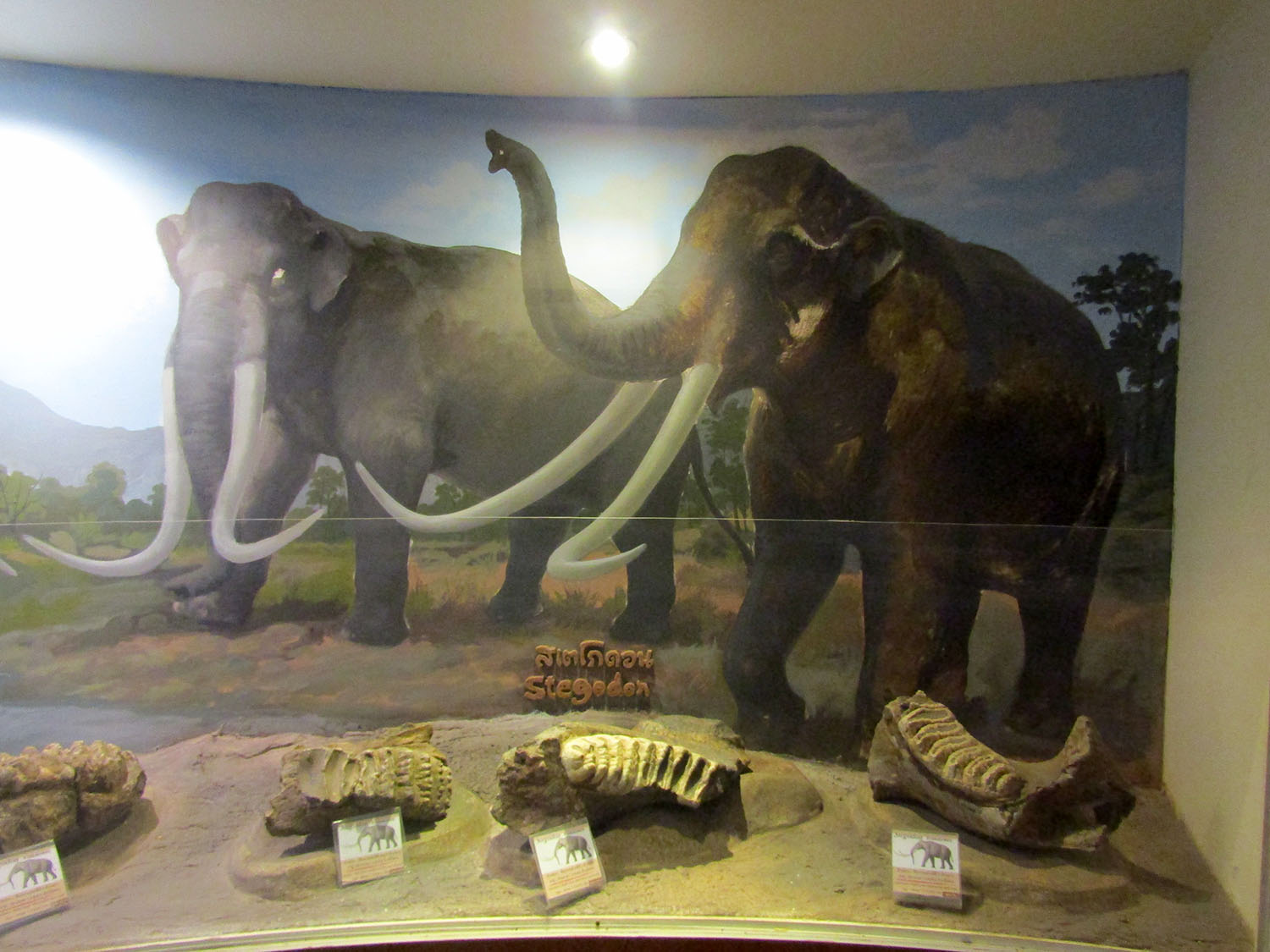
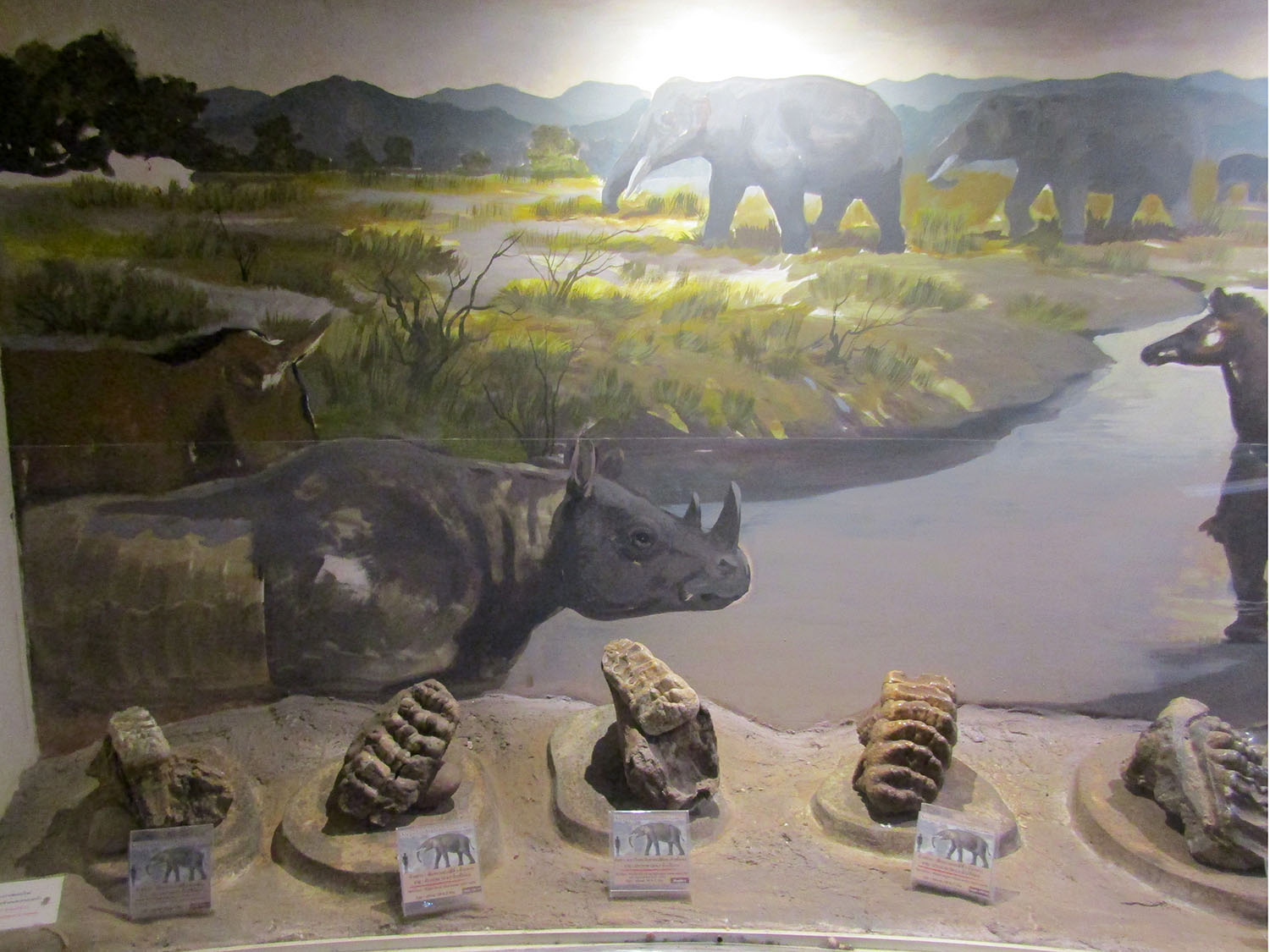
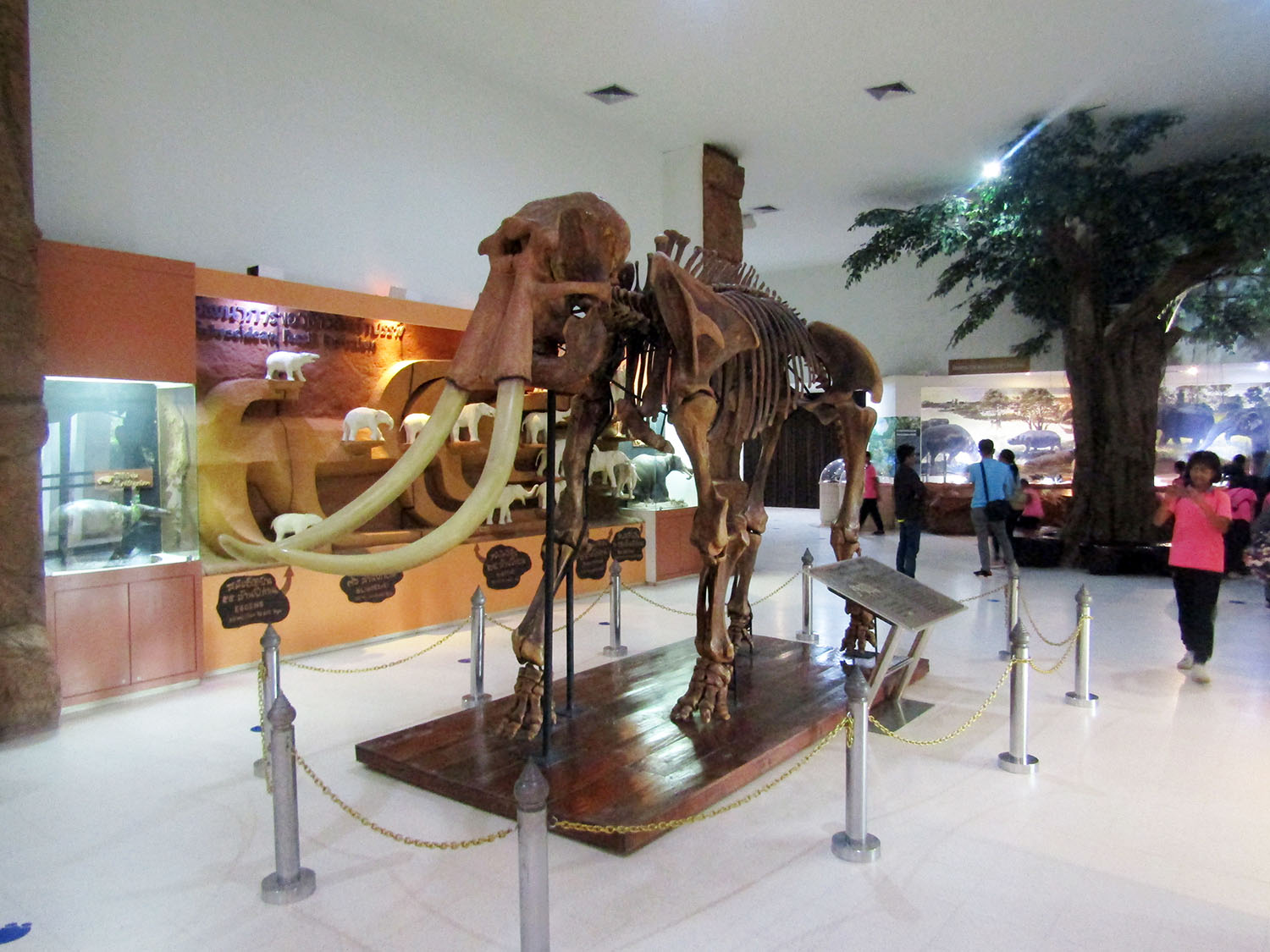
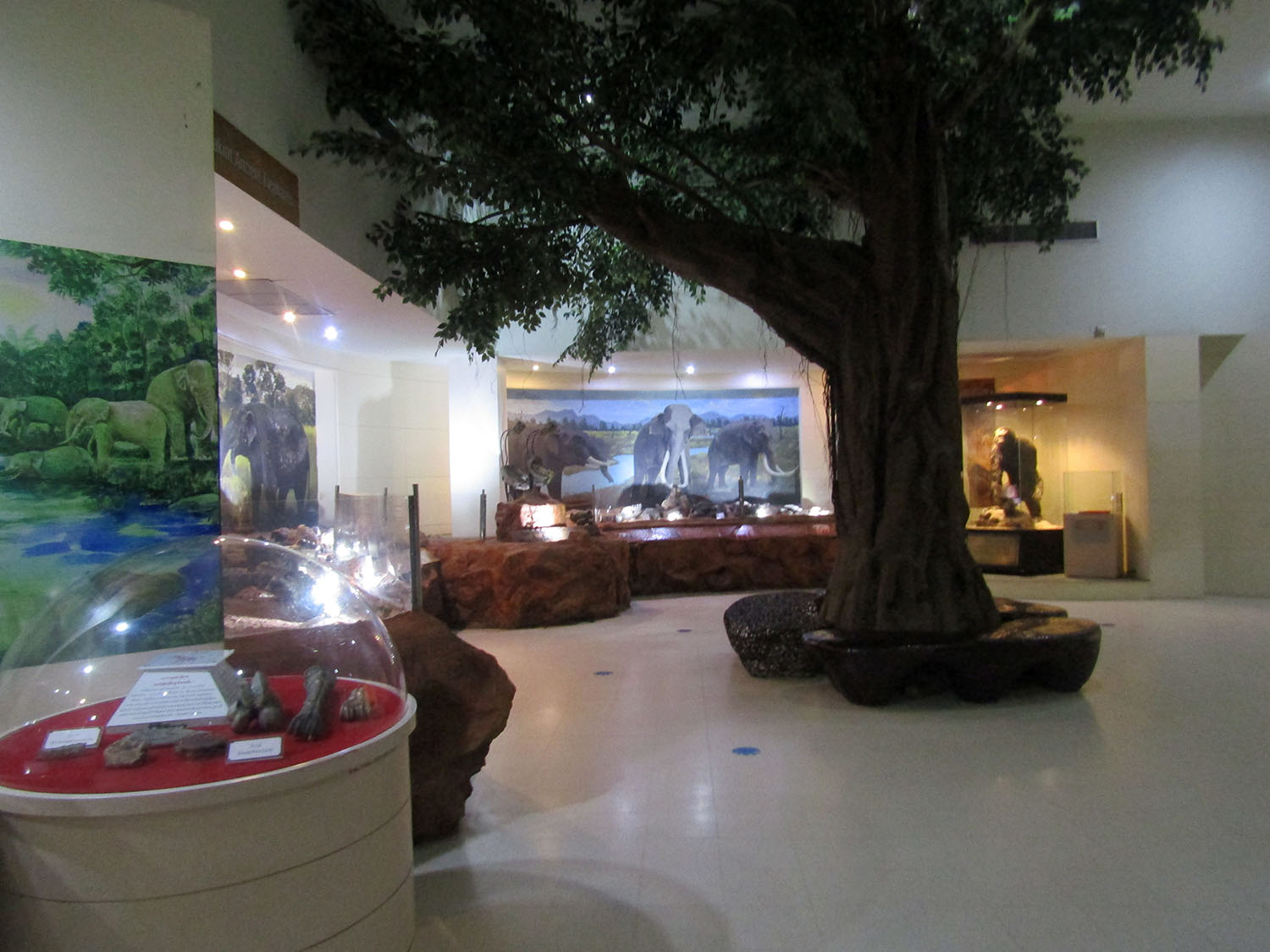
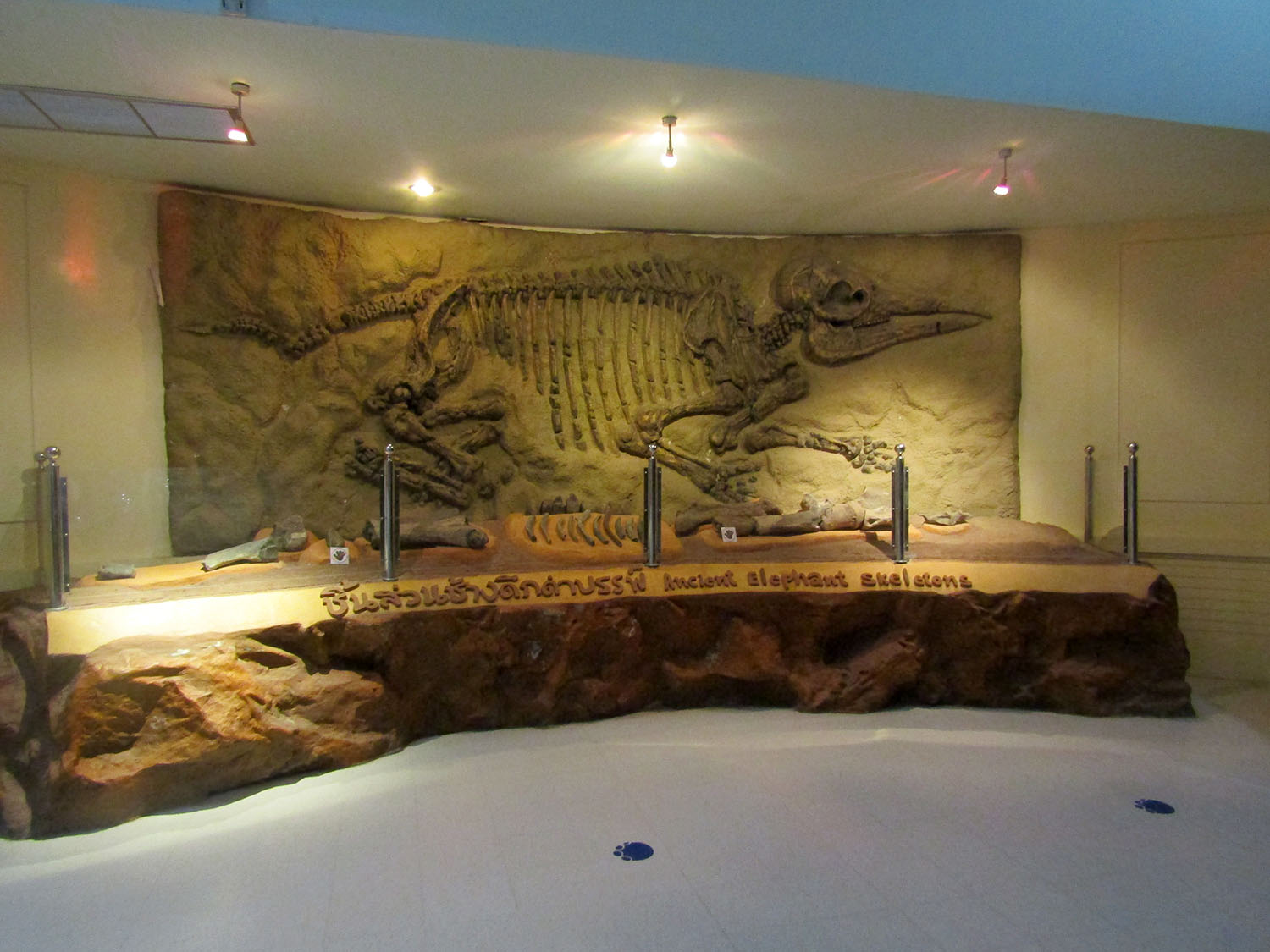
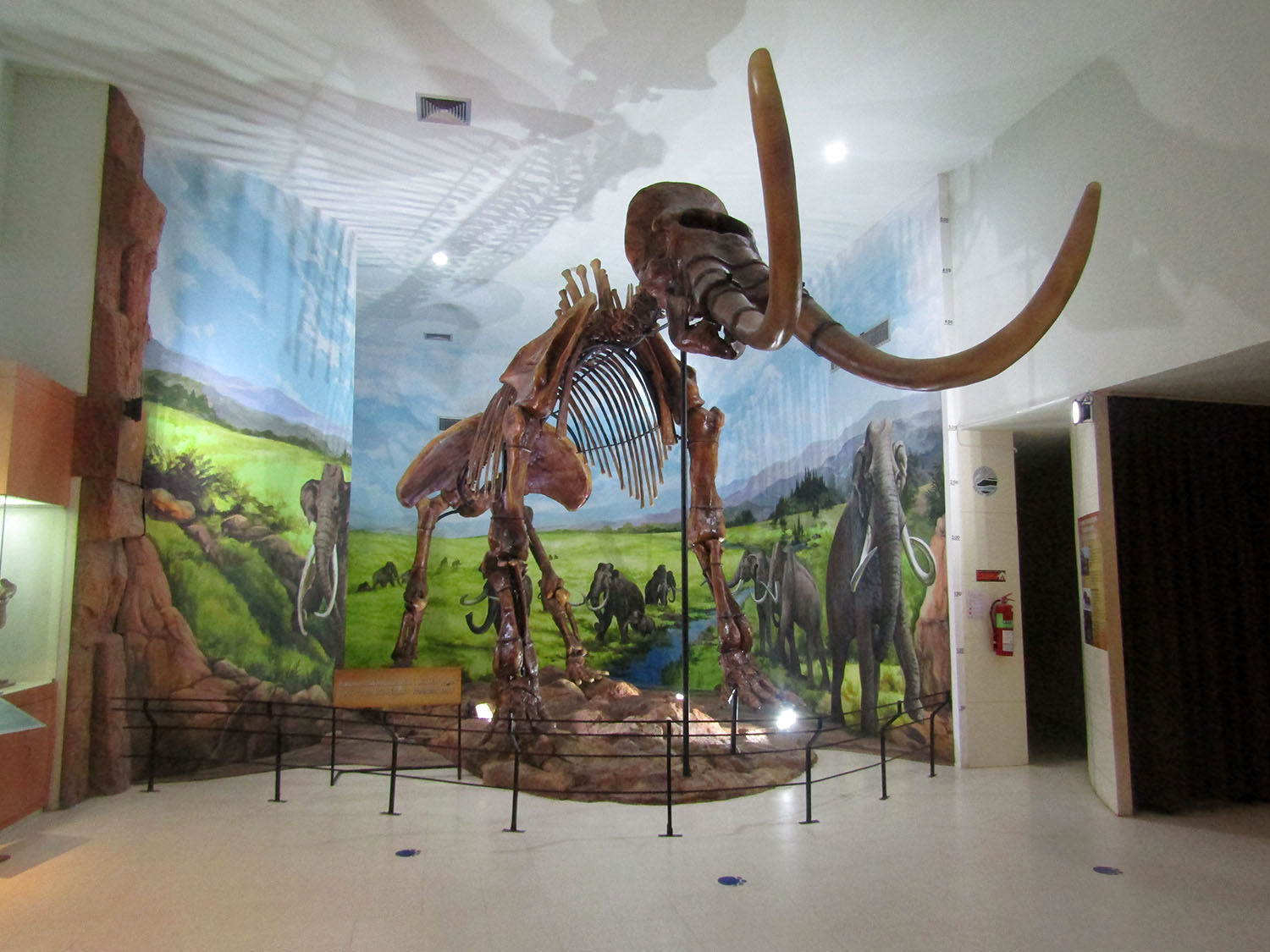
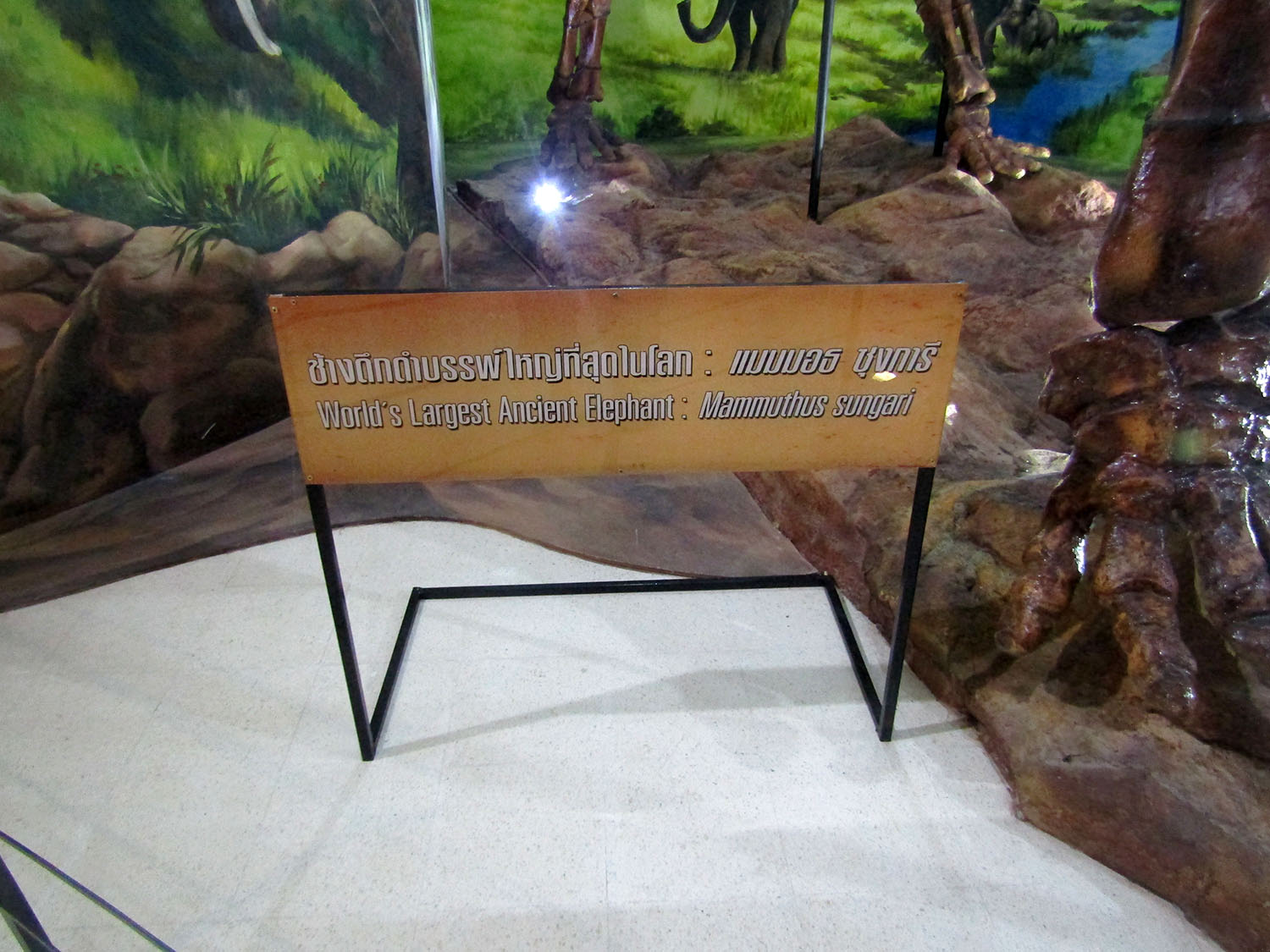
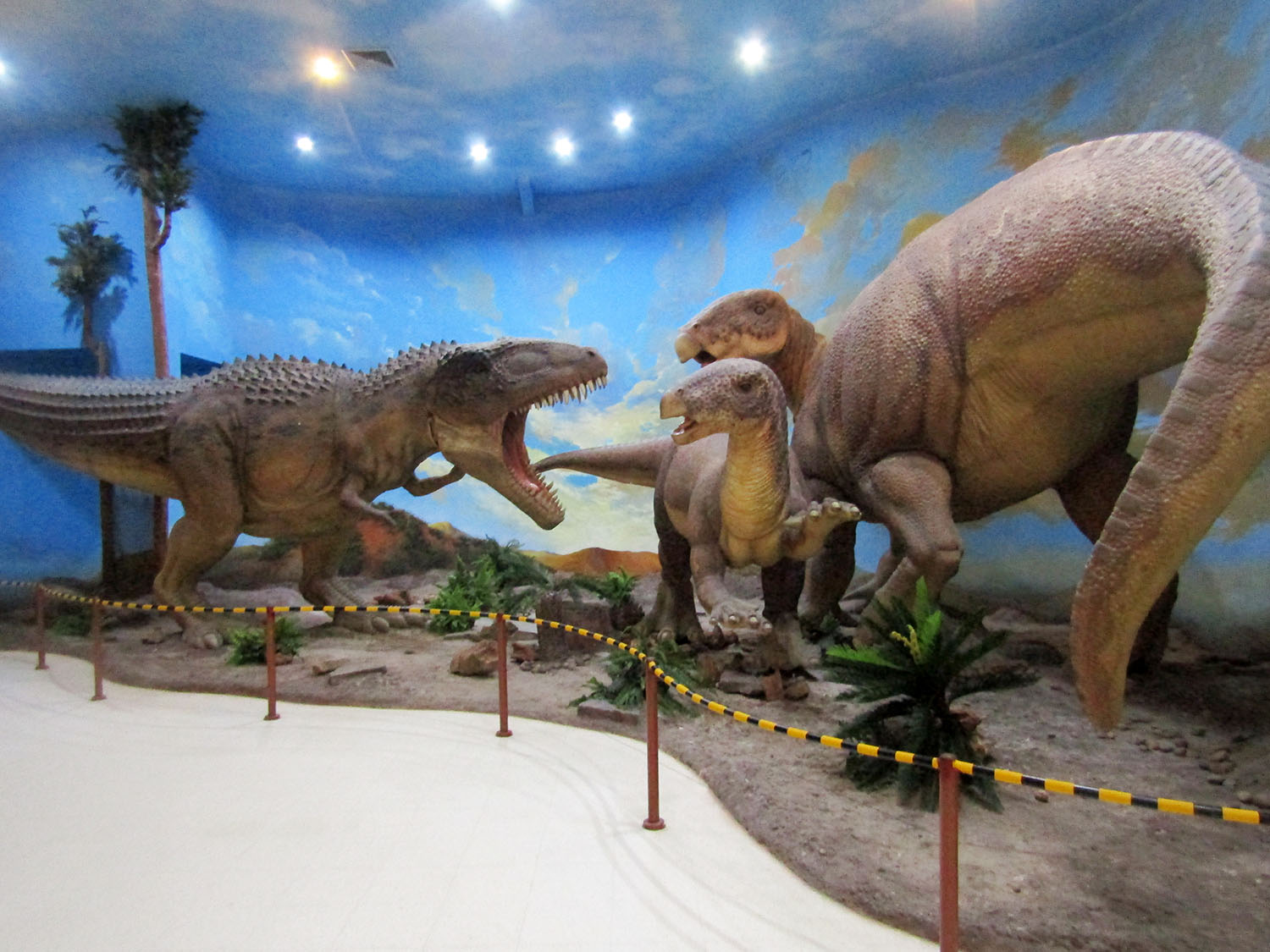
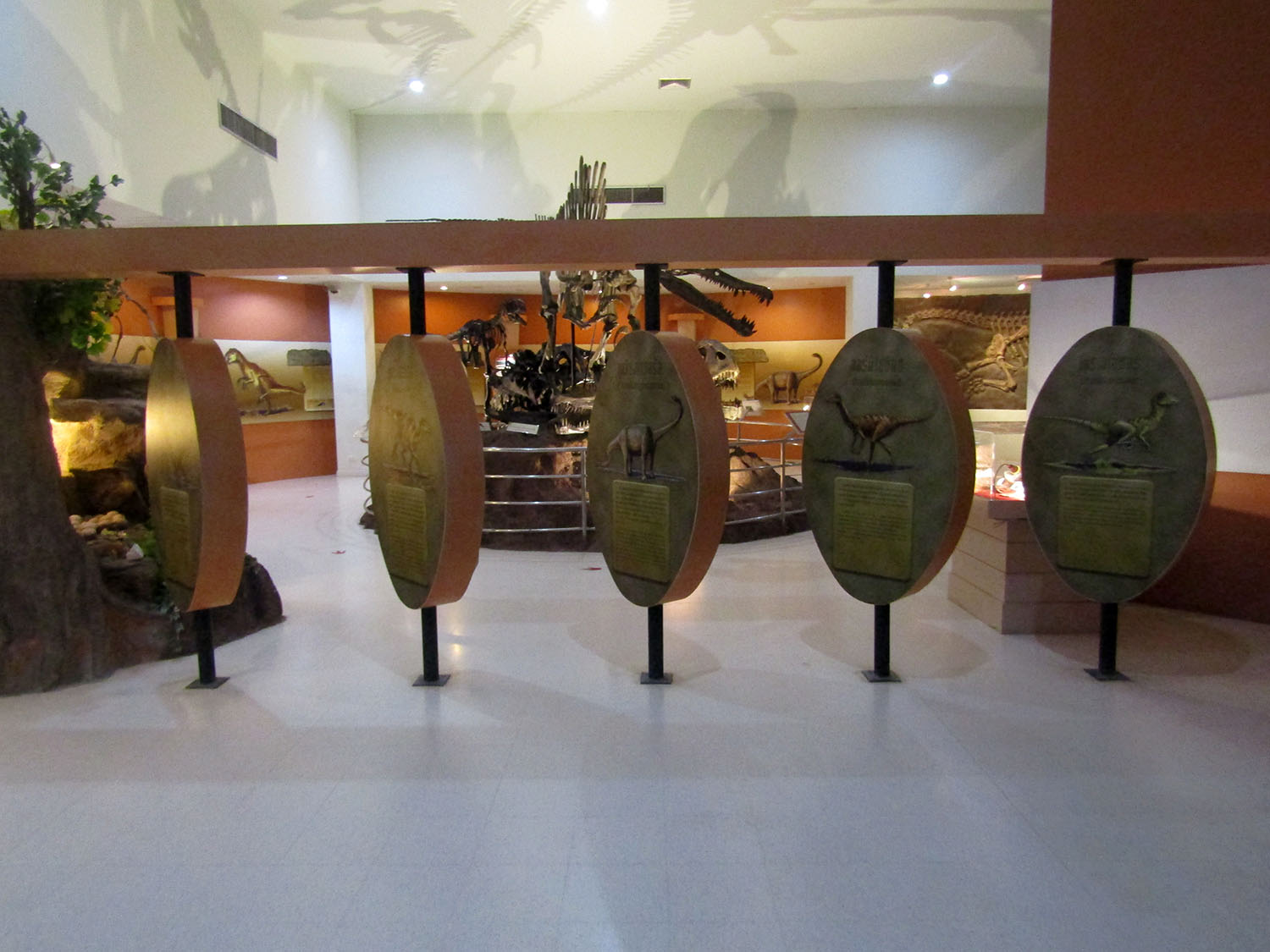
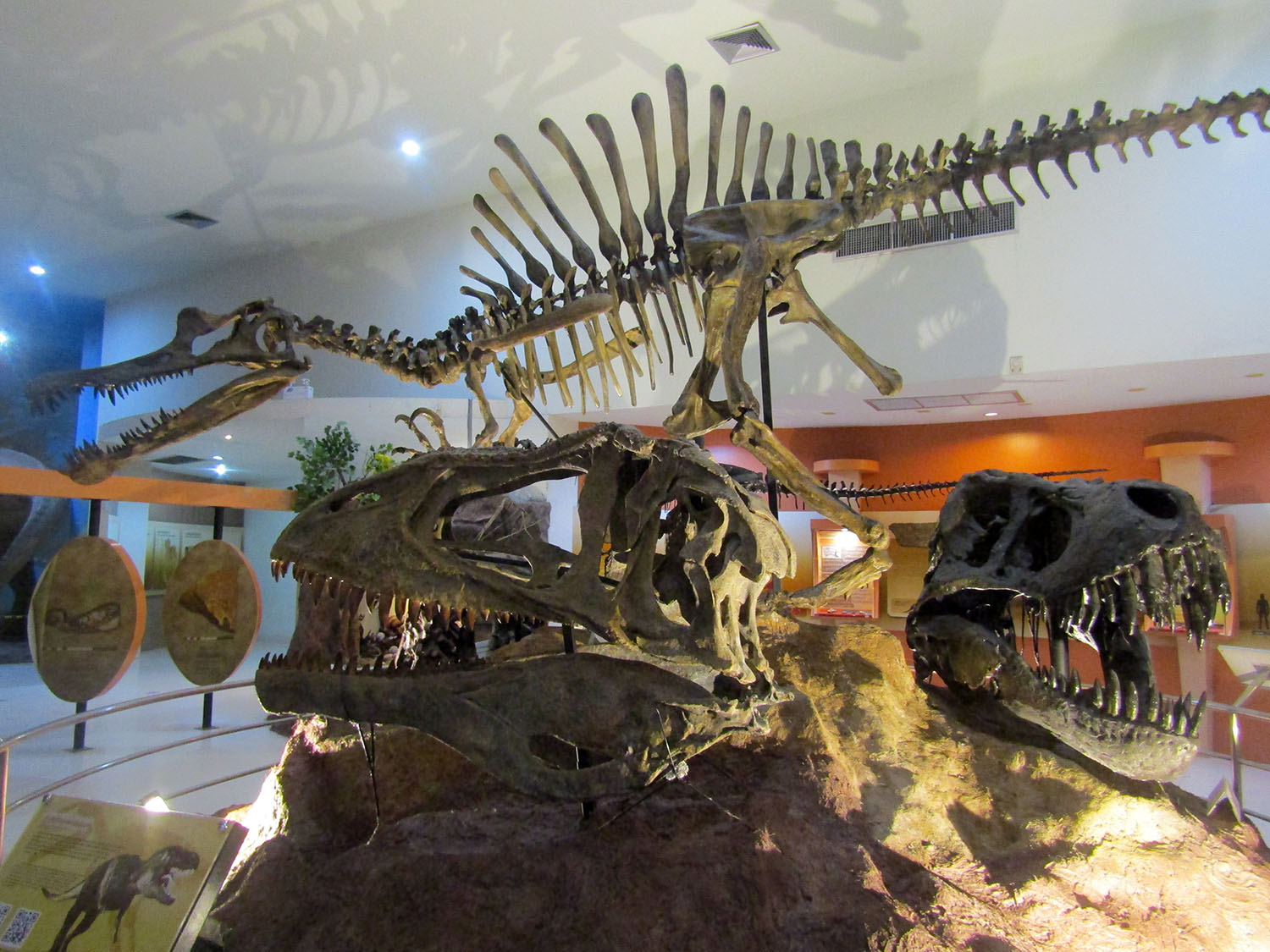
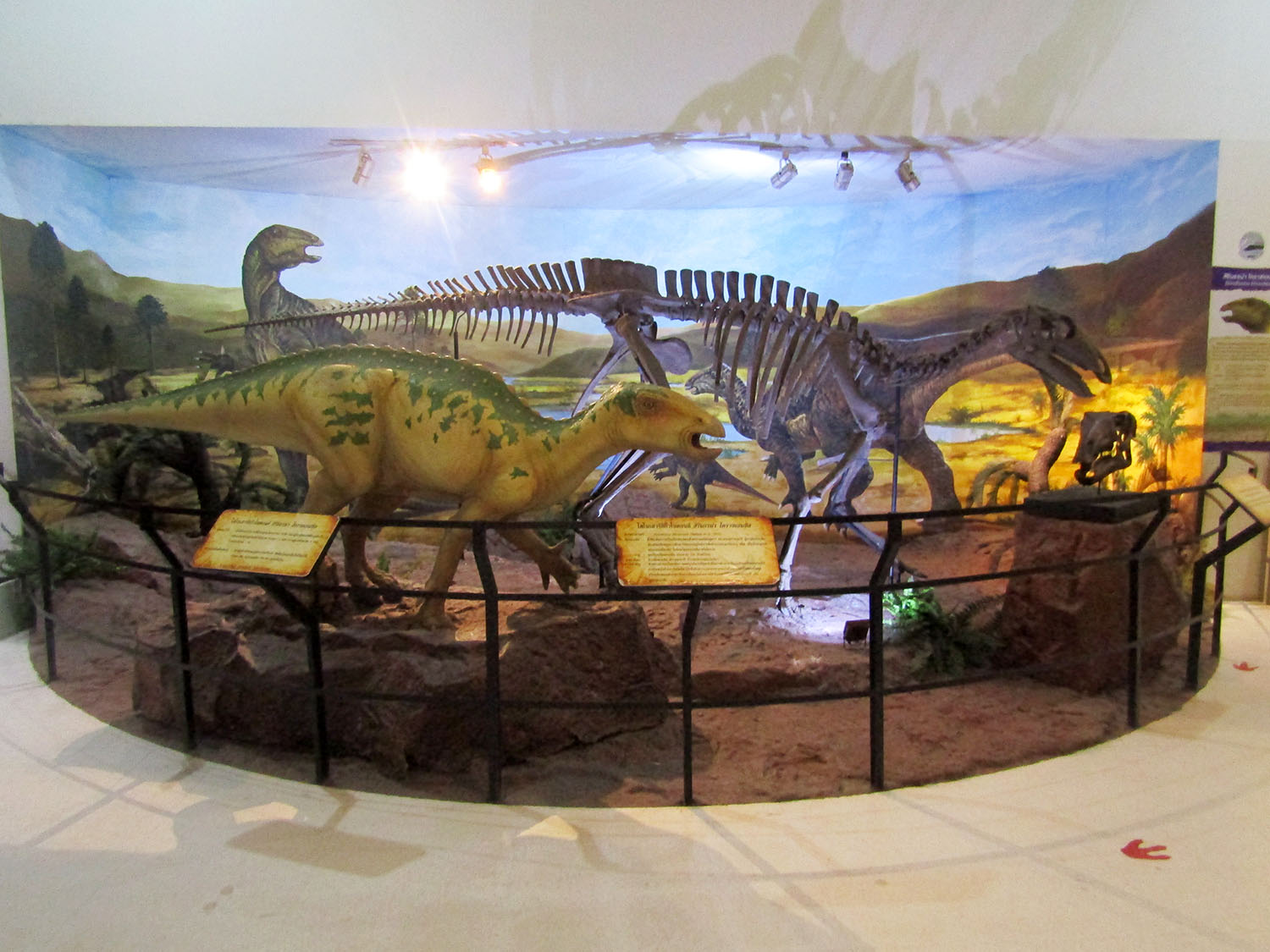
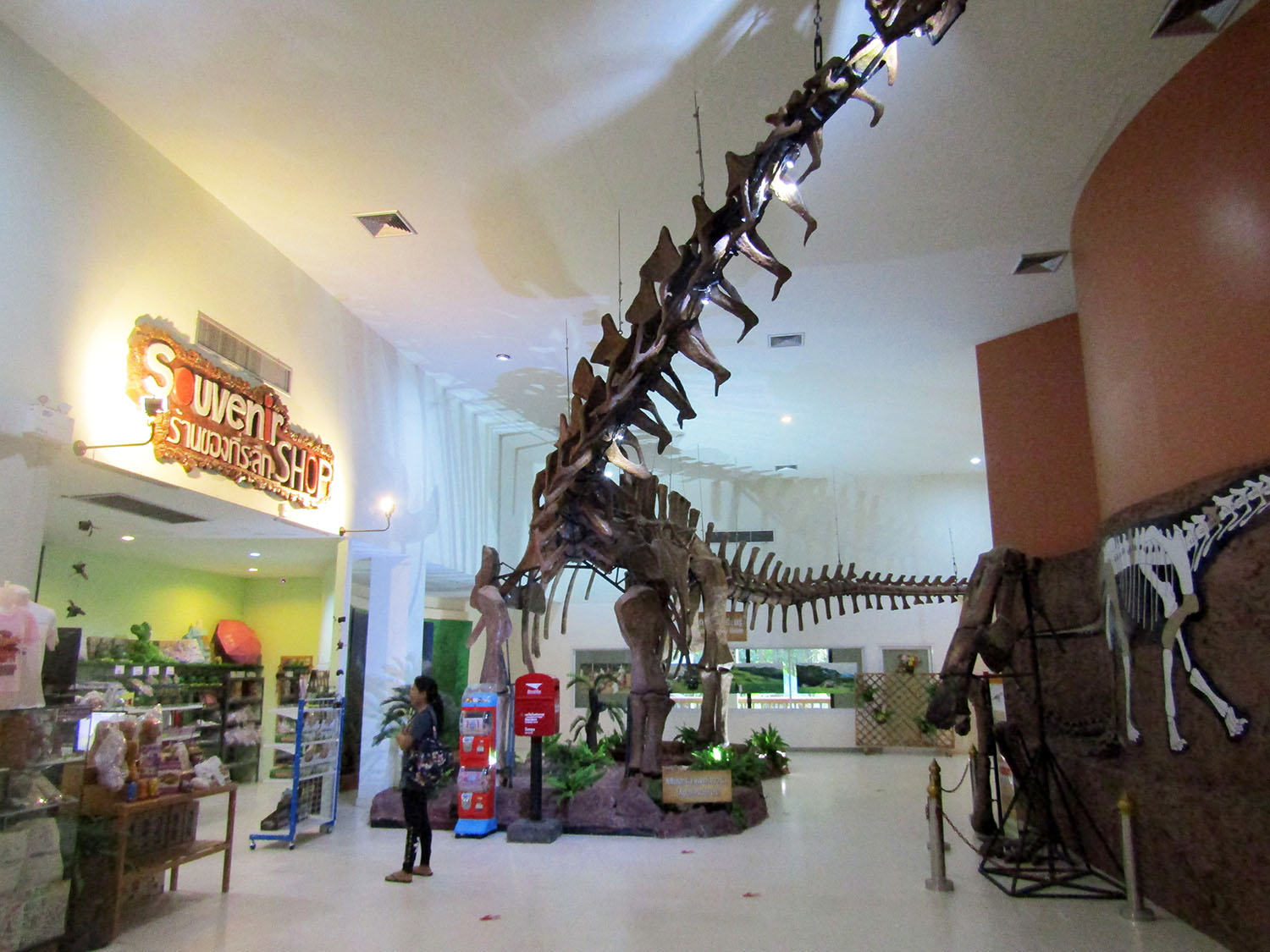
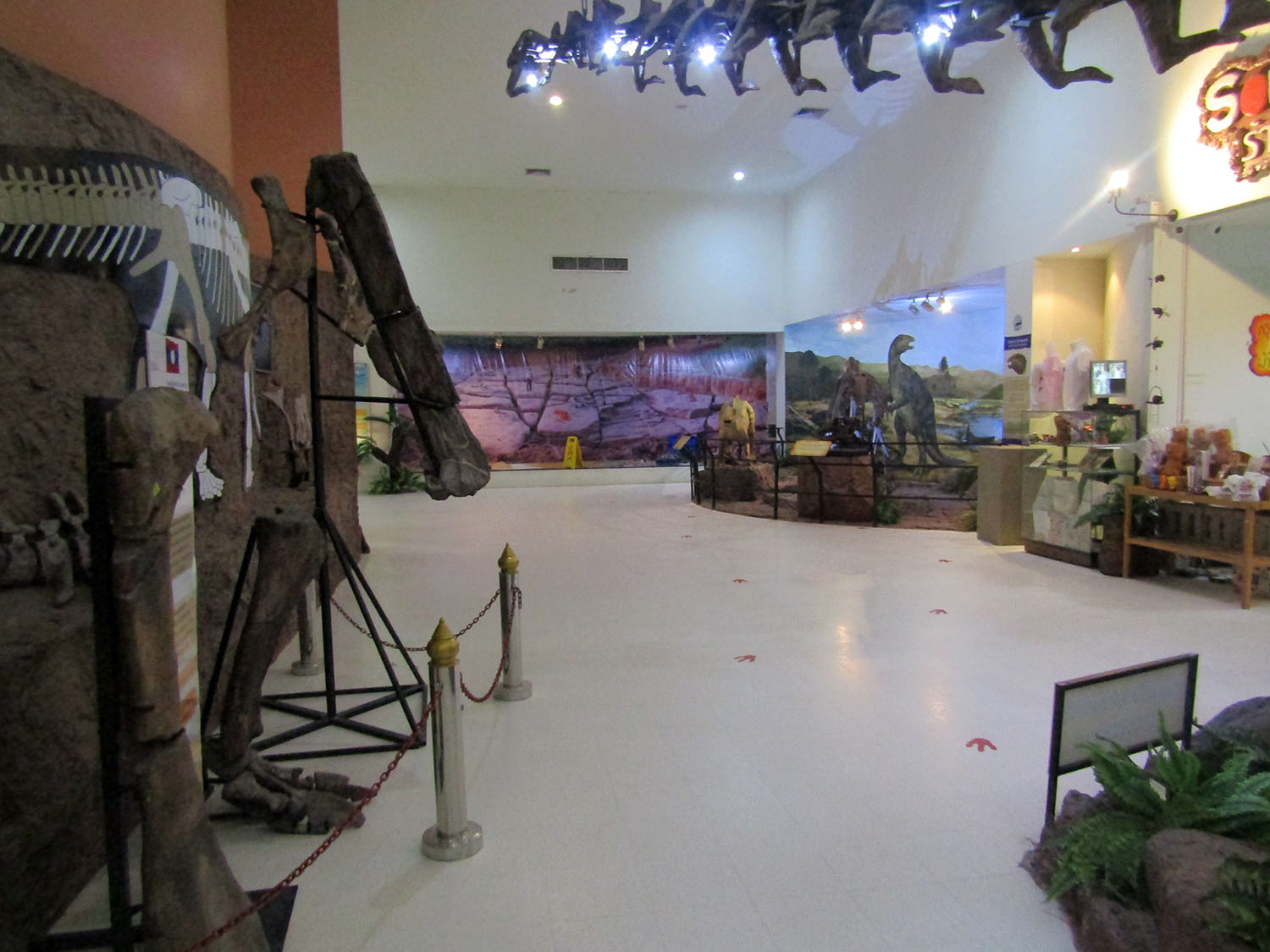 Korat Fossil, Dinosaur and Ancient Elephant Museum, Ampoe Mueang District, Nakhon Ratchasima Province
Korat Fossil, Dinosaur and Ancient Elephant Museum, Ampoe Mueang District, Nakhon Ratchasima Province
Phanom Wan Stone Sanctuary……..With the time moving towards 5pm, I make the decision to proceed to my planned aiming point, even though it may me dark after we arrive. To increase the odds of that, there is one more site on the way which need my attention and that involves a trip along the bypass around Nakhon Ratchasima. Phanom Wan Stone Sanctuary was first built in the 10th Century. It consists of a pagoda built in brick to serve as a place for the Khmer Hindu religion. Later a stone sanctuary was built on top as a shrine built in Baphuon architectural design, 11th/12th Century. The layout is the same as the Phimai Sandstone Sanctuary with both red and white types of sandstone used in construction. This sanctuary is an important source of learning as it was either incomplete or heavily restored or modified over time.
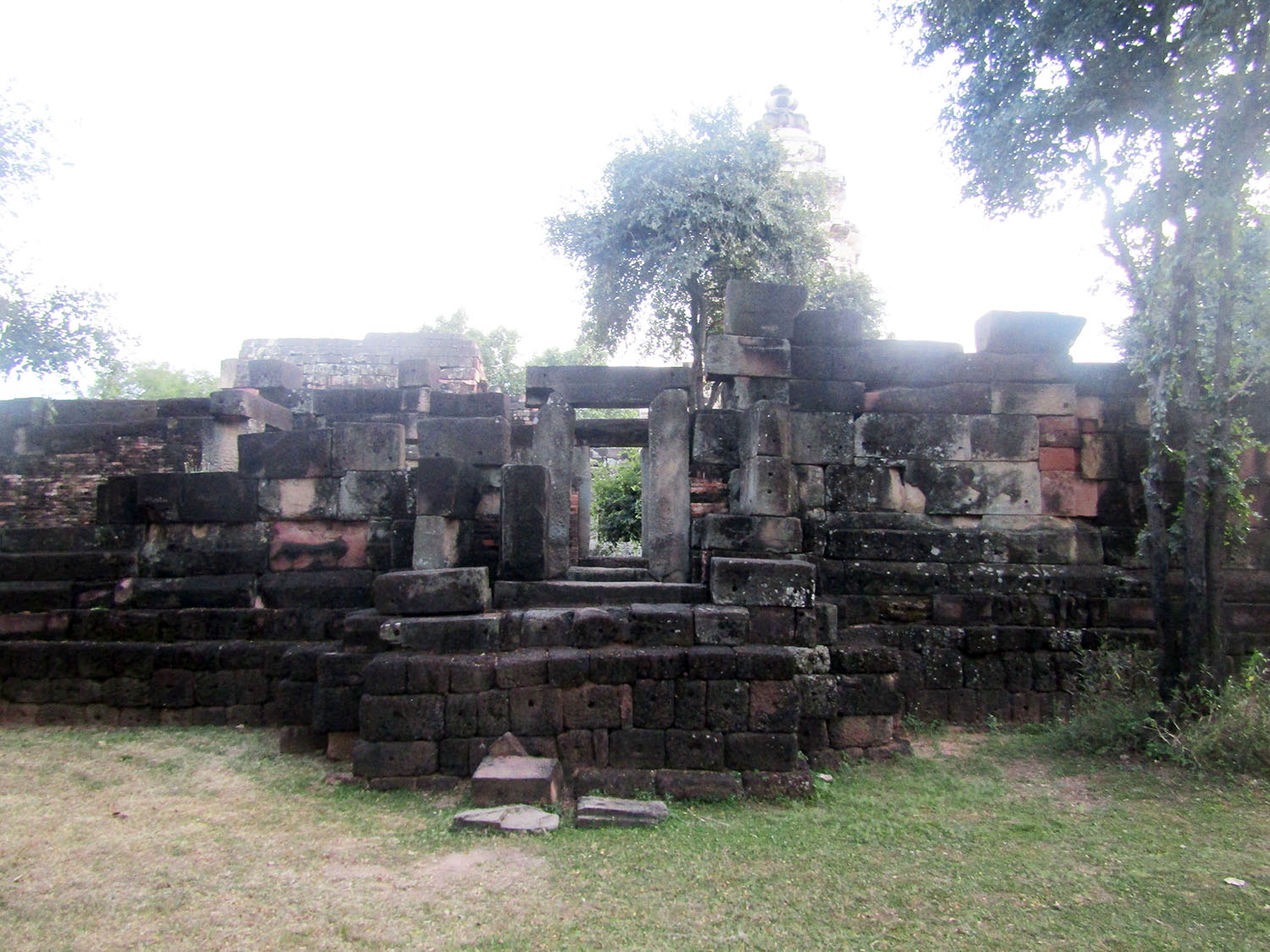

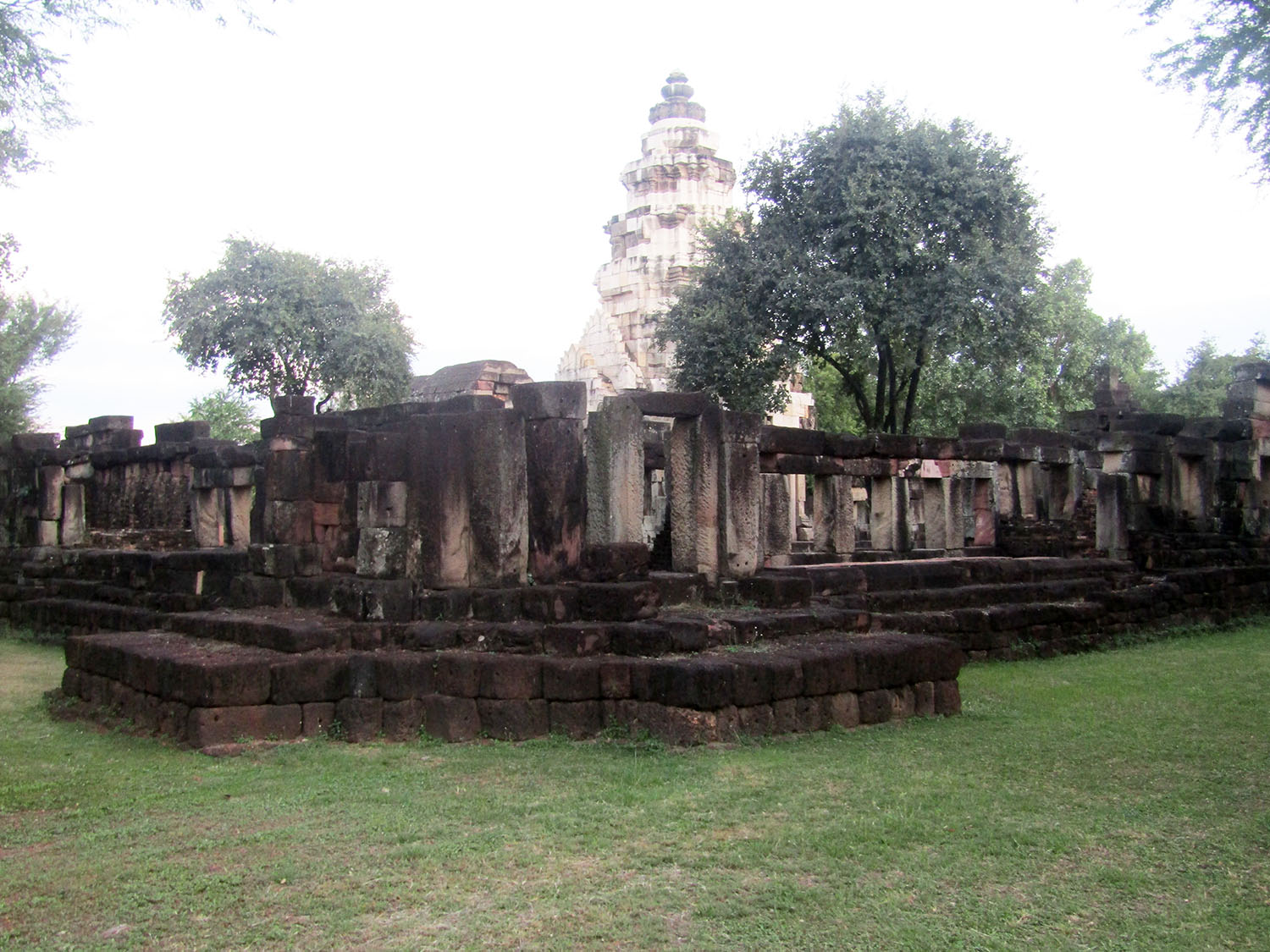
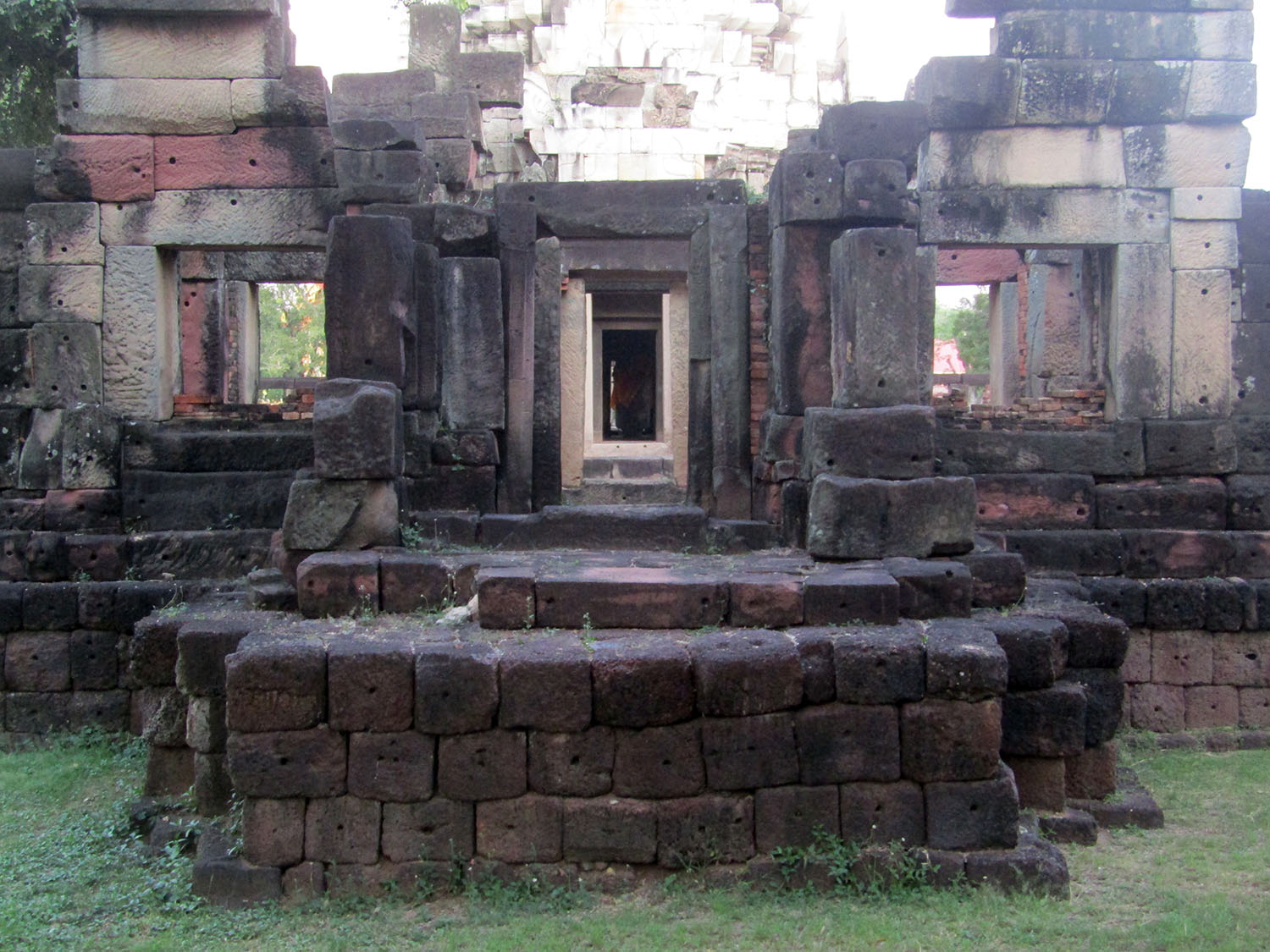
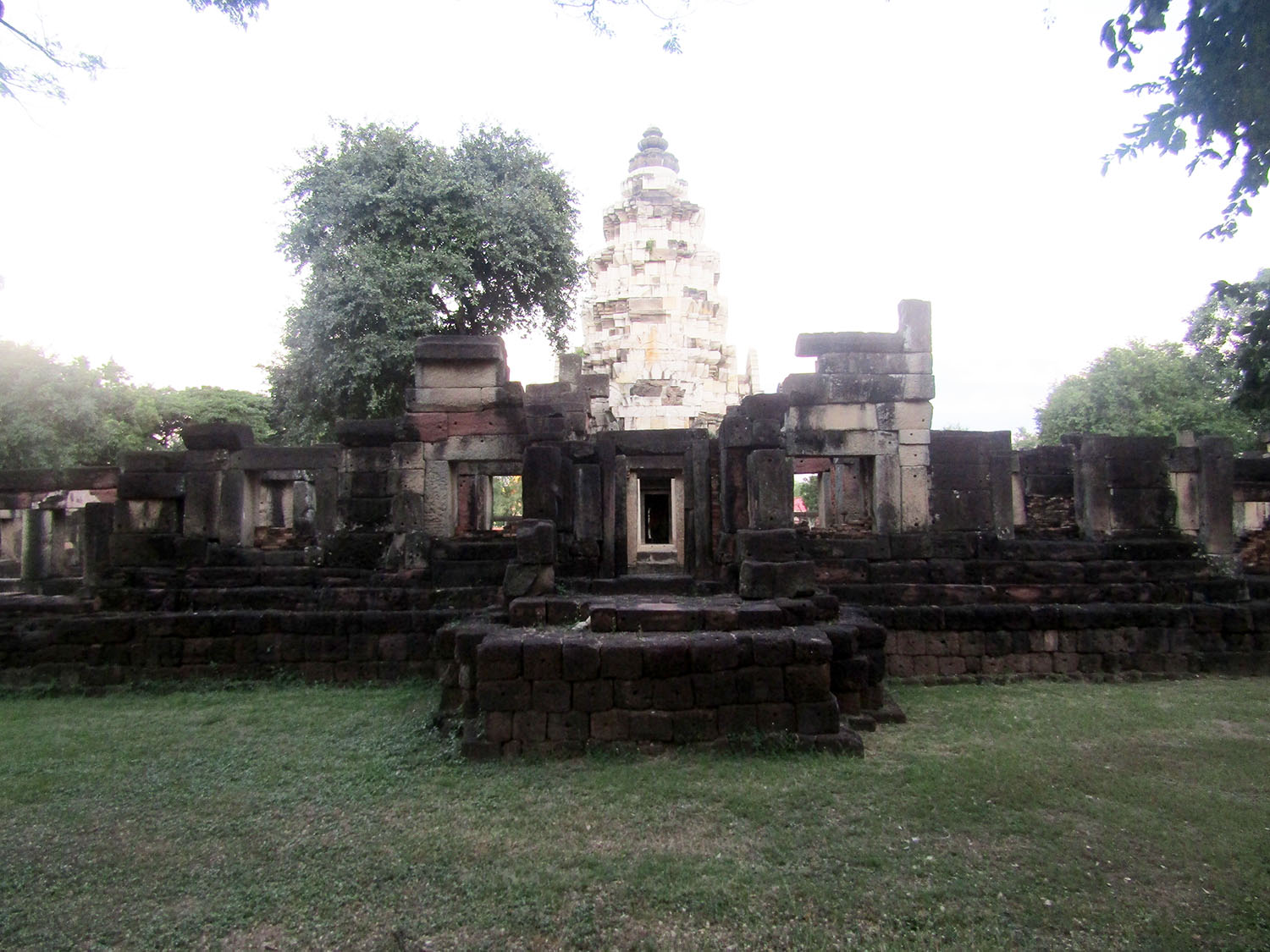
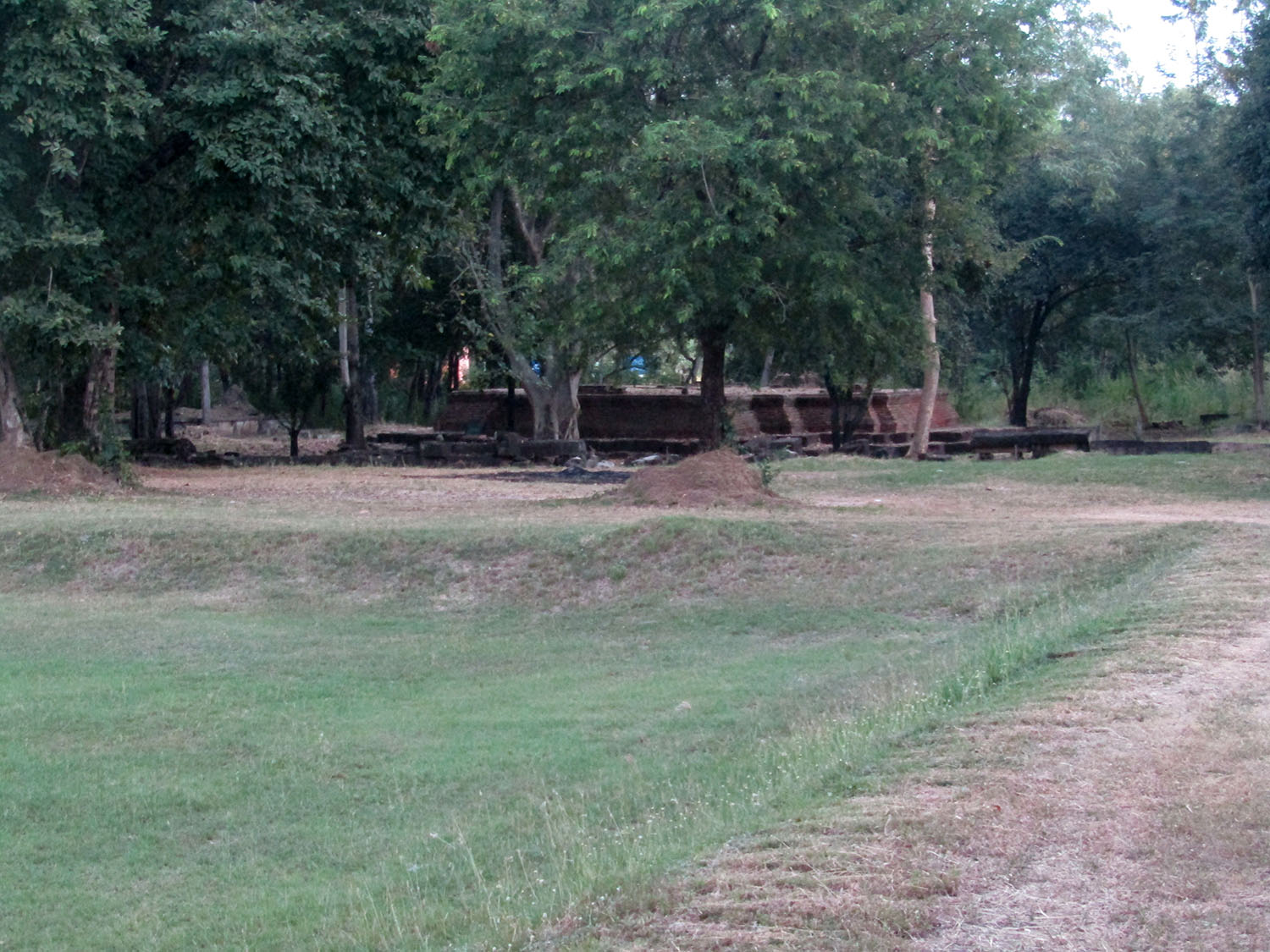 Phanom Wan Stone Sanctuary, Ampoe Mueang District, Nakhon Ratchasima Province
Phanom Wan Stone Sanctuary, Ampoe Mueang District, Nakhon Ratchasima Province
Phimai……..With nights drawing in at this time of year, darkness is imminent. There is just enough light for me to take photos. Then as the time moves towards 6pm, we return to the Mittraphap Highway and head northeast. For once I am not concerned about searching for accommodation after dark. I’ve already selected accommodation and set the GPS. I’m confident this time that Katoon will approve. 30 minutes later we dive into the southern part of Phimai and into the car park at Baan Lita, a modern apartment building. Without offloading our gear, we head out for dinner at a restaurant in the main street recommended by the staff at Baan Lita. More than satisfied with that, we can now check out our room and we’re more than satisfied with that also.
Next Page.
Next Page.